

STRAIGHT-WEIGHT PERFORMANCE
HIGH PERFORMANCE MINERAL DRAG RACING OIL

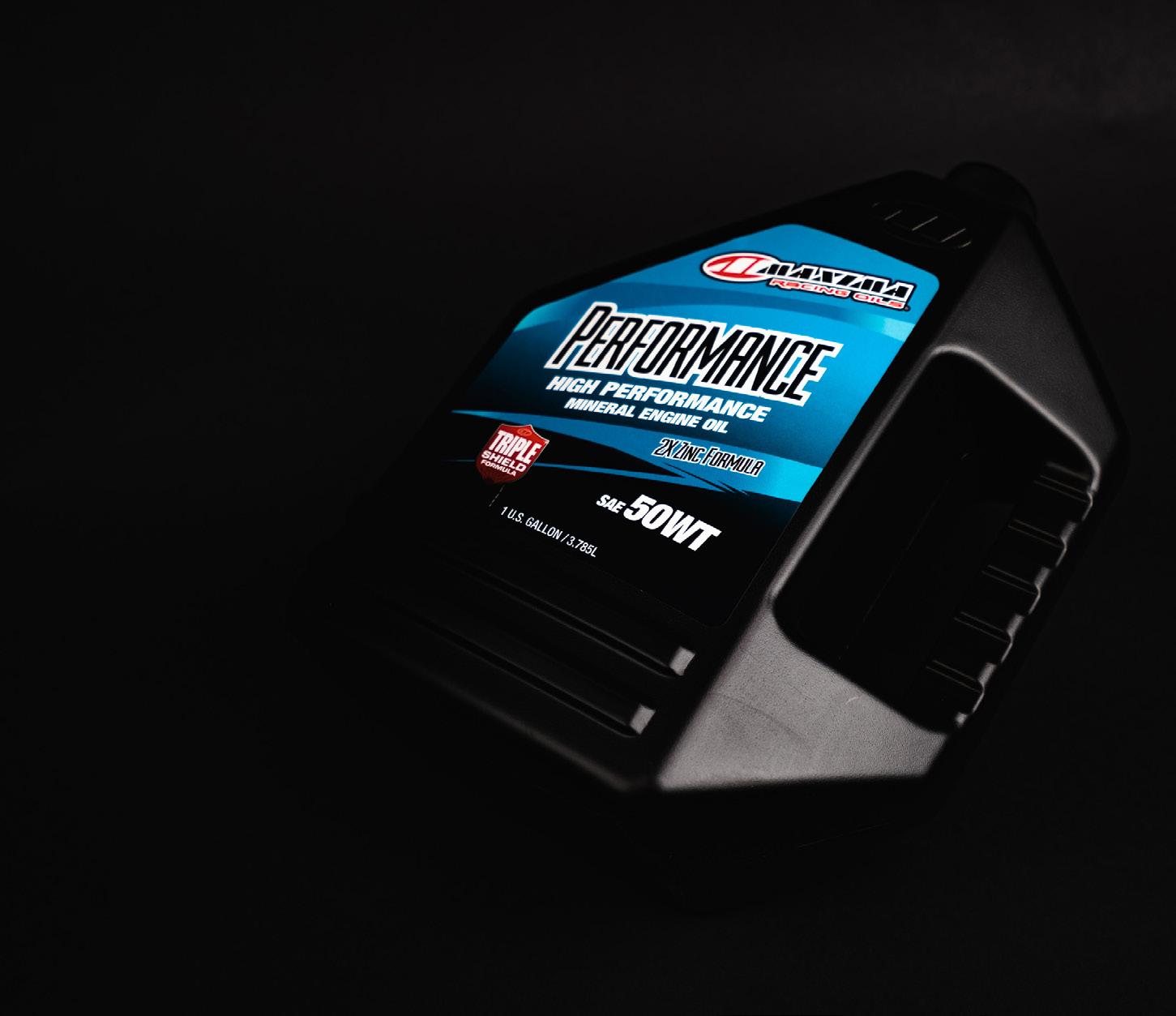
Mineral based engine oil designed to enable maximum power while providing ultimate protection under the most severe race conditions.
• Unique friction modifier system enables maximum power output
• “Stay-in-place” chemistry and 2X Zinc anti-wear system provide lasting protection
• High quality base stocks enable effective ring seal
• Advanced, proprietary additive system keeps your engine clean
• Designed to prevent separation caused by fuel dilution
• Available in 50WT, 60WT & 70WT
EDITOR-IN-CHIEF.............................................................. CHRIS BIRO EDITOR@RPMMAG.COM
V.P. MARKETING/CUSTOMER RELATIONS TRISH BIRO TRISH@RPMMAG.COM
E VENT MEDIA ..................................................EVENTS@RPMMAG.COM
E VENT SUBSCRIPTIONS COORDINATOR SHERRIE WEBER SHERRIE@RPMMAG.COM
ART DIRECTOR ............................................................ JIM MCHARG
PHOTOGRAPHIC CONTRIBUTIONS: MARK GODRAGRACING. ORG, GEORGE PICH, MATT WOODS, LOUIS FRONKIER, BLAKE FARNAN, JERRY GARRISON, NEIL ZIMBALDI, EDDIE MALONEY, WES TAYLOR, STEVEN TAYLOR, DAVID GATES, AND ANDREW RADIOTIS
EDITORIAL CONTRIBUTIONS: CHUCK SCOTT, MARK GODRAGRACING.ORG, TIM BIRO, STAN SMITH, GEORGE PICH, JAY MISENER, EDDIE MALONEY, WES TAYLOR, AND SCOTT FORBES
TECHNICAL WRITING CONTRIBUTION: CHUCK SCOTT, SHANE TECKLENBURG, TIM BIRO AND JAY MISENER
RPM Magazine is a REGISTERED TRADEMARK of Revolution Publishing & Media Inc. RPM Magazine is a worldwide motorsports publication distributed online.
To subscribe to RPM go to www.rpmmag.com or email Trish Biro at trish@rpmmag.com, or call 519752-3705.
The focus of RPM is to bring a diverse mix of high performance street and race automobiles to life within its pages including race cars, muscle cars, hot rods and street legal machines with an emphasis on the “EXTREME,” including fast doorslammer and outlaw forms of drag racing. Not familiar with these types of cars? They are considered to be the top-shelf of the industry and are on the edge with regard to design, performance, and power!

RPM Magazine does not sell its mailing list or share any of the confidential information regarding its subscribers.
FOR ADVERTISING INFORMATION CONTACT
TRISH BIRO........................... 519.752.3705....... TRISH@RPMMAG.COM
S PECIAL EVENTS MANAGER: CHRIS BIRO EVENTS@RPMMAG.COM
S PECIAL EVENTS SALES: TRISH BIRO: 519-752-3705 TRISH@RPMMAG.COM
SUBSCRIPTIONS/ADDRESS CHANGES: CIRCULATION CIRCULATION@RPMMAG.COM
G ENERAL INQUIRIES: 519.752.3705 INFO@RPMMAG.COM


RPM Magazine has been a world leader in motorsports publishing for 24 years and has support locations in Ontario, Canada, Alabama, Texas, and Virginia, along with contributing writers and photojournalists worldwide.
If you have a story that may fit within the focus and scope of RPM Magazine’s coverage, please email our Editor In Chief at editor@rpmmag.com. Submission of an article does not guarantee that it will be published.
Revolution Publishing & Media Inc. (RPM) / RPM Magazine IS NOT responsible for errors or omissions in ANY advertisement or article. Advertisements may be rearranged or altered at the sole discretion of RPM to allow the ad to fit in the space purchased by the advertiser.
WE RESERVE THE RIGHT TO REFUSE ANY ADVERTISING WHICH WE CONSIDER TO CONTAIN MISLEADING, OFFENSIVE OR FALSE INFORMATION. REPRODUCTION OF ANY INFORMATION HEREIN IS STRICTLY PROHIBITED WITHOUT PRIOR WRITTEN CONSENT.


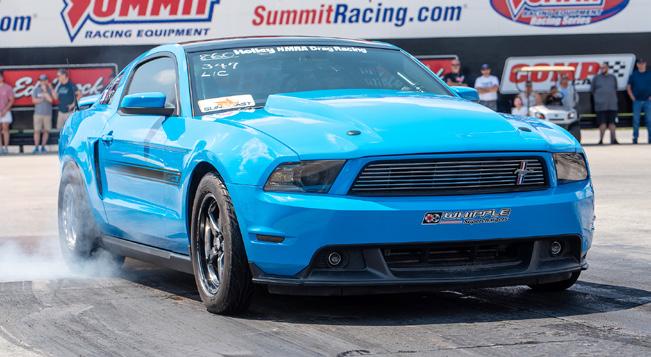

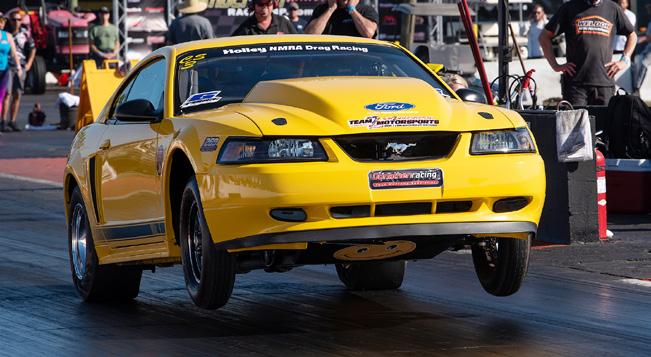



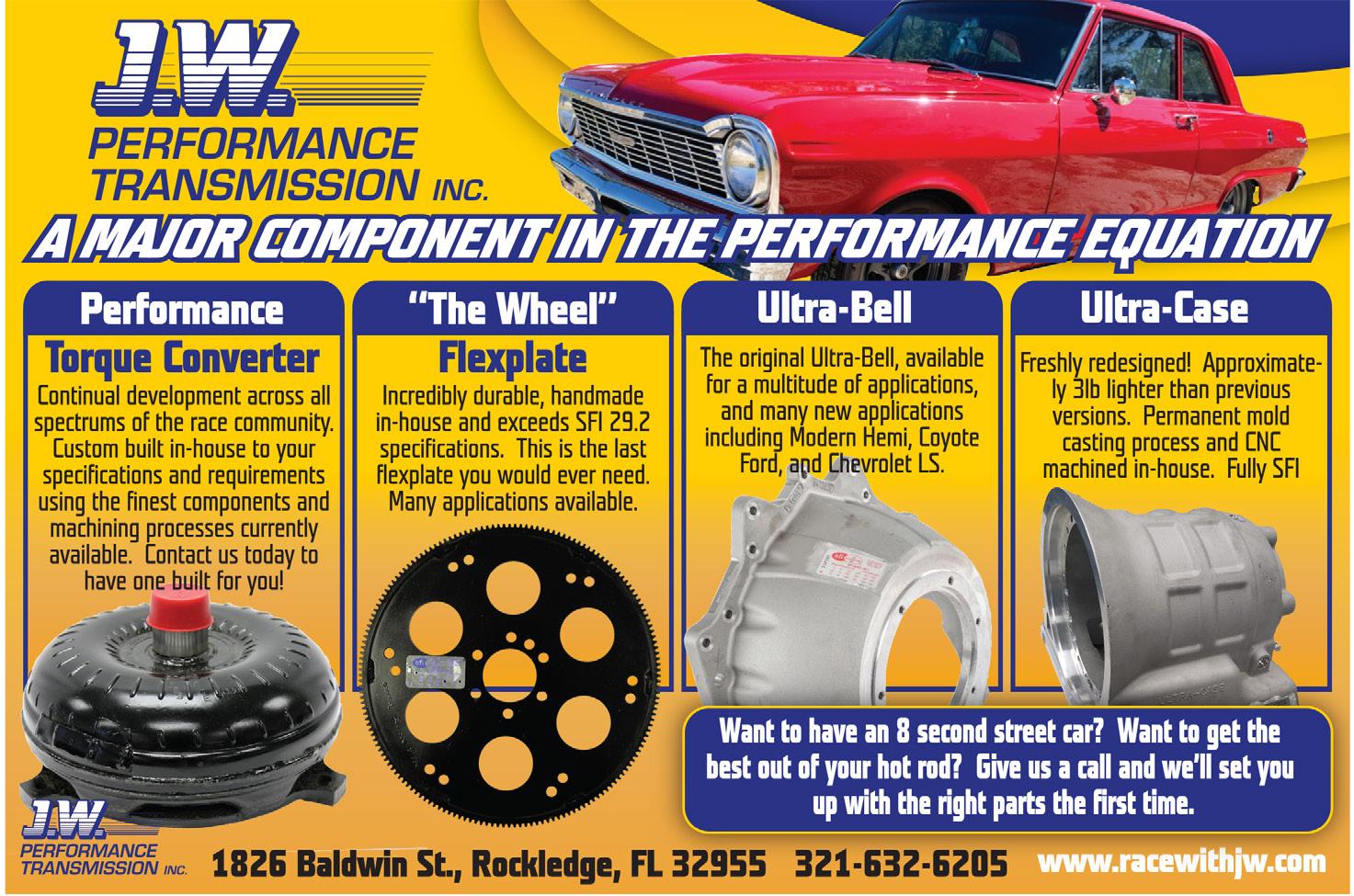
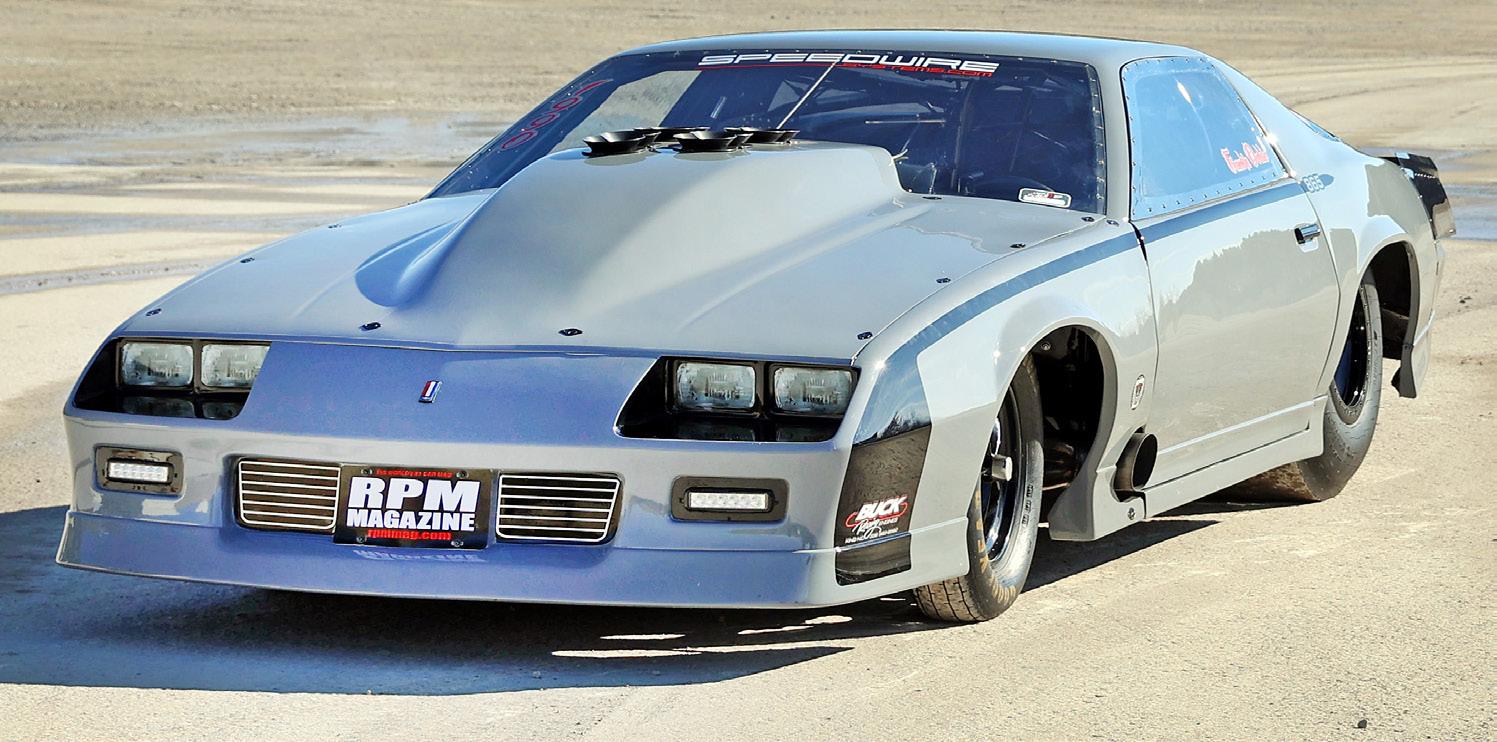
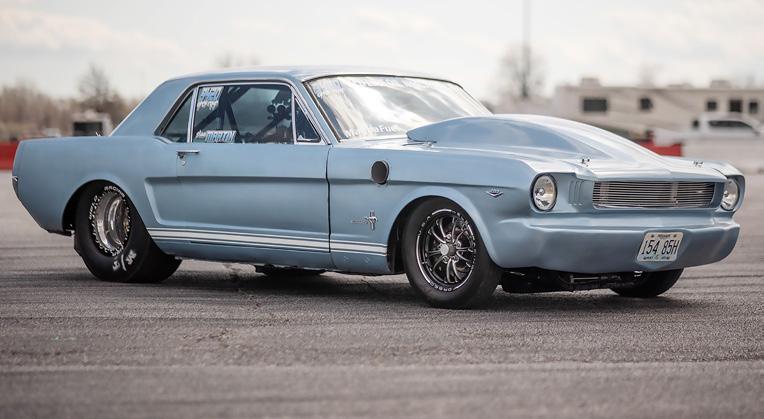
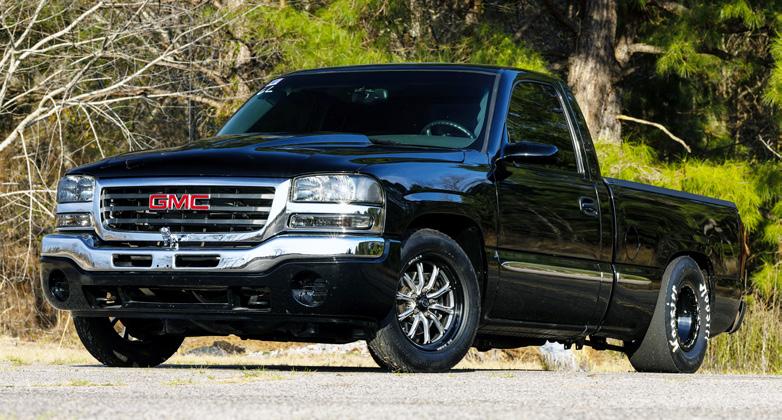
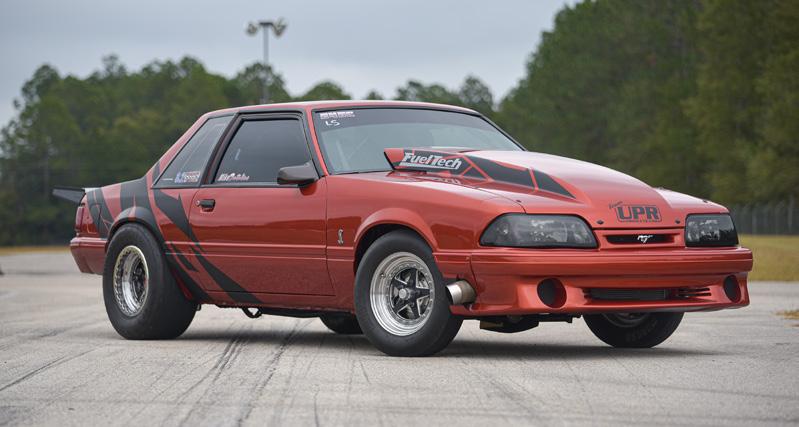
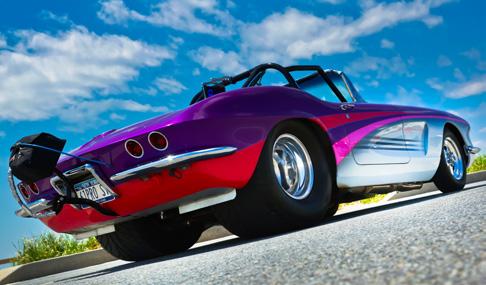
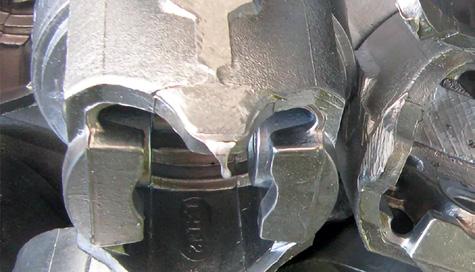
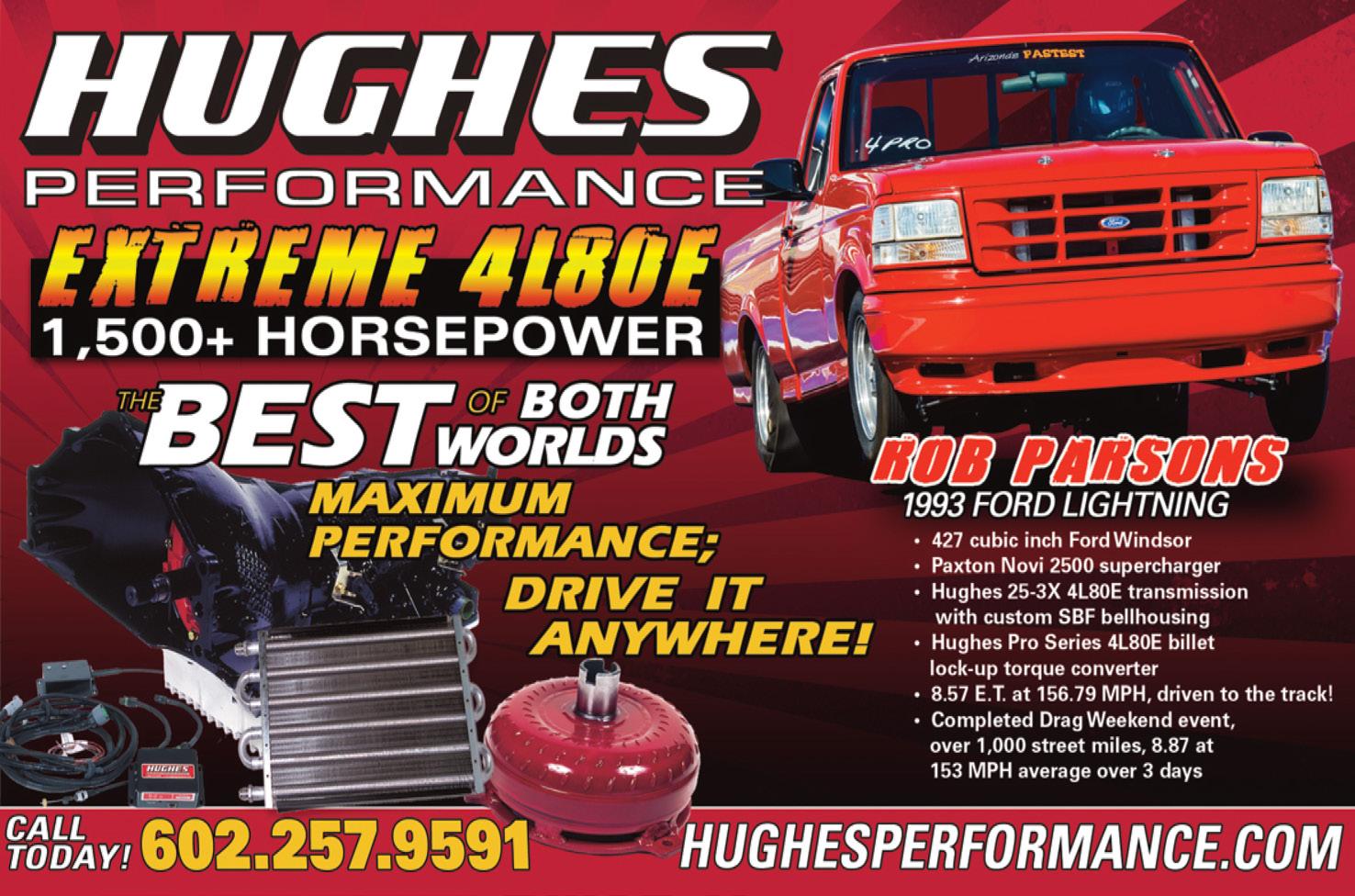

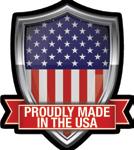
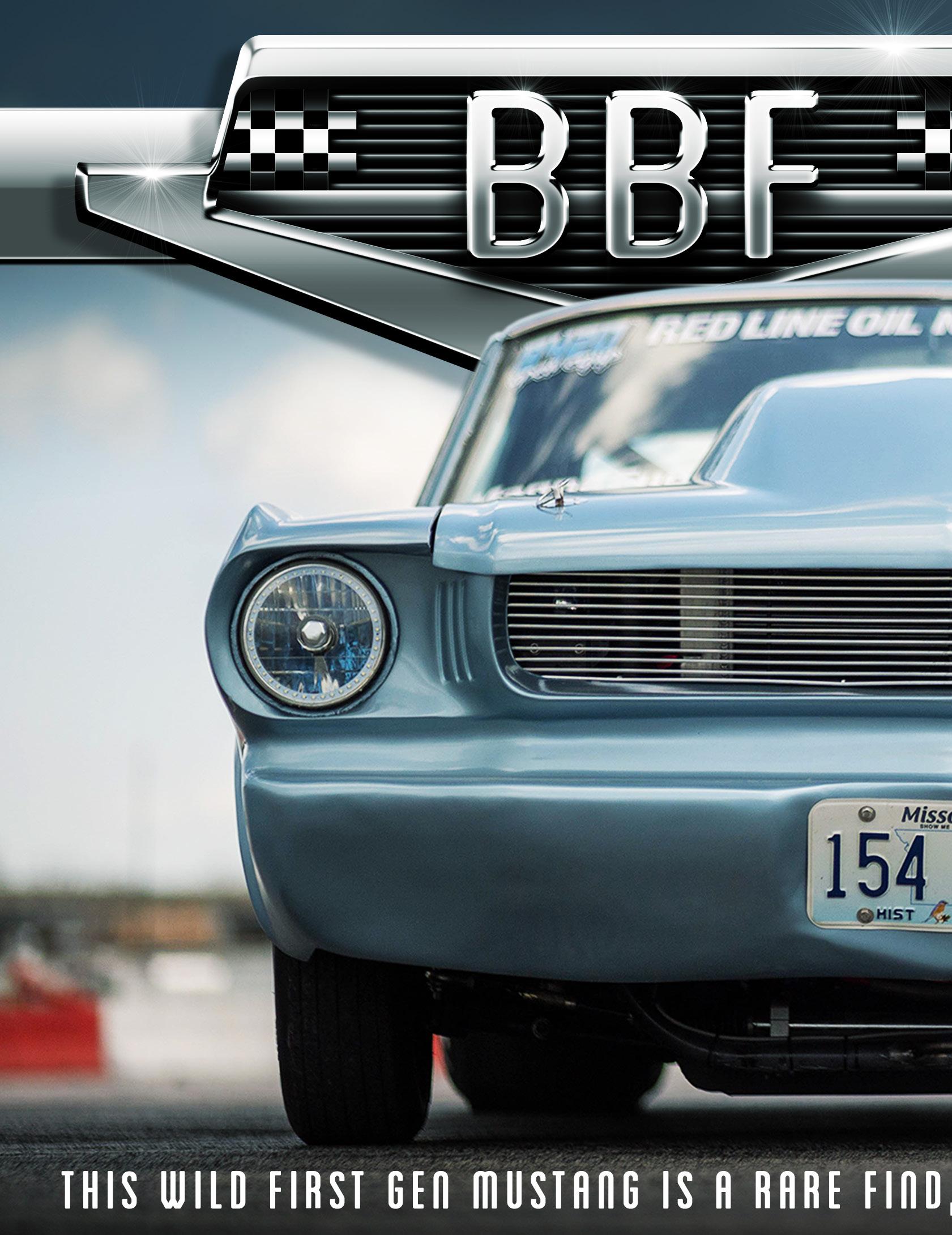
 Story: George Pich Photos: Stephen Taylor
Story: George Pich Photos: Stephen Taylor
Shaun Martin’s 1966 Ford Mustang drag car is rare, not just because it is a 1966 OEM body that has somehow survived almost 60 years, but what makes it really rare is what it is not.
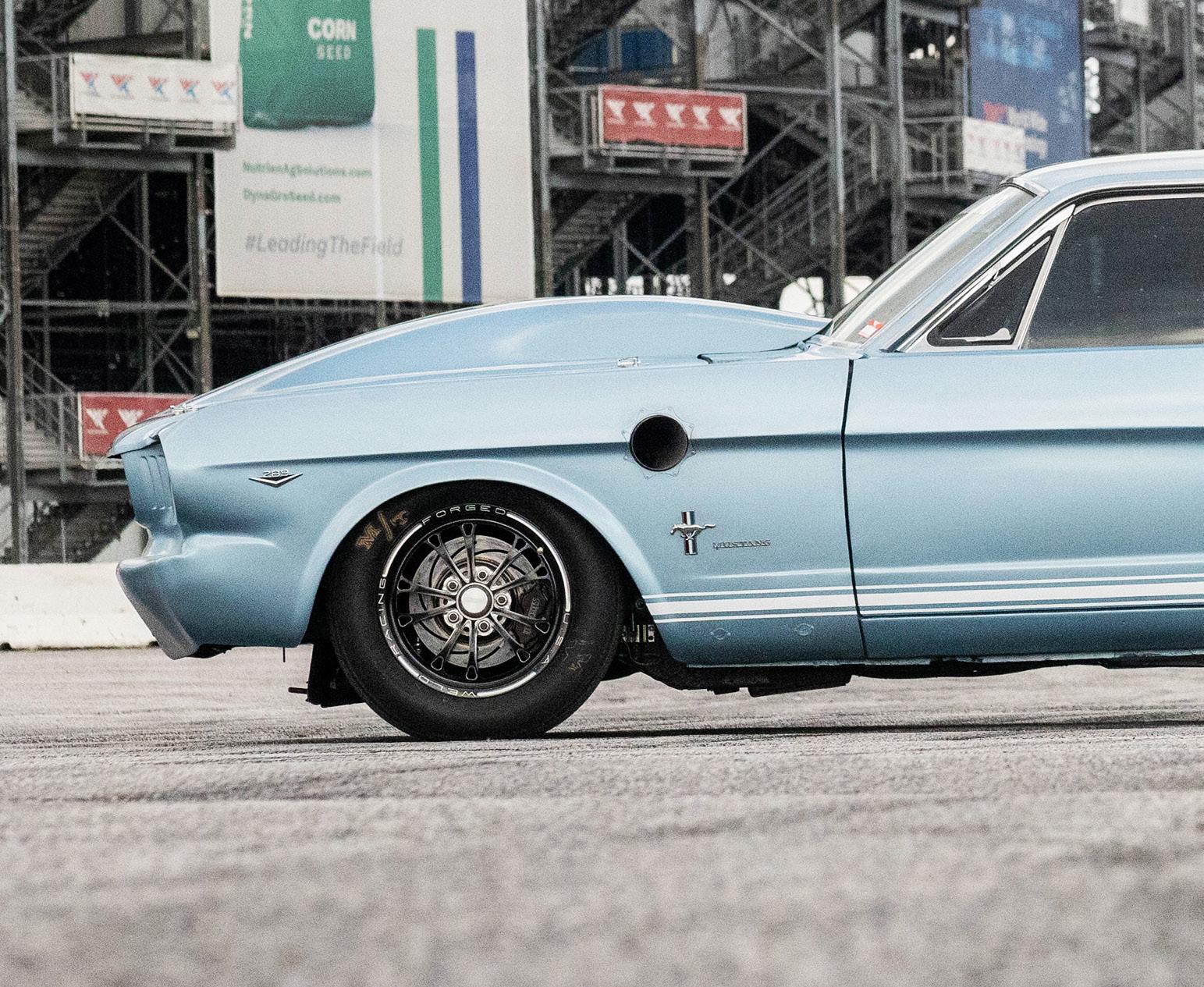
It’s not a Fox Body, not a small block or LS and it’s not boosted. Instead, what we have here is a Ford big block powered, nitrous injected 1966 Mustang Musclecar that has more than enough muscle to get the job done.
The ’66 was not a basket case build or bought race car,

instead, Shaun and his Mustang have some serious history; they actually grew up together. Growing up around cars and racing, Shaun’s dad Everett used to race this very car when he was a kid. “Dad would street race with his buddies and take me to watch him on the streets and also to drag race the car at Mid America Raceway in Wentzville, MO. If he wasn't racing we would attend car shows and poker runs with the car,” Shaun recalled.

Muscle Cars like Shaun Martin,s ,66 Mustang are unfortunately a dying breed.

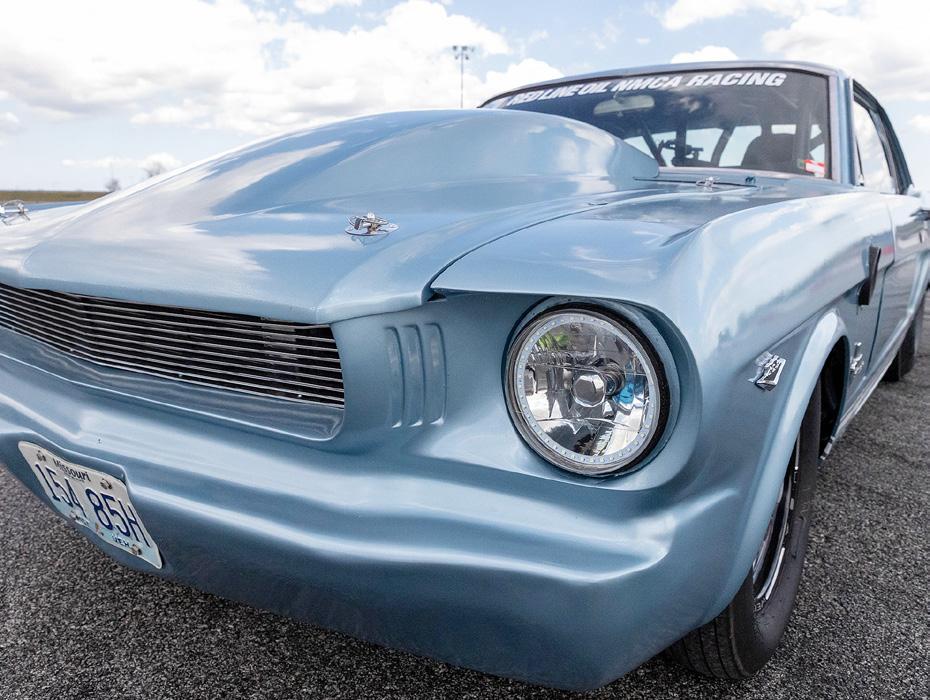

“There were times that he would drop me off at elementary school in the car, as well. Needless to say, my whole childhood was all about drag racing and street racing with my dad.”


The Mustang has been in the Martin family as far back as Shaun can remember. His dad actually bought it from his sister back in 1989, when Shaun was just 2 years old. It was in basically stock form, complete with a 289 small block and Toploader 4 speed transmission. Everett started racing the Stang a few years later and upgraded the cam, carb, added traction bars and eventually an NOS Cheater system.

Rear wheelwells were clearanced during the build to allow for the size able rear buns and most of the orig inal trim remains intact, even those deceiving 289 emblems.




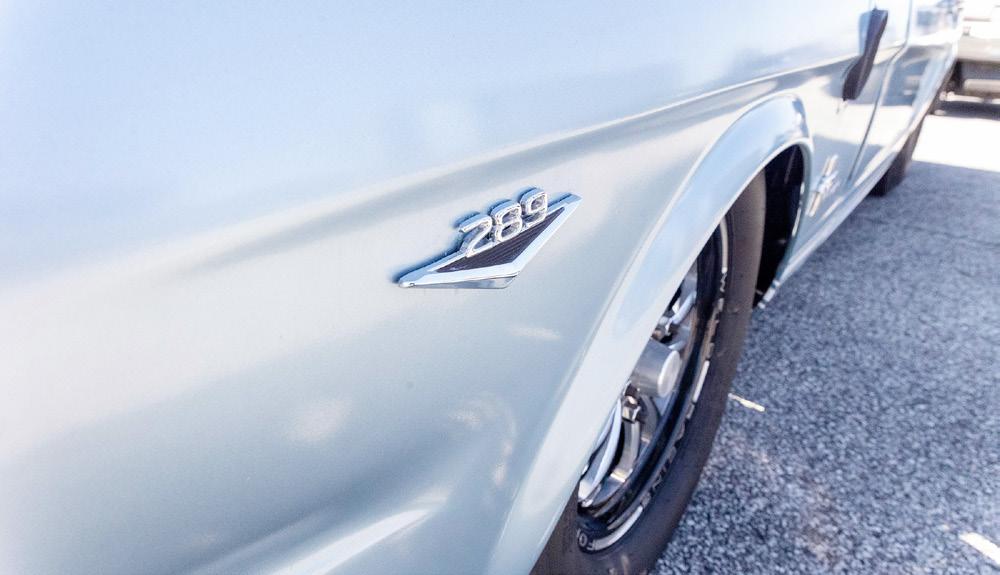



Details matter. They create depth, and depth creates authenticity.
Put the Hammer Down.
You don’t cut corners or accept compromises. Use the best parts, like Trick Flow GenX® 255 square port cylinder heads that can significantly increase the performance of your GM LS-powered car.


Highlights include LS3-shaped CNC Competition Ported runners, CNC-profiled combustion chambers, 12° valve angles, coolant holes that work with all LS head gaskets and engine blocks, and your choice of standard or 6-bolt mounting patterns—all engineered, machined, assembled, durability tested, and dyno proven in the USA to help your car stay ahead of the pack.
Your Recipe for GM LS Performance!
New heads are just one component of the horsepower recipe. To make it complete, you’re going to need some more ingredients.
Track Max® Camshafts
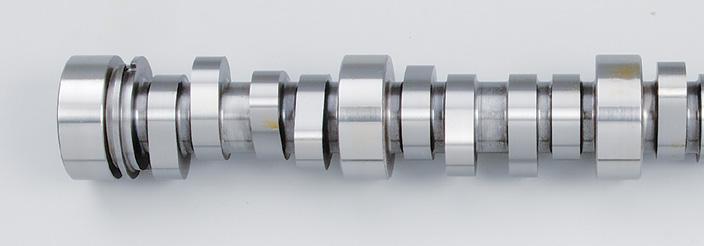






Give your GM LS an even bigger power boost with a Track Max camshaft. Available in several hydraulic roller designs up to 230°/238° duration and .625"/.625" of lift, they are dyno proven to produce significant power increases over the entire RPM range.
Active Fuel Management and Variable Valve Timing Delete Kits
The problem: most performance camshafts don’t work on engines equipped with AFM or VVT. The solution? Ditch them with these delete kits! They include everything to completely remove AFM and VVT the right way so your engine will make the power you expect with no hiccups.
R-Series Carb-Style EFI Intake Manifold for GM LS3
The R-Series carb-style EFI single plane intake manifold brings the simplicity of carbureted-style aspiration to the GM LS3. Capable of supreme power over a 3,500–7,500 plus RPM powerband, the manifold has custom machined fuel injection ports that accept Bosch and Siemens-type fuel injectors. Other features include aluminum construction, high-flow runners, and extra material for custom porting.

Cash was tight, so mods were kept in check, but the car still managed to bang off 11.30s. After he was forced to cage the car – the track officials wouldn’t let him back until he did – Everett decided to backhalf/ladder bar it at the same time. And since he had more to work with chassis wise now, why not up the ante in the power department, too?



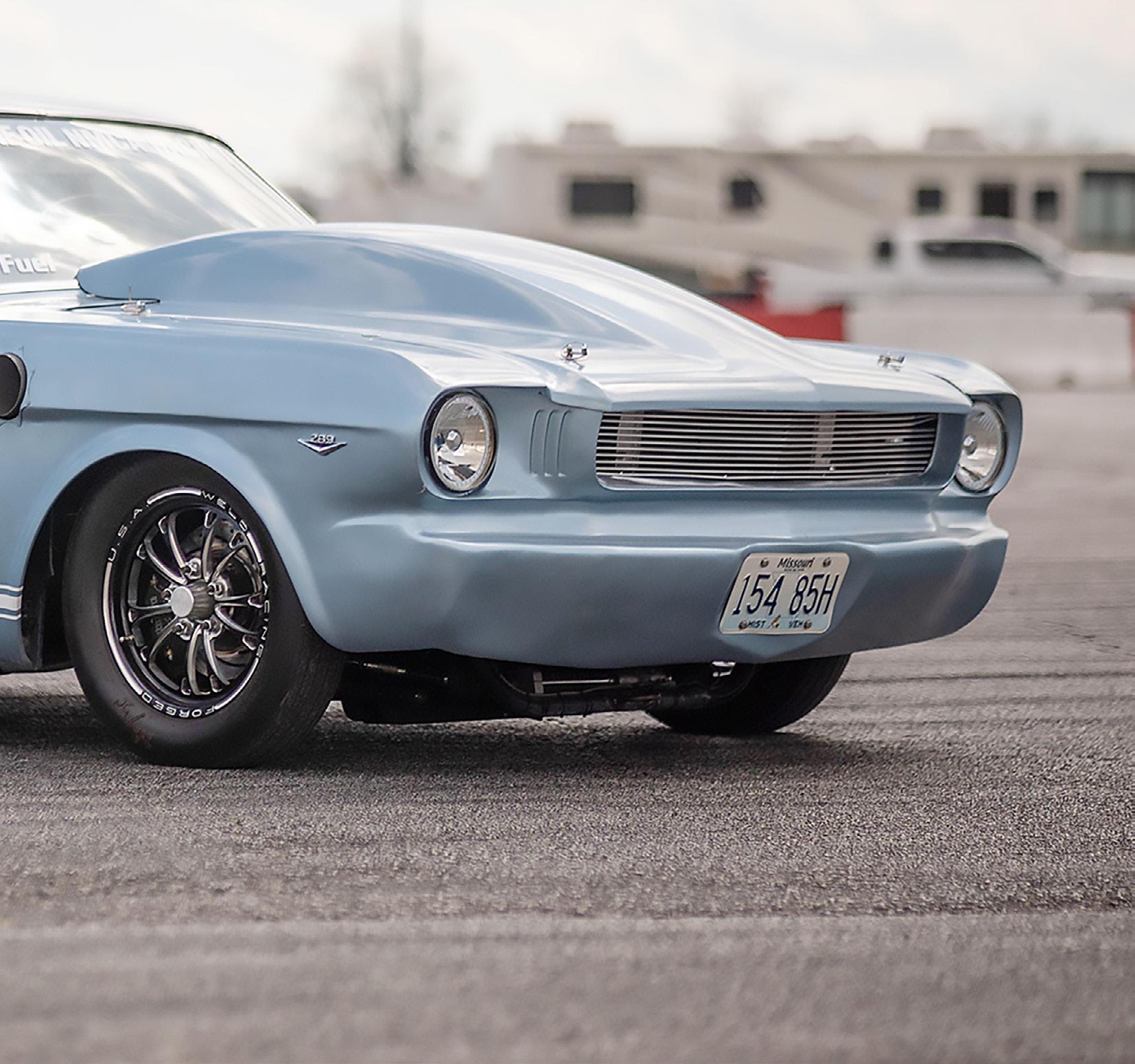

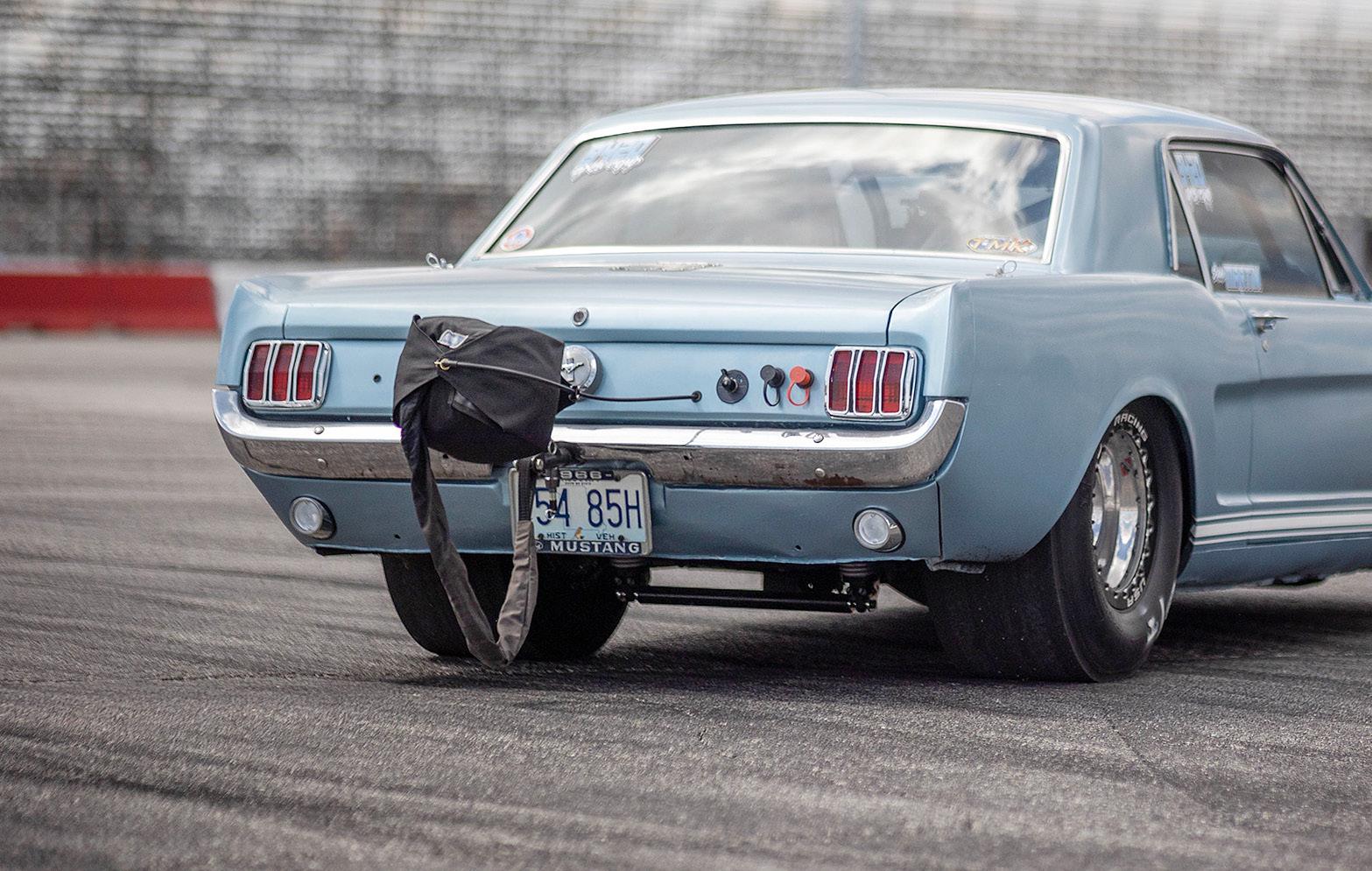



It was at this point he made the decision to go big... big block that is.
A budget high compression 357 Windsor was sourced and set in place but a transmission lockup on the first pass out caused it to spin the main and rod bearings. After this devastating loss, low on cash Everett decided to let the car sit for a few years, and that’s when Shaun had the surprise of his life.
“On my 16th birthday my parents couldn’t afford to get me anything, so my dad handed me the title and keys to the car as a birthday gift. Man was I excited!” Shaun added. Once everything got straightened out financially, Shaun and his dad teamed up to build a new engine for the car to get it back on the drag strip. They created a very

solid 420ci pump gas stroker SBF using the 357 block and ran 10.30s in the 1/4. With plans of adding nitrous and going bottom nines, the Martin’s were faced with going too fast for the cage cert. and once again, the car was gutted. Still working on a fairly strict budget, Shaun decided to take most matters into his own hands and complete the Lion’s share of the new build in his parent’s two car garage. Over the course of the next 7 years Shaun, who also became a father during this time, stripped the car down to a bare shell, cut the floors and existing cage out, had a Mustang 2 front suspension installed, and built a 25.4 chassis.

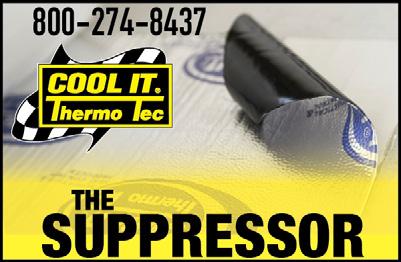
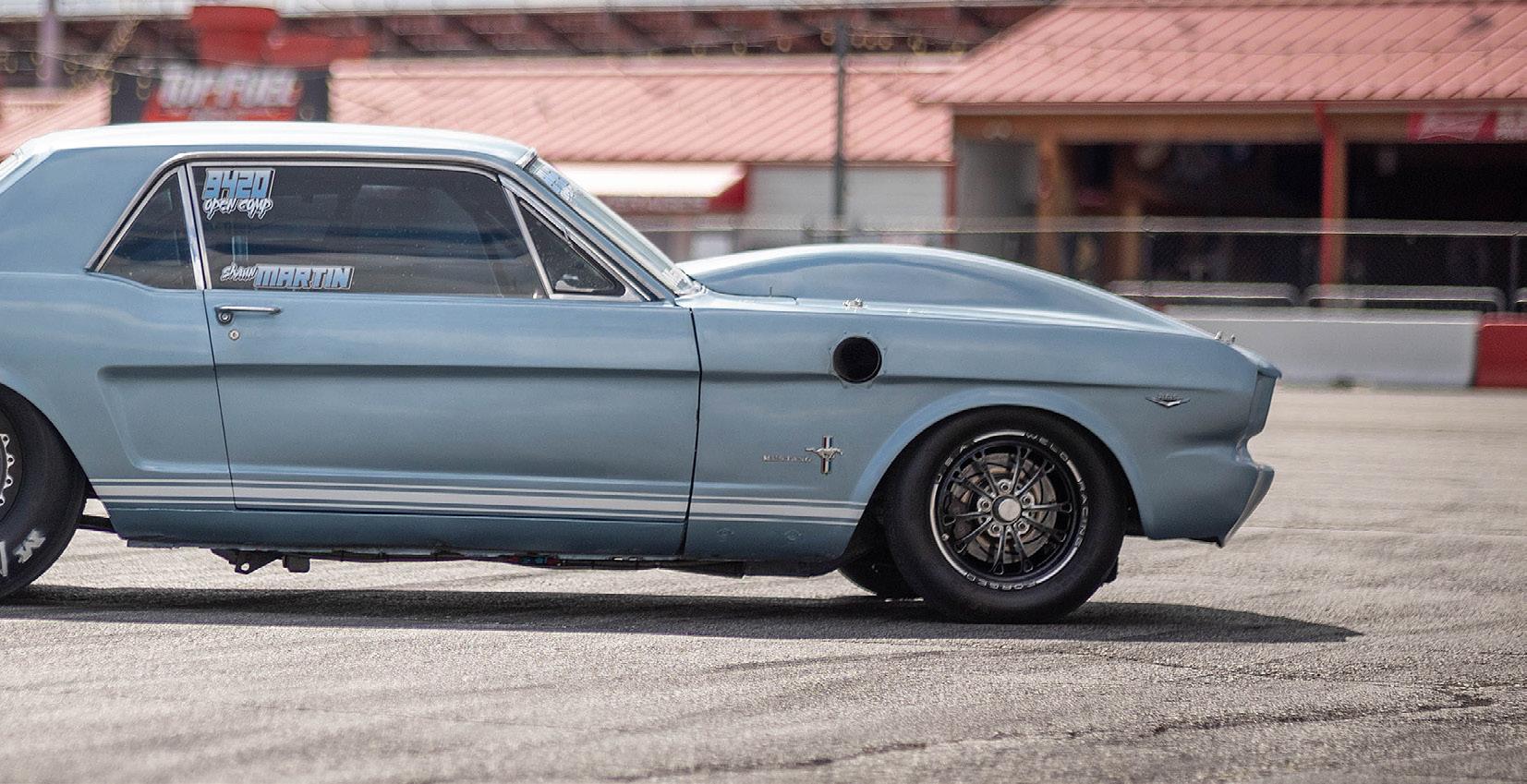
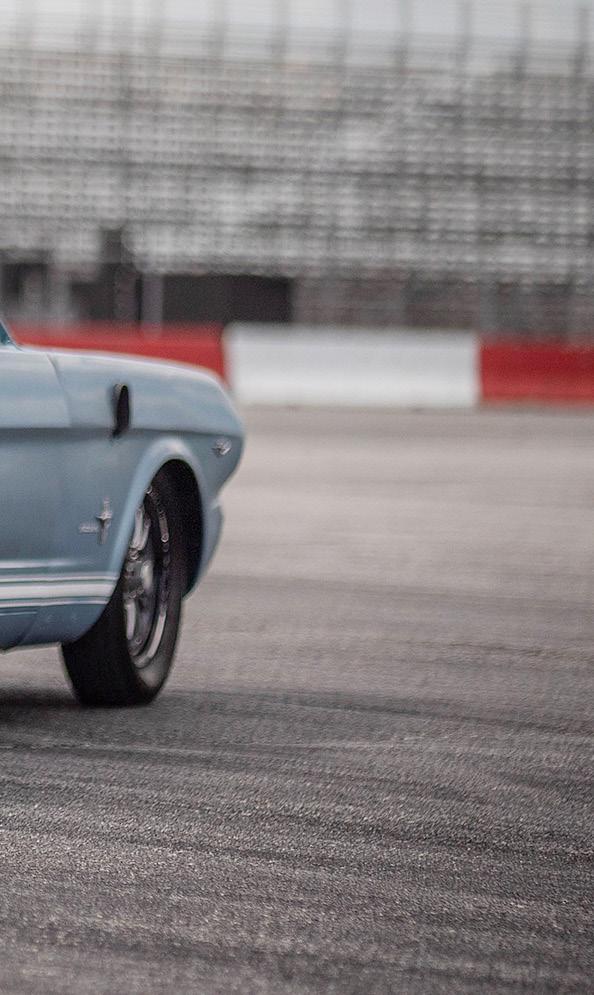
The 289 emblems couldn’t be farther from the truth of what really lurks under the hood of the ’66. How about 598 inches of all Ford 460-based big block power! The short block was assembled by ZSR Engines using a Ford Racing A460 block and then filling it with a top-shelf rotating assembly. When it comes to big block Ford’s, the Trick Flow A460 360cc heads are the cylinder head of choice and a matching TFS intake with PRC Dominator style carb finishes off the package.

It was at this point where he made the decision to go big, big block that is, and he developed an engine program based on Ford’s 460 platform, and backed it up with a Powerglide trans. The built ’Glide transfers power
rearward via a carbon fiber driveshaft built by Precision Shaft Technology to a fabricated 9 inch housing with nodular center section suspended by a ladder bar/coilover setup and stuffed with a spool, 4.30 gears and 35 spline axles.
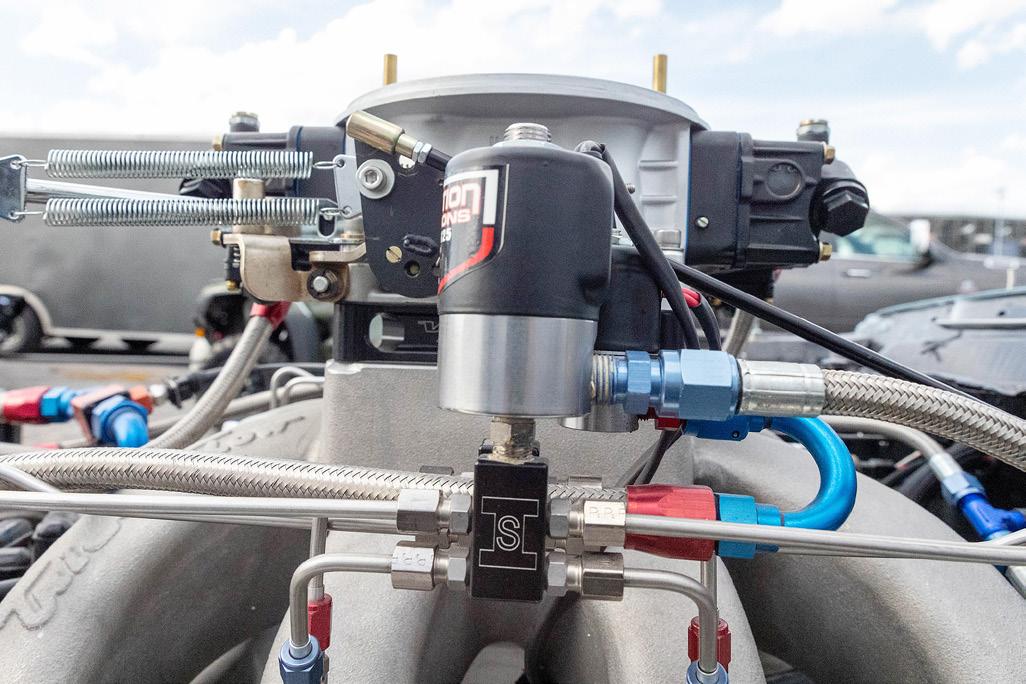

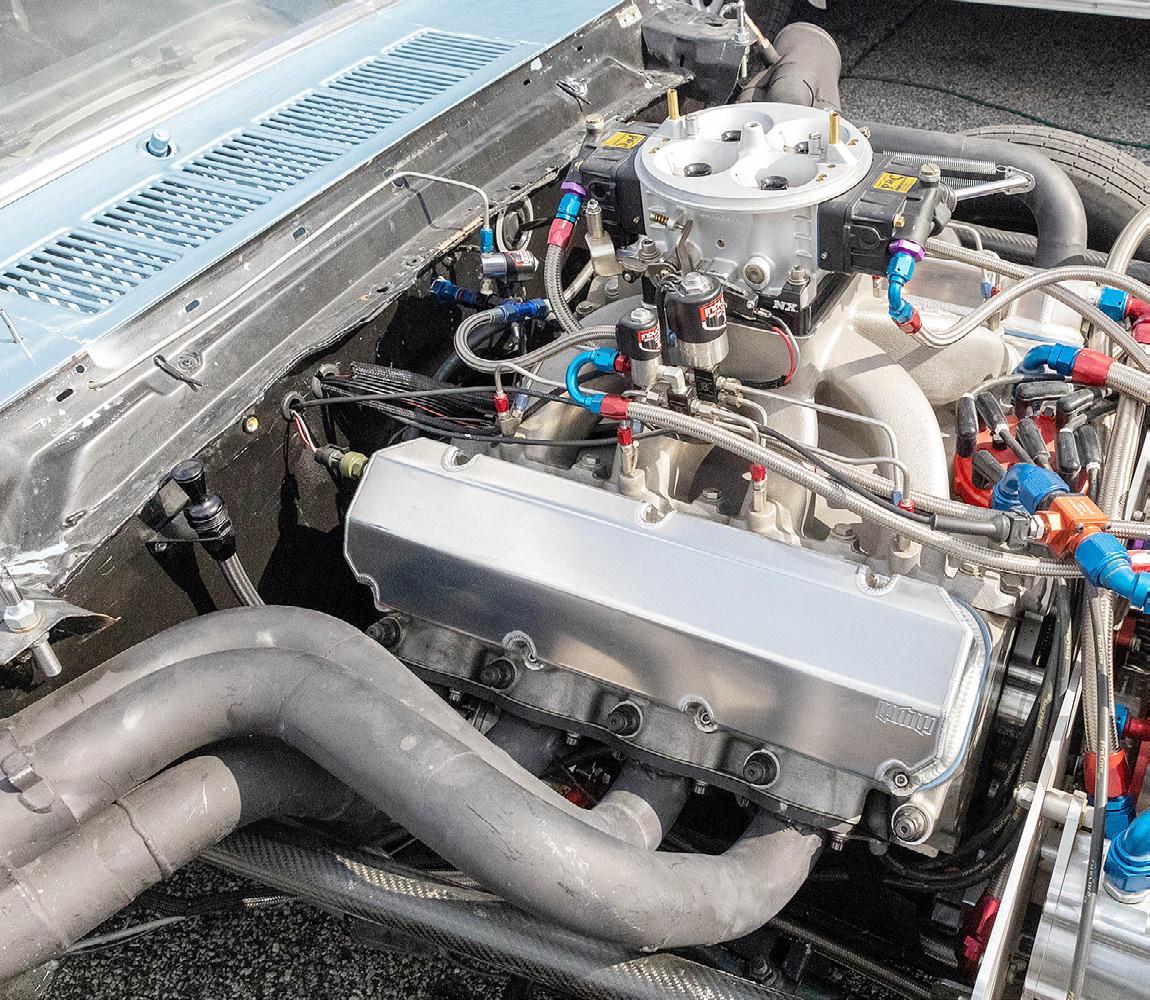

The short block was built by ZSR Engines and started with a Ford Racing A460 block with 4.6 bore. A Lunati forged crankshaft spins Molnar billet rods and custom Diamond pistons with Total Seal AP rings. Trick Flow A460 360cc heads were fitted with T&D 1.76 ratio aluminum shaft rocker arms, Trend 7/16 pushrods and topped with custom Winchester Metal

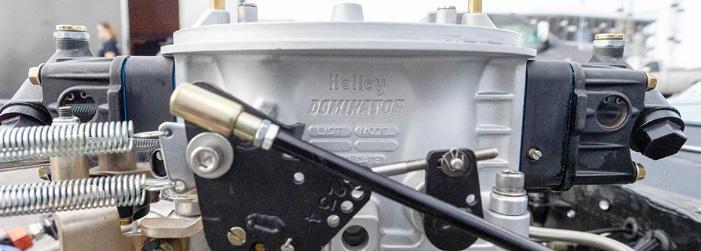
Works valve covers. An SCP 4 stage dry sump oil pump with Moroso oil tank, Aviaid oil pan, and Peterson remote oil filter mount with primer are used to supply ample amounts of lubrication to the big block, which incidentally works out to a solid 598 cubic inches when all is said and done. A Trick Flow A460 intake was topped with a PRC 1150 Dominator style carb.
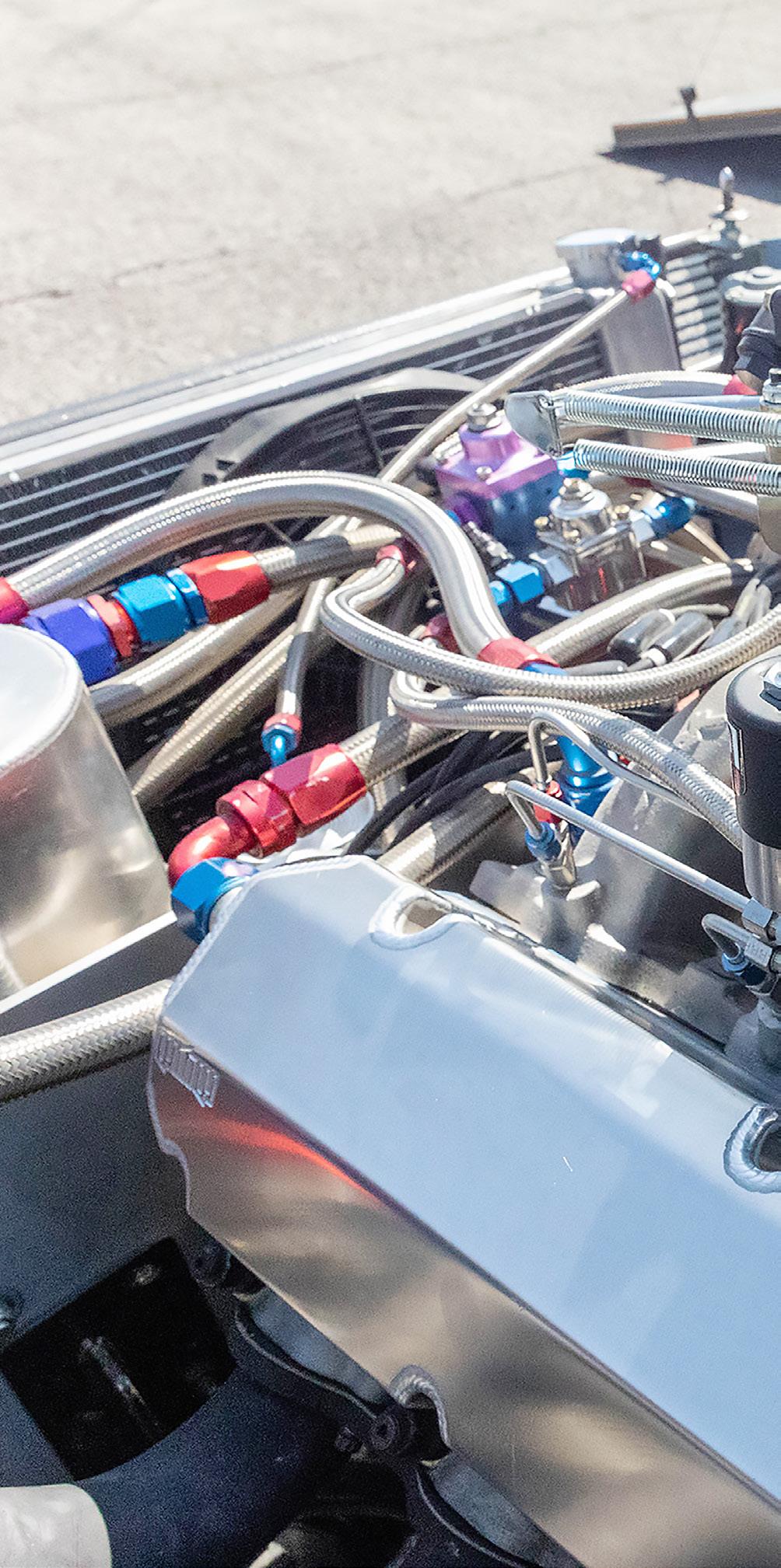


Shaun Martin’s 1966 Ford Mustang Drag Car
■ Body & Paint:
Paint is the original color Silver Blue Metallic. All paint and body work was done by the owner's father in law Jeff Clark.
■ Chassis & Suspension:

25.4 chassis with 2x3 back half and ladder bar suspension. Front suspension is Mustang 2 with QA 1 double adjustable shocks front and rear. Tin Soldier Race Cars Anti Roll bar.
■ Engine:
Big block Ford 598ci. Ford Racing A460 block with 4.6 Bore (short block built by ZSR Engines). Lunati forged crankshaft, Molnar billet rods, custom Diamond pistons with Total Seal AP rings, Clevite main and rod bearings. ATI Balancer. SCP 4 stage dry sump oil pump with Moroso oil tank, Aviaid oil pan, and Peterson remote oil filter mount with primer, custom Jones Powersports drive mandrel. Custom comp cams solid roller camshaft spec’d by Lem Evans. Trick Flow A460 intake, PRC 1150 Dominator carb.
■ Cylinder Heads:
Trick Flow A460 360cc heads. T&D 1.76 ratio aluminum shaft rocker arms, Trend 7/16 pushrods. Custom Winchester Metal Works valve covers.
■ Power Adder:
Induction Solutions single stage direct port system.

■ Electronics:
MSD Power Grid with crank trigger and HVC-2 coil. Leash street/strip wiring board with single stage nitrous relay board. NOS mini progressive nitrous controller, Racepak V300sd data logger with IQ3 dash, Mega 475 delay box.
■ Transmission & Converter:
Reid Supercase Powerglide with ATF Speed valve body and transbrake, BTE 1.80 gear set, BTE 300m Vasco turbo spline input shaft, Sonnax smart servo, Ultimate Converter Concepts 9.5 torque converter.
■ Rear End:
Fabricated 9 inch housing , nodular center section with 4.30 gears, 35 spline Pro Race axles with 5/8 wheel studs. Carbon fiber driveshaft built by Precision Shaft Technology.
■ Tires & Wheels:
Rear V Series double beadlock 15x12 3 inch backspace with Mickey Thompson 29.5x10.5W ET Drag slicks, front wheels are 15x3.5 with 25x4.5 front runners.
■ Interior:
Gauges are Racepak IQ3 Drag dash, RJ Race Cars wheel with quick disconnect. Precision air shifter. Aluminum race seat. Racequip 5 point harness, window net.
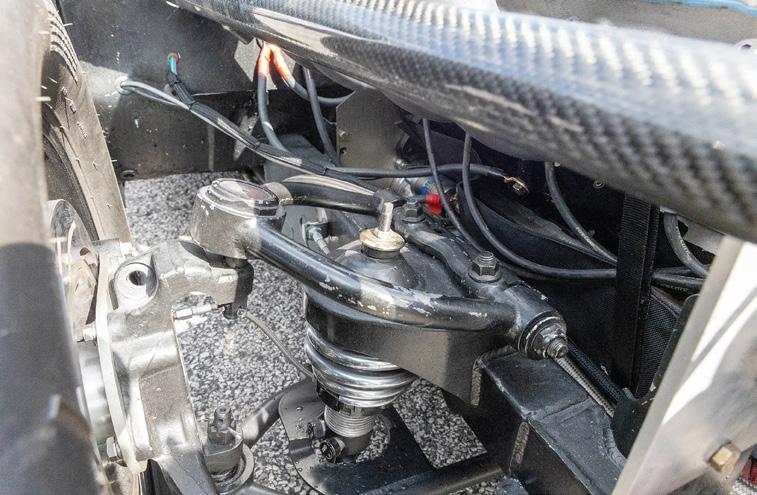
■ Best ET & MPH:
On the motor 5.64 @ 123 mph in the 1/8th and 8.85 @ 151mph in the ¼ mile. Numbers on the nitrous are top secret.
■ Most Unique Feature(s):


The paint color, the custom homemade fender exit exhaust, and the custom Glasstek Sunoco hood stand out to me.
■ Reason For The Build:
I built the car because it’s been in my family for 33 years and was handed down to me from my father on my 16th birthday.
■ Build Timeline:
It took 7 years to rebuild the car to what it is now.
■ Most Memorable Experience With The Car:
The first pass in the car with the new combo after my dad won his battle with cancer. The look on his face was priceless!
■ Thanks To:
Huge thanks to my parents Cinda and Everett Martin for helping support me financially, my father in law Jeff Clark for the paint, bodywork, and helping with the car at the track, my wife Caitlin Martin for supporting me while I spent long days and nights away building and working on the car. Zach Smith at ZSR Engines for the machine work and building the short block.
Having a near-600 cubic inch big block between the framerails might be enough for some, but Shaun decided to add an extra hit to the mix and installed an Induction Solutions single stage direct port nitrous system.
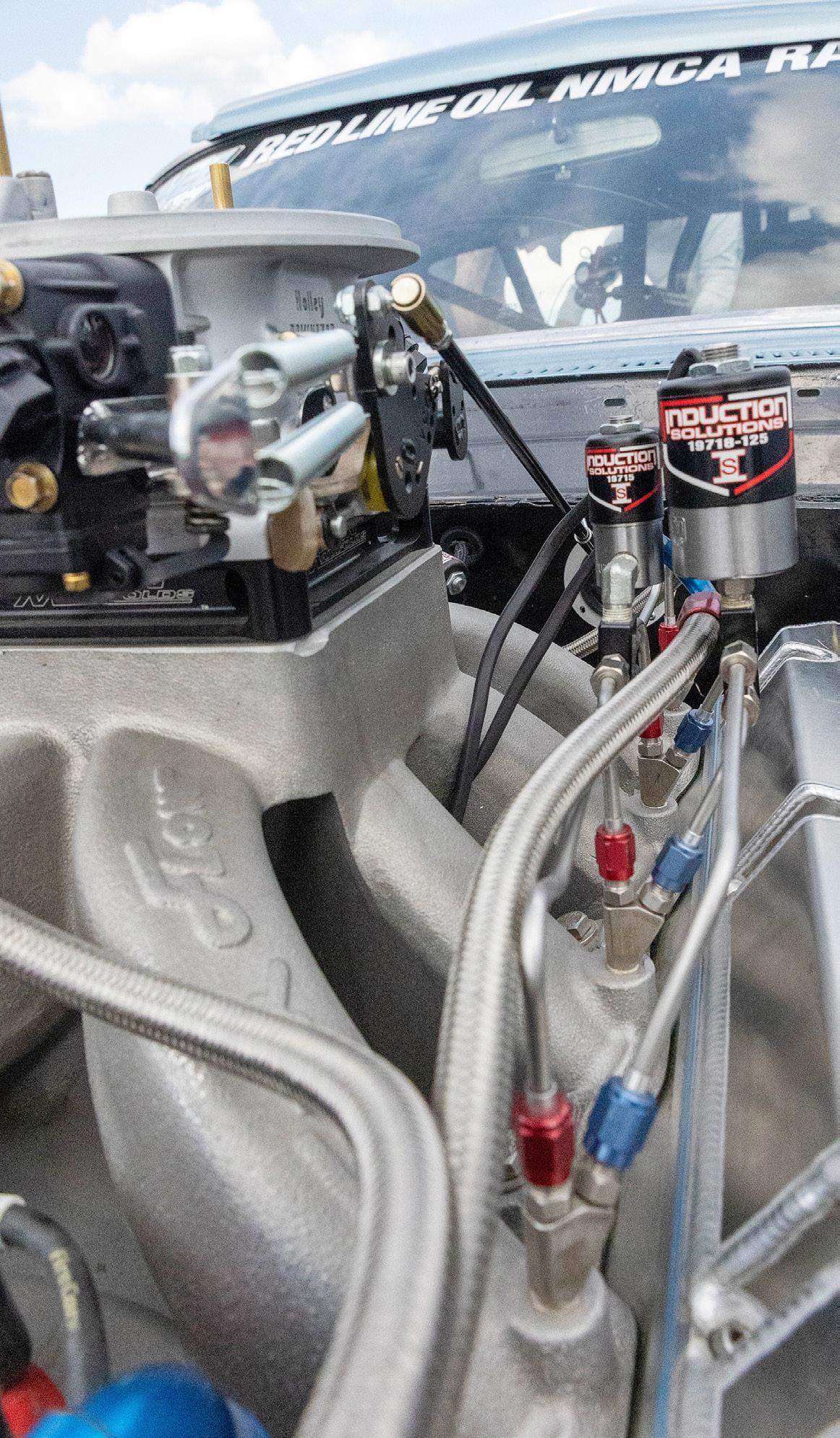


The car sits low thanks to the backhalf and suspension work on both ends, and is complemented by the V Series hoops skinned with Mickey 29.5x10.5W ET Drag slicks out back and 4.5 inch front runners. Inside you’ll find a cool mix of original Mustang panels and trim with state of the art tech such as the digital Racepak IQ3 Drag dash. Shifts are controlled by a PPP air shifter and twin Induction Solutions nitrous bottles ride shotgun in the Stang.
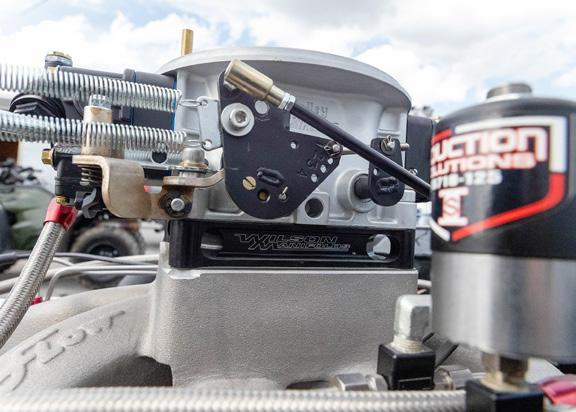
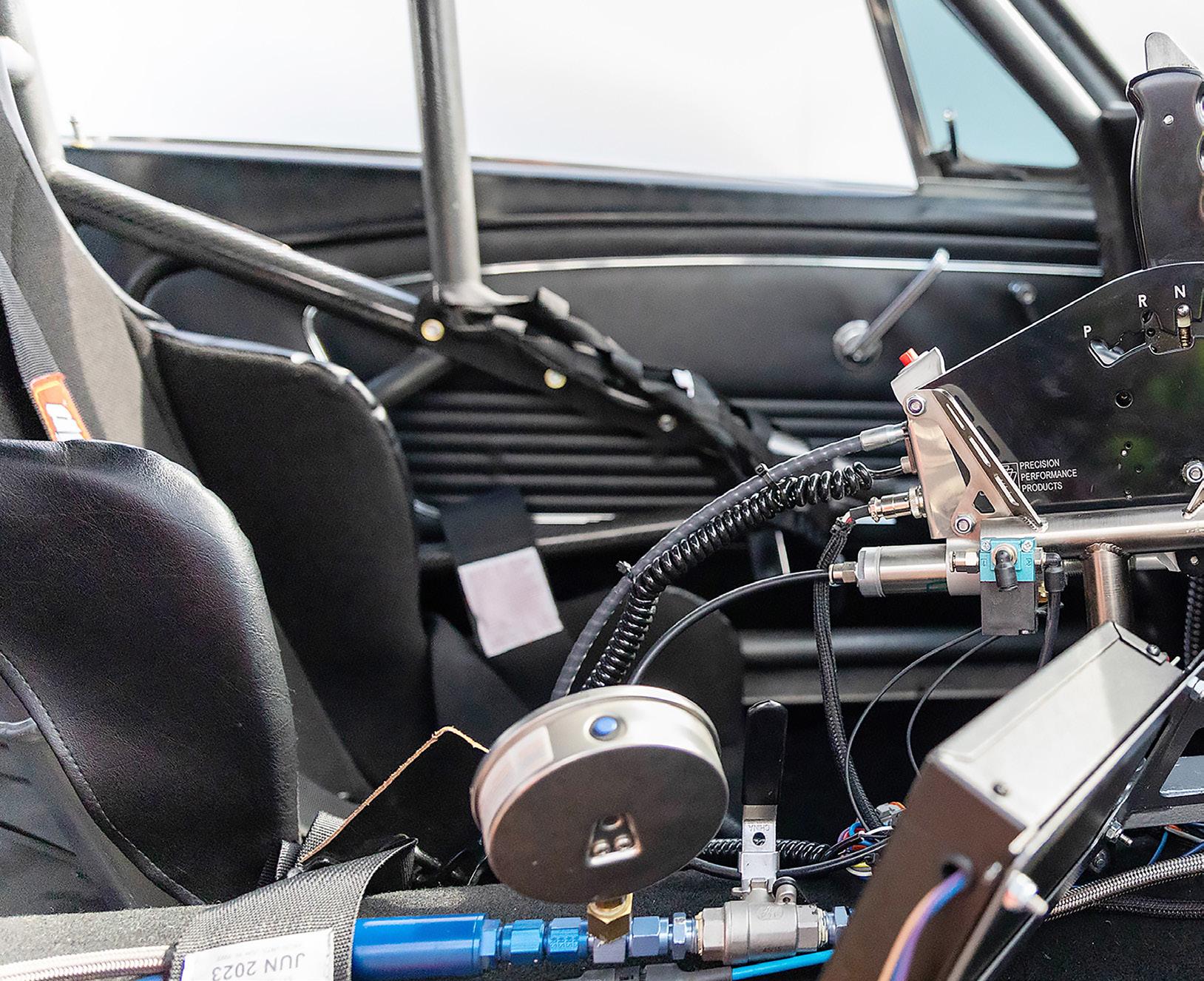

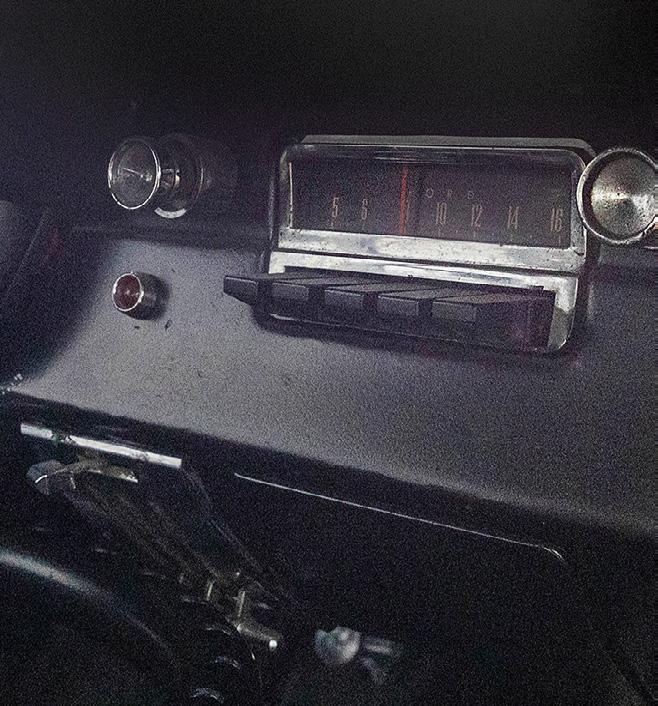
The potent combination is good for easy 5.64 elapsed times in the 1/8th and 8.85s at 151 in the ¼, but why stop there? For good measure, an Induction Solutions single stage direct

port nitrous system was plumbed into the mix. Performance numbers to date on the nitrous are top secret however, just in case Shaun wants to try some ‘alternative’ styles of racing.



Tri-lobe scavenge sections feature individual timing gears to ensure proper clearance at high rpm
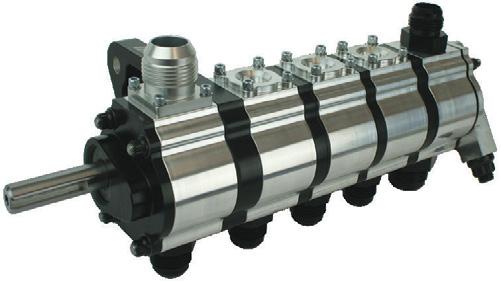

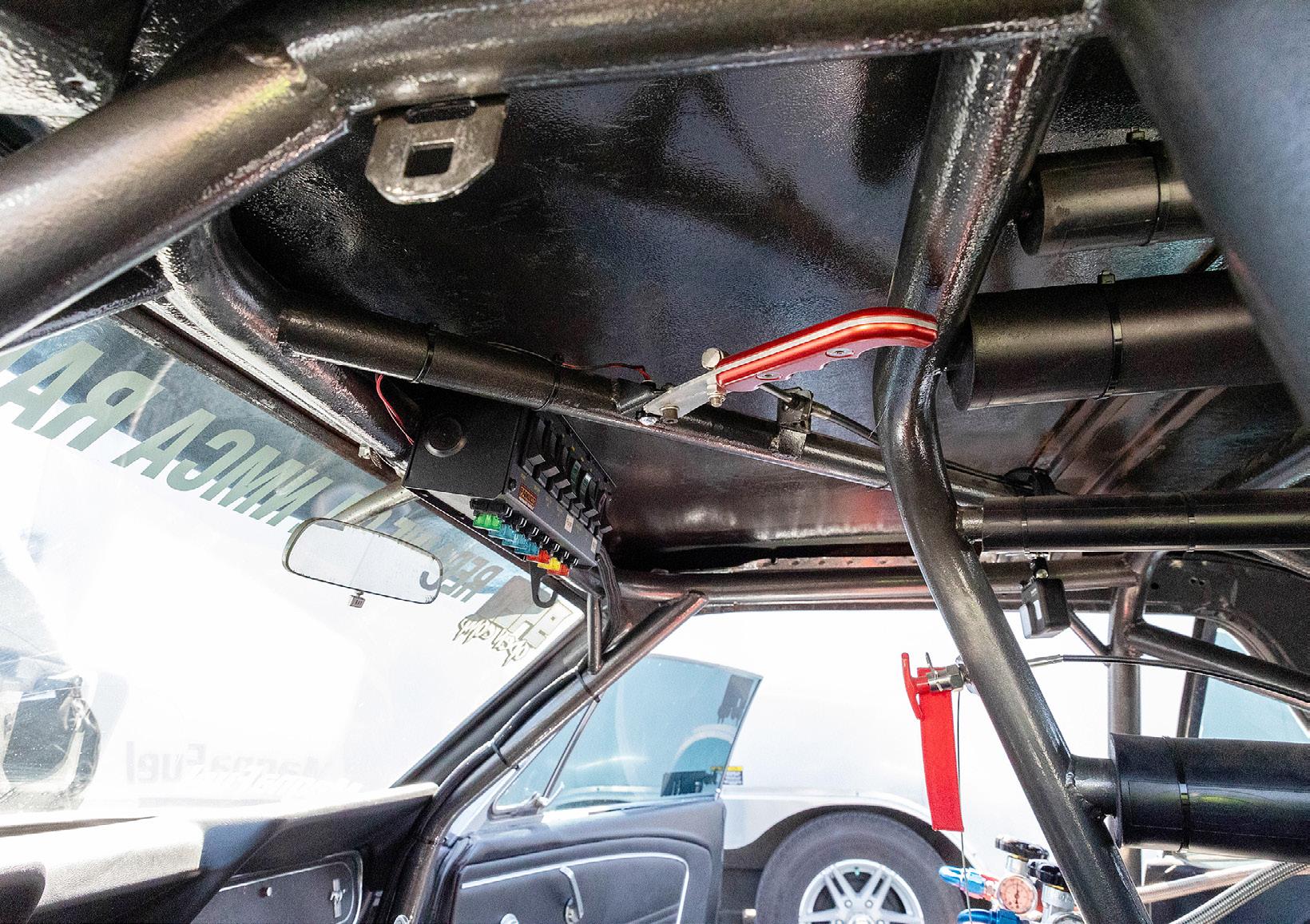



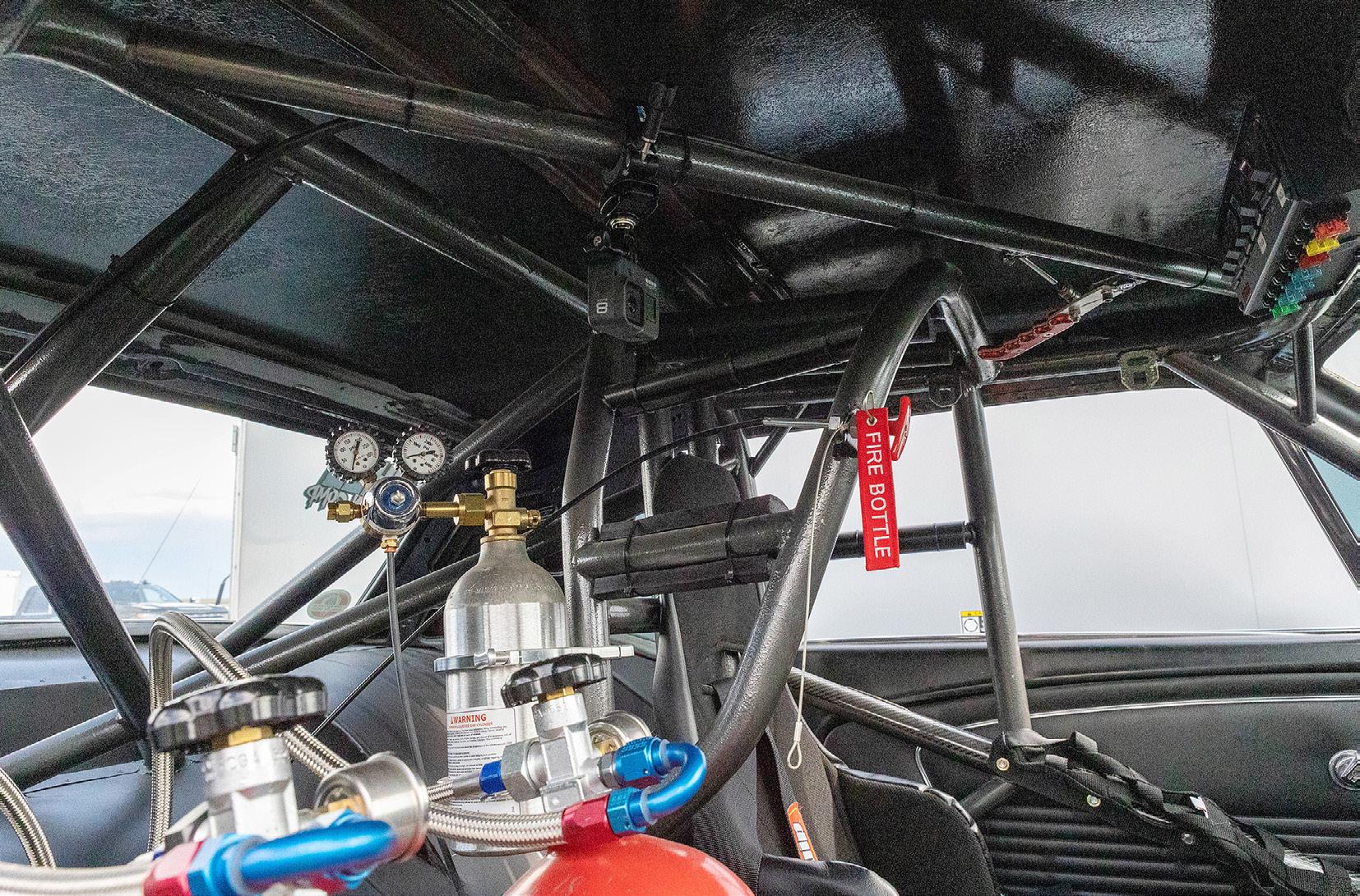
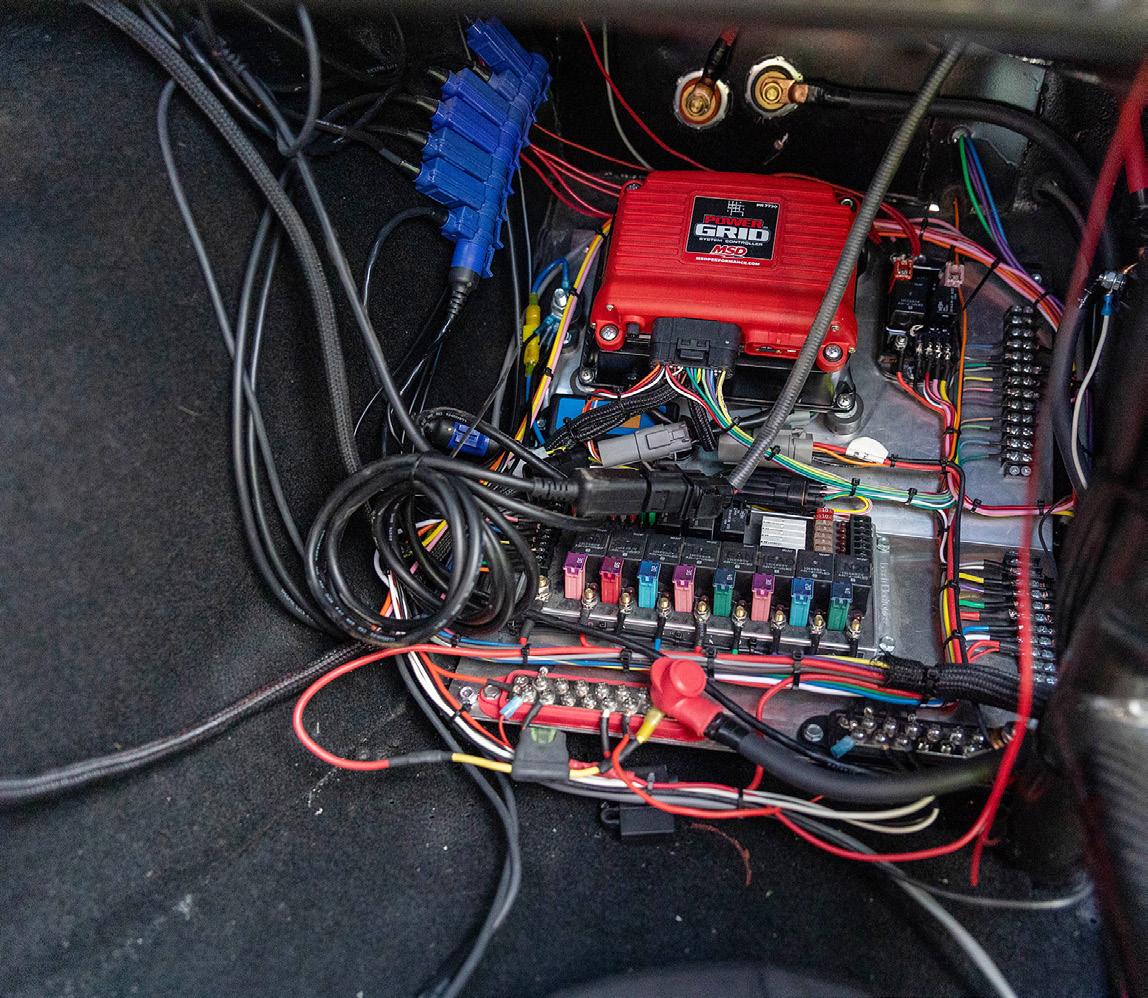


Effortless mid-fives in the 1/8 and eights in the 1/4 is what you can expect naturally aspirated from the Mustang, however, with the nitrous armed numbers are… oh wait we can’t divulge that info… just in case.
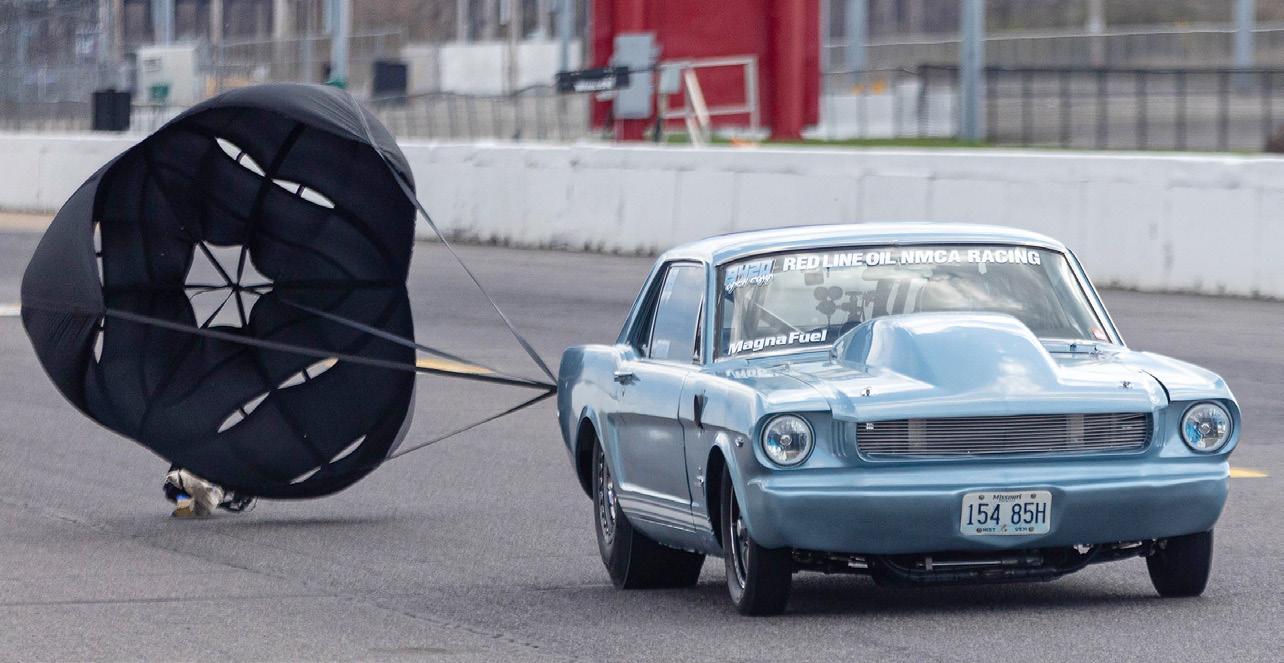

During the 7-year build to what the Mustang is today, Shaun also became a father and, just like his dad did with him, racing has to be a family affair.


“Today I can honestly say that the car is a total transformation from my childhood days, but it will always be that same car I got on my 16th birthday!” added Martin. “And the most
memorable experience with the new Mustang has to be the first pass in the car under full power. It was just after my dad won his battle with cancer, and the look on his face was priceless!”
Summit Racing™
Precision Cast Cylinder Heads

Superior Flow at a Super Price as low as $549.99 USD assembled, each
SUM Precision Cast Head
Summit Racing™
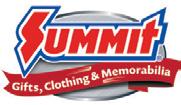

Forged Crankshafts


Made from Forged 4340 Steel as low as $699.99 USD each

SUM Crankshafts Forged 4340
Power Grid 7 Ignition Box

Ultimate RPM Control
MSD-7720 $639.95 USD each
MSD Grid 7 Discharge

Vacuum Pumps
Withstand the Rigors of Competition as low as $727.99 USD each
MOR Racing Vacuum Each

Aluminum Engine Blocks for Small Chevy

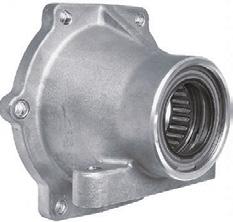

Durable and Versatile as low as $5,165.99 USD each
BRO 4-Bolt Block Chevy
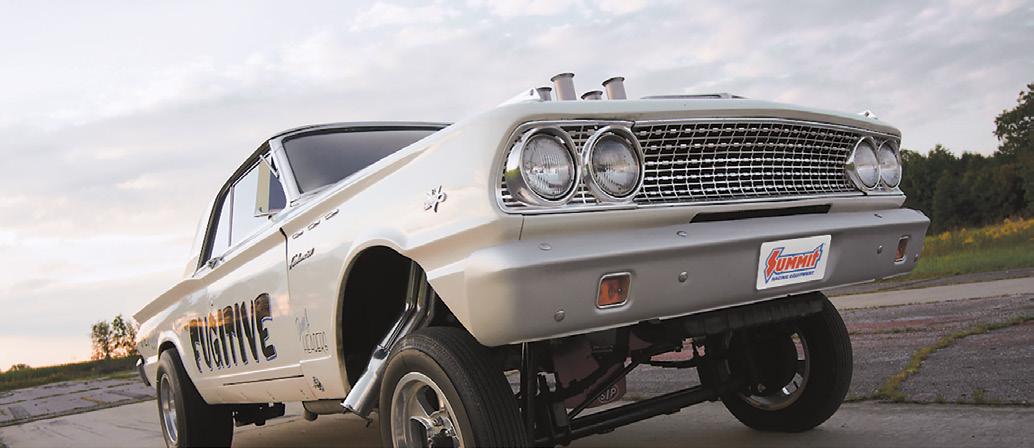
Make a Powerful Statement
AAN-AASW $399.99 USD each
AAN Swap Monster
Tailshaft Housings
Roller Bearings for Less Friction as low as $198.00 USD each

ATI Tailshaft Housings
303 Mid-Top Racing Shoes
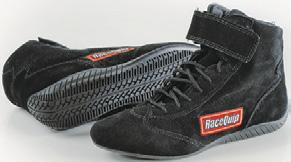
Protect Your Feet as low as $83.95 USD pair
VMS 303 Pair
QuickStar 300 Fuel Pump
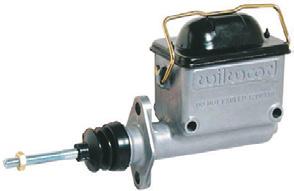

Externally Adjustable Bypass
MRF-MP-4601 $359.99 USD each
MRF QuickStar 300 Universal
Mustang Pedal Assemblies

Fit a Variety of 1970s-1990s Mustangs as low as $1,200.00 USD each
FPC Mustang Pedal
High-Volume Master Cylinders
Handle Heavy Braking as low as $69.63 USD each

WIL High-Volume Cylinder





SATISFACTION,

Ultra-Bell Bellhousings
Five Times Tougher than Stock as low as $469.88 USD each
JPT Ultra Bell Bellhousings

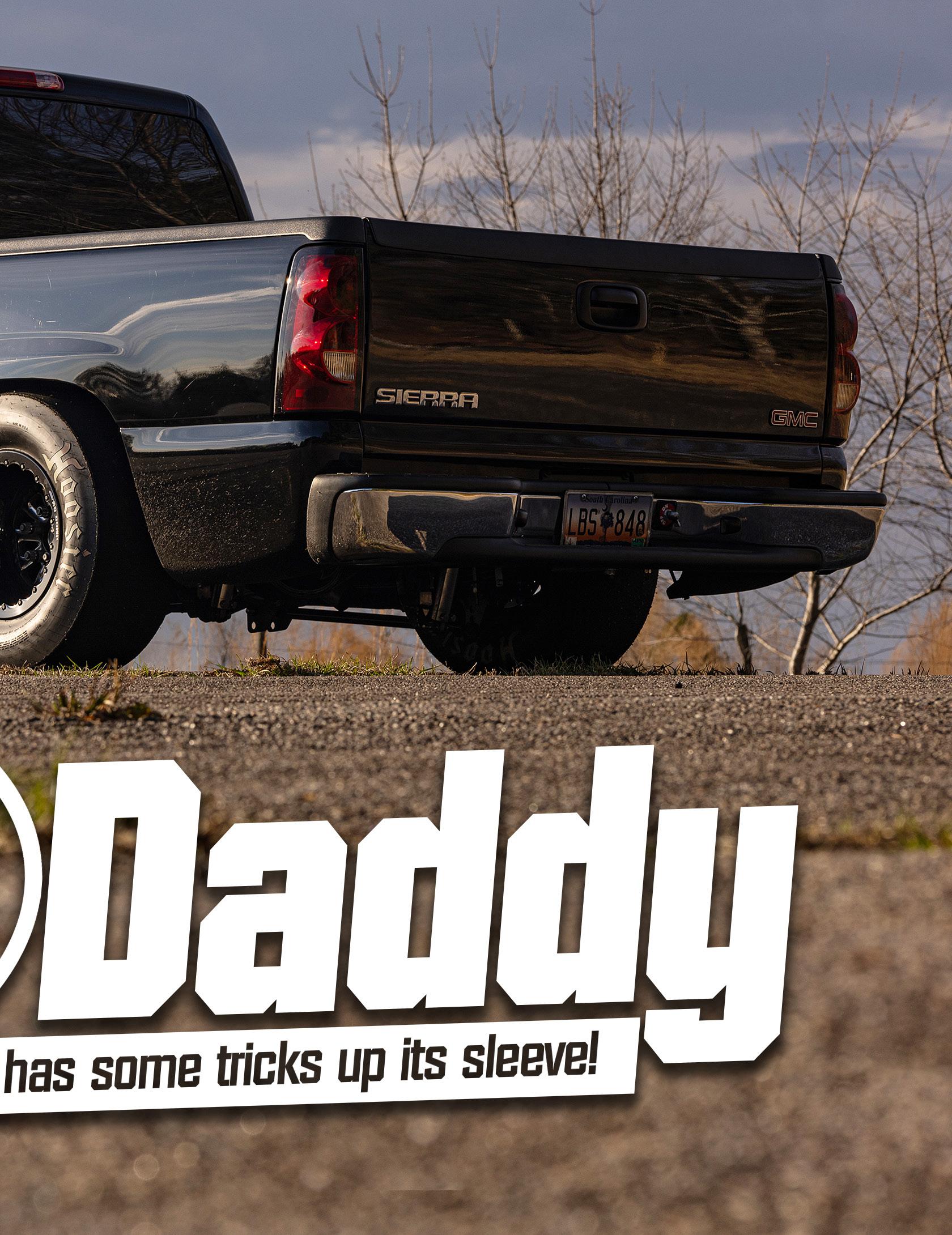 Story & Photos: Wes Taylor
Story & Photos: Wes Taylor
It shouldn't be a surprise; today, practically every manufacturer has a performance variant of their SUV and truck models. For whatever reasons, Jeremy Singleton is attracted to trucks. He likes to make things fast that shouldn't be or aren’t known to be on the performance side of things.
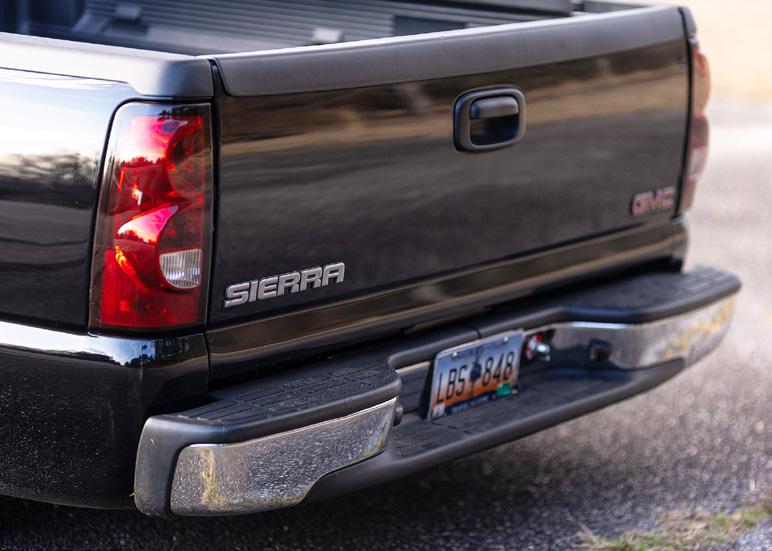

GM trucks in particular have always tugged at Jeremy’s heartstrings, especially the regular cab short-bed models, and from an early age he knew that he’d be behind the wheel of one. His first truck was a 1998 Chevy Silverado that underwent many changes such as the typical wheels/tires, lowering, boltons, etc. Singleton progressed through a few other trucks, but they didn't last long, his intentions were never really to build something crazy quick and fast, but once he got a taste of it there was no turning back.

Many vehicles, from imports to domestics, cars, bikes, SUVs, and trucks, exist in today's racing community, with the latter becoming more prevalent in recent years.
Crazy Quick and Fast.

This is a truck that redefines pickup
A clean regular cab short-bed truck is rare enough, let alone one that isn't a base-model white work truck, so Jeremy Singleton jumped at the chance to by this one when he found it.

Finding a regular cab short-bed truck is rare enough, let alone one that isn't a base-model white work truck. The GMC trucks are essentially the same but with different front ends and, in some cases, more luxuries. The regular cab short bed GMC Sierra such as Jeremy's is one of the hardest trucks to find in a non-work truck trim level, hence why he jumped at it so quickly. In November 2018, he ran across a nice 2002 GMC, and seized the opportunity to grab it. “I started with the simple plan of lowering it with some nice wheels,” Singleton explained. “First came a L76 6.0, cam swap, some nitrous and a 4l80 swap. After making it into the 6 second bracket, I was hooked,” he added.
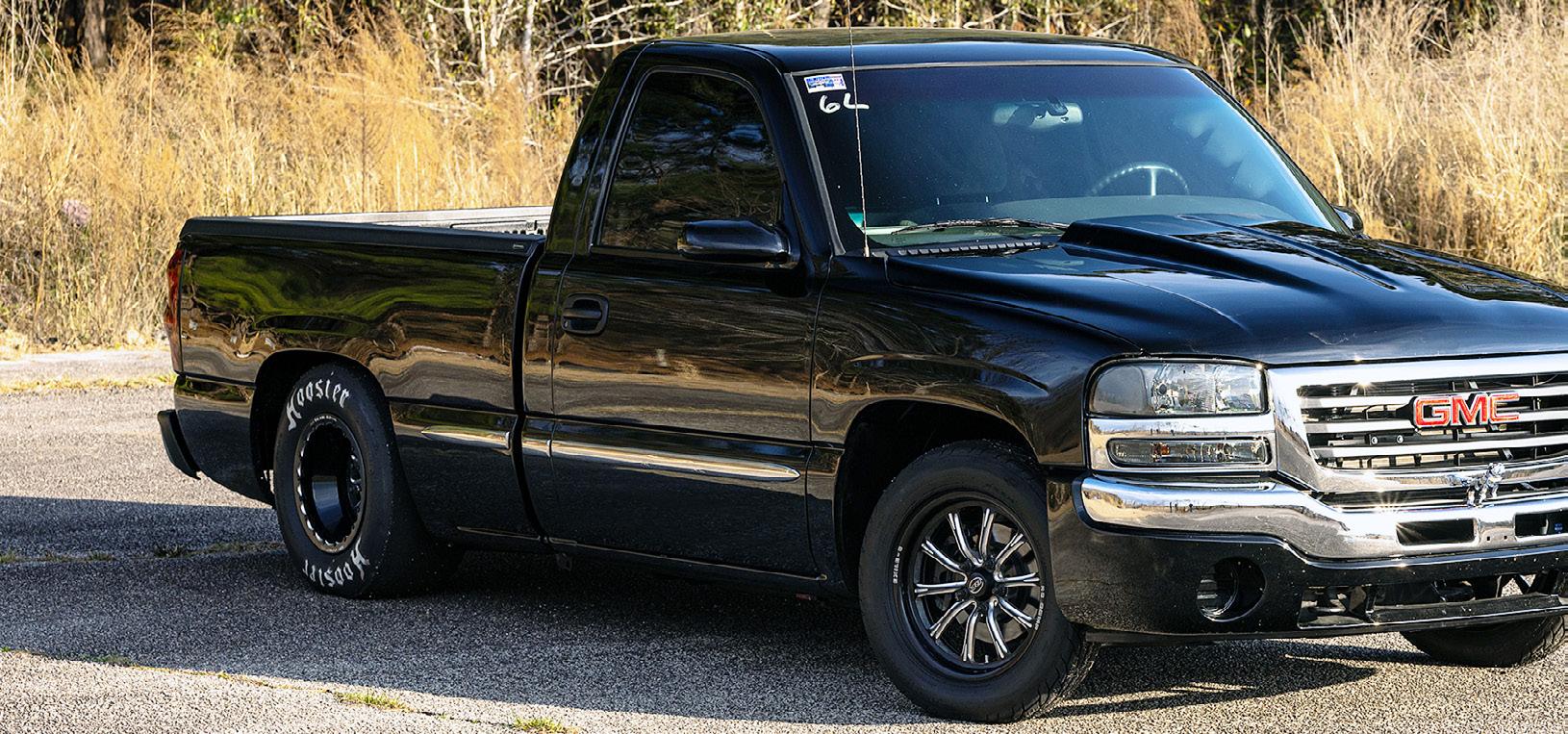







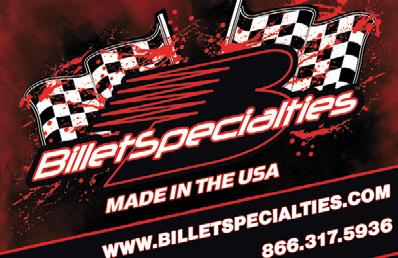

Mack Daddy is the name!


Jeremy always thought of having a hood ornament on a truck but was never brave enough to do it. His wife Maegan surprised him with a real metal bulldog from a Mack truck dealership, and that’s how this Sierra got its name, fitting for a beast of such bulky proportions yet capable of inflicting some serious damage on opponents.

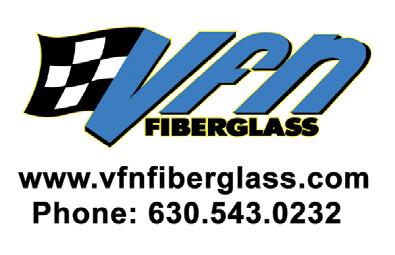
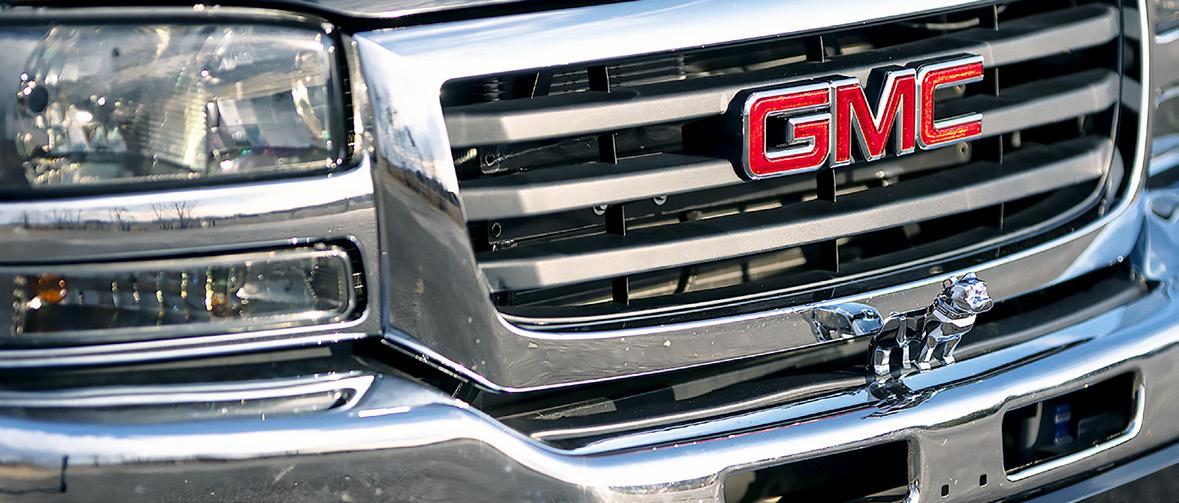
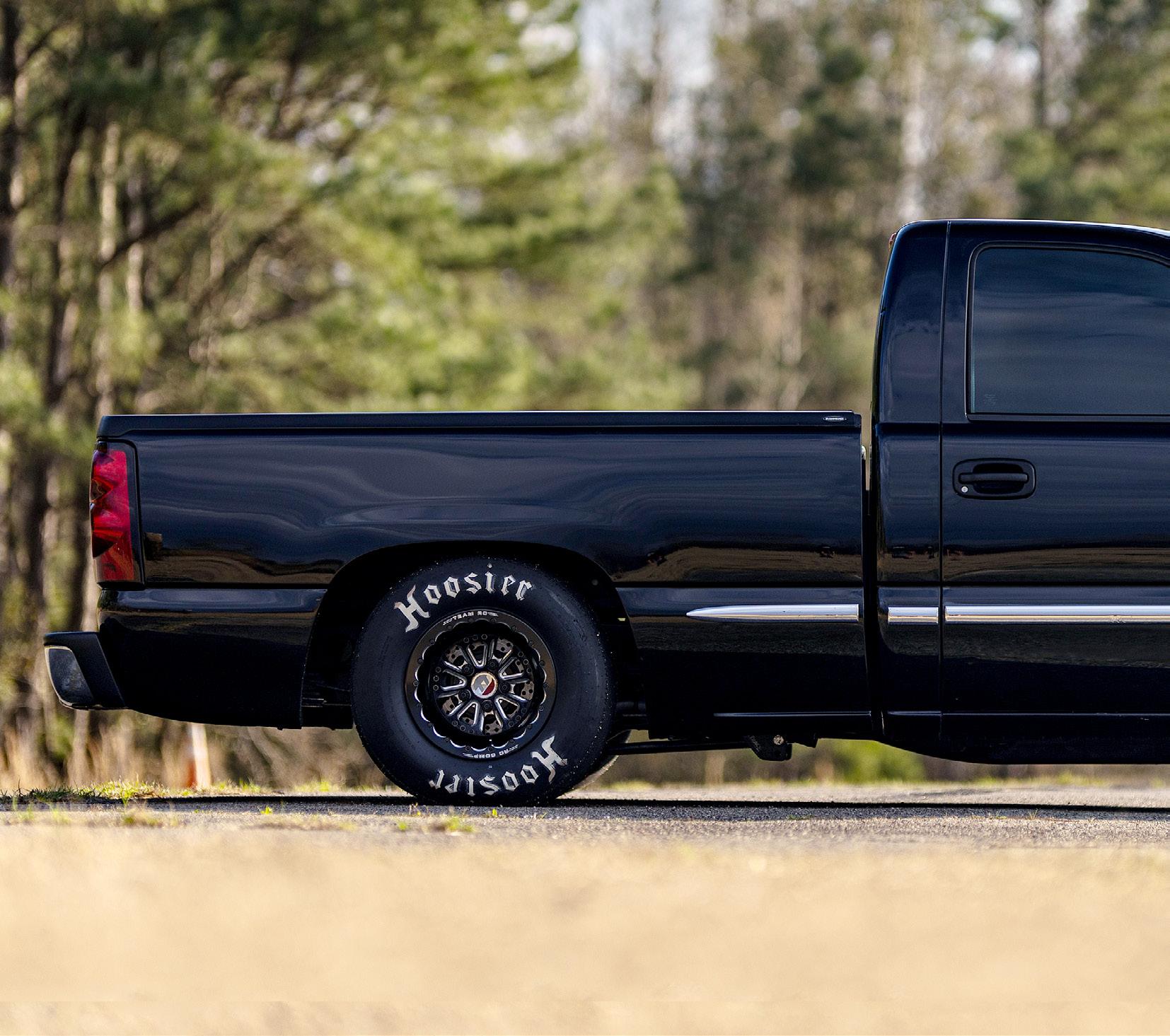
As we can all imagine and understand, the need for speed is not something that you can ever shake off or recover from, once you have it, you have it for life, and Singleton learned that pretty quickly. It wasn’t long before a 408ci replaced the outgoing L76; but this proved challenging to get right, so a new build began.




Jeremy wanted something different, something he could grow with and knew that starting with a Dart LS Next block was the ticket. The rotating assembly is built on a Dart 4-inch billet stroker crank with Lunati Boostline 6.125 rods and custom Wiseco -18cc pistons. A Cam Motions spec cam completes the 427 inches of pure strength.

Jeremy wanted something different... something he could grow with...
Here,s where the fun begins!

A pump E85-friendly Dart LS Next-based mill was created with a ProCharger F1X hangin’ off the front left, and the install looks factory. The current tuneup propels the heavyweight to 5.70s in the 1/8-mile!
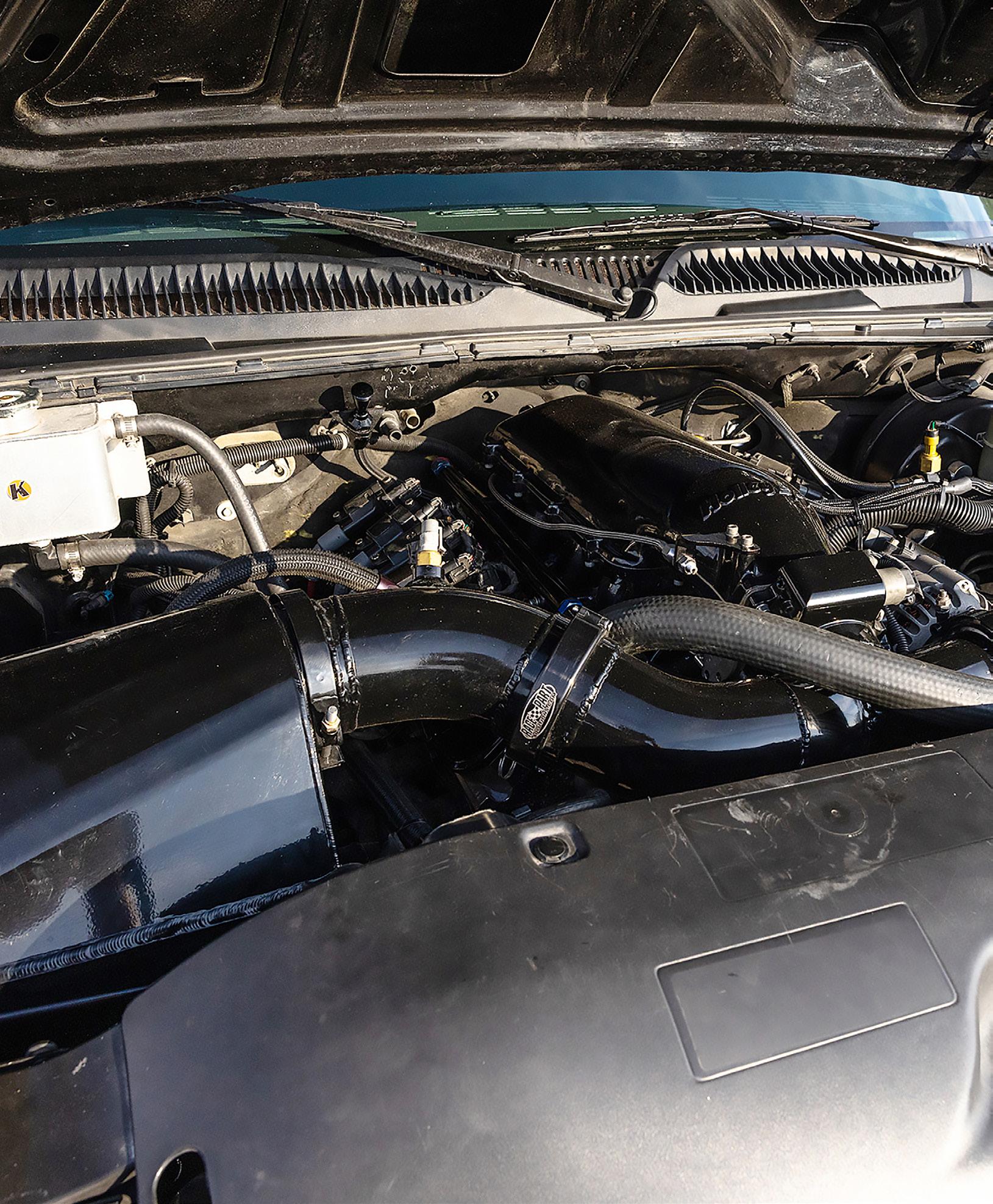
Mast Black Label 295cc heads sporting adjustable Jesel rockers, PAC Racing springs, and Inconel valves allow the 427 small block to breathe. Topping the completed LSX is a Holley Performance Hi Ram in the LS3 variety boasting a sizable 105mm throttle body.
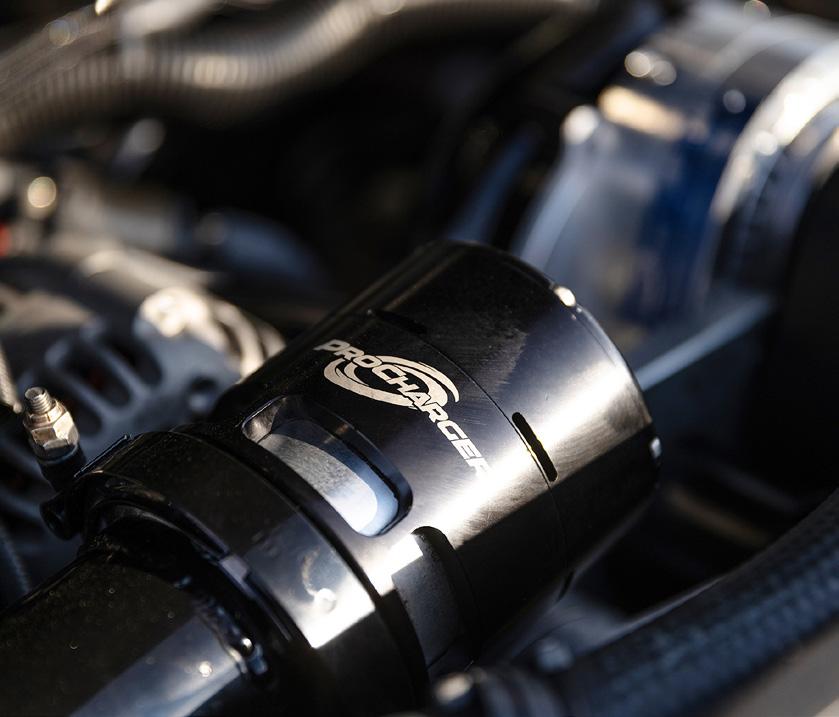

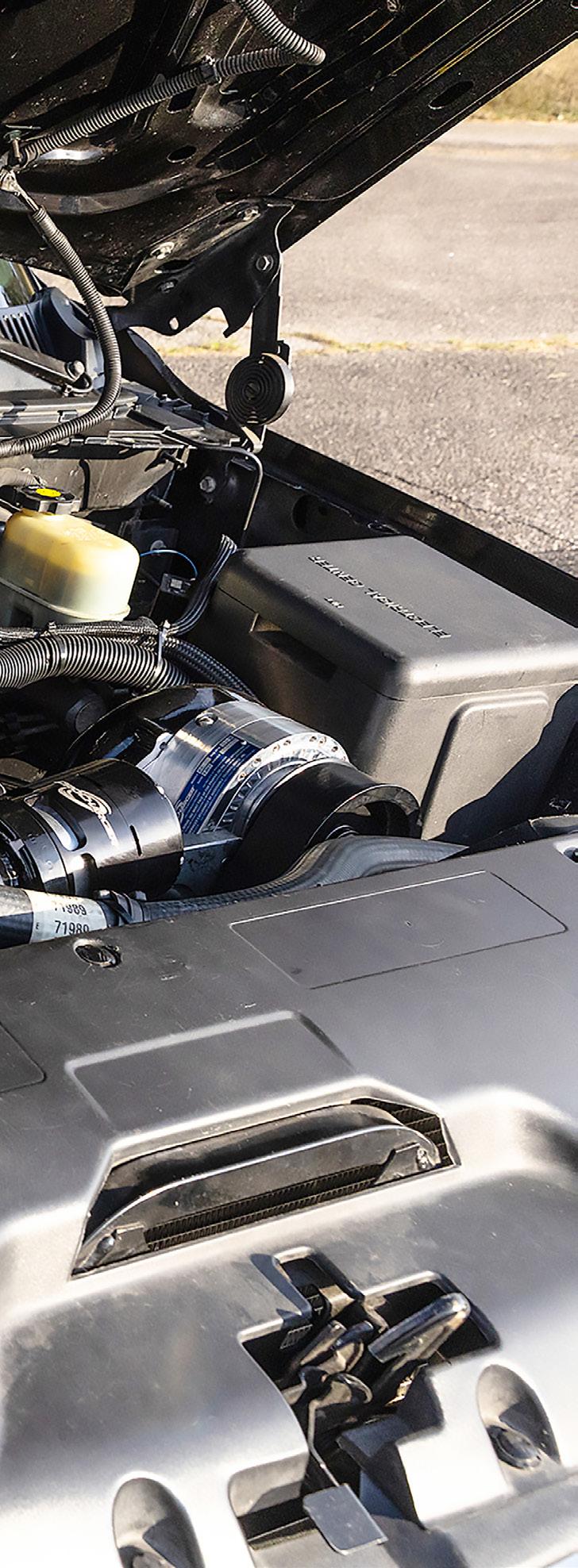

Jeremy's single cab is very street friendly and runs on pump E85. A custom 16-gallon fuel cell sits under the bed, while a Weldon 2345A fuel pump supplies fuel to 8 1,650cc injectors. Jeremy still runs the factory ECU but does use an MSD 2-Step controller.




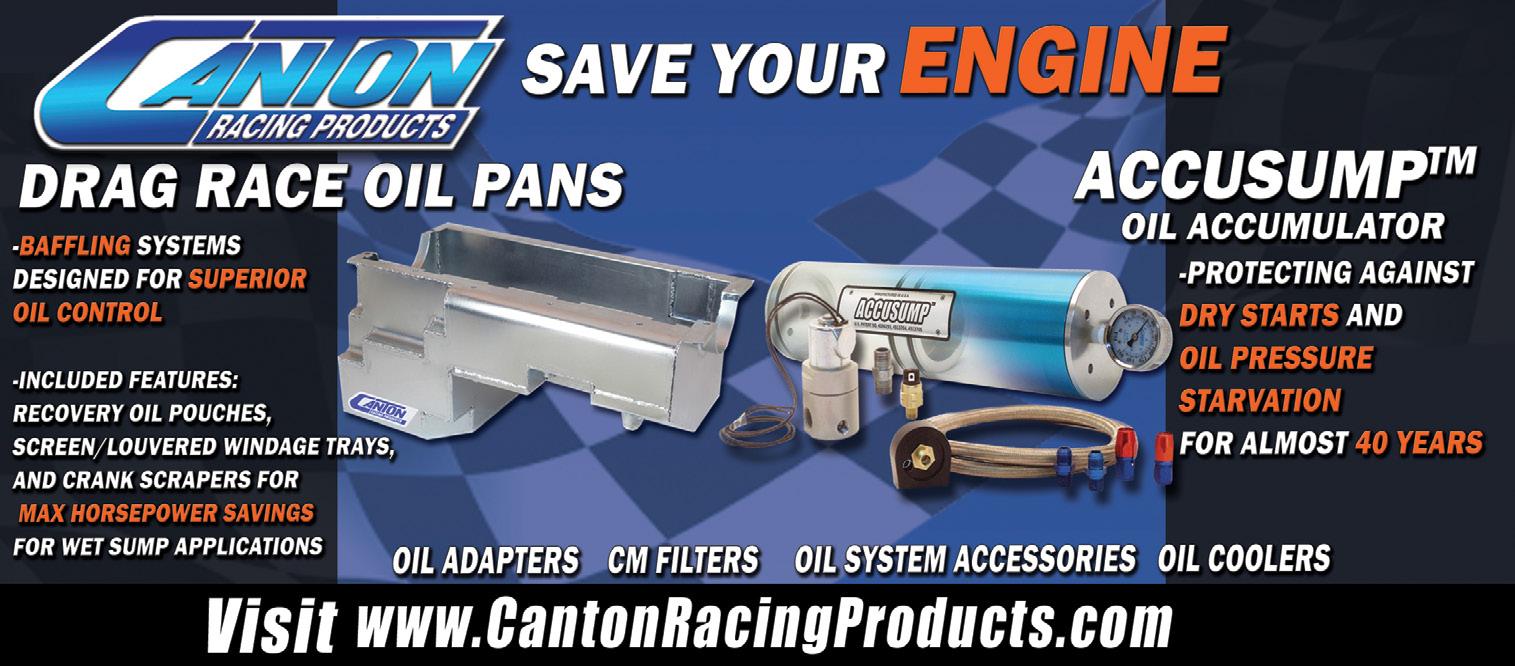
When it came to adding extra power, he decided on a different route this time around, going with a centrifugal supercharger, specifically a ProCharger F1X. The blower is driven by a 12-rib belt system, ensuring no belt slip and a Pro Race blow off valve vents off excess boost. A Shearfab air to water intercooler works with their 7-gallon bed mounted ice tank. Jeremy want-
ed to keep everything looking good, so almost everything under the hood was powder-coated black.

Considerable power means something substantial must be built to back it up; and for Singleton those duties are aptly handled by a Max Effort Rossler 4L80E—goodies such as a 1st/2nd gear Pro Brake and billet valve body reside in the case.
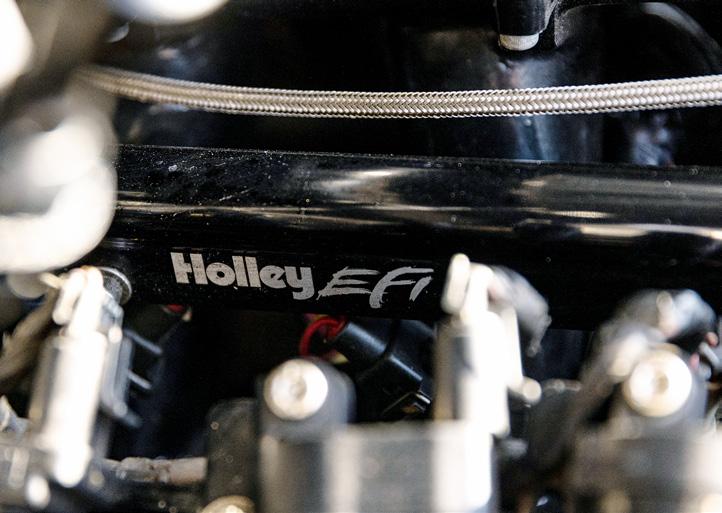

Jeremy Singleton’s 2002 GMC Sierra RCSB
■ Body:
All body panels are original except for the cowl hood, 2003 bumper, and 2003 grill. The original paint has been massaged and buffed to keep it looking slick.
■ Chassis & Suspension:
The front suspension consists of custom mounted double adjustable coilovers, 5 Lug swap hubs and rotors combined with 2” drop spindles for a killer stance.
The rear rides on Calvert racing split leafs, Caltracs bars, Funkhouser lower brackets and the custom mounted double adjustables keep it where it needs to be. A 1.25” Chromoly anti-roll bar was also installed.
■ Engine:
427CI Dart LS Next 6 Bolt Cast Iron Block 4.125” bore
■ Rotating Assembly:
Dart billet 4” stroke crank
Lunati Boostline 6.125” rods
Wiseco Custom -18cc dish pistons
■ Cylinder Heads:
Mast 295cc LS3 Black Label heads
Jesel adjustable shaft rockers
Pac hydraulic spring package
.120” Chromoly pushrods

Inconel exhaust valves .630”/.640” Cam Motion custom grind hydraulic roller cam
■ Induction & Fuel Delivery:
Holley LS3 Hi Ram 105mm powder coated gloss black

FIC 1,650cc injectors
Weldon2345a fuel pump 10an feed 8an return
Aeromotive 1:1 boost referenced regulator
16gal under bed fuel cell custom mounted
■ Electronics:
Stock 411 pcm with MSD two step
Battery relocated behind rear tag with master disconnect
■ Power Adder:
F1x ProCharger driven by 12 rib serpentine setup
ProCharger Pro Race blow off valve
Custom 4” cold side piping powder coated gloss black
Shearfab built 2,500hp A2W intercooler powder coated gloss black
Shearfab 7 gallon ice tank in bed powder coated gloss black
■ Transmission:
Max Effort Rossler 4L80E with 1st/2nd Gear Pro Brake and billet valve body
Neil Chance Billet single disc converter spec’d for setup
■ Rear End:

Custom built 9” Ford narrowed 3.5” per side
Moser 35 spline axles with 5/8” screw in studs
3.70 ring and pinion
Strange aluminum thru bolt third member with large pinion support
■ Brakes:
Stock front brakes with ceramic pads
Wilwood 4 piston rear
■ Tires & Wheels:
Front: RC Components Exile-S 17”x4.5” wrapped In 28” Mickey Thompson Sportsman tires
Rear: RC Components Torx double beadlocks 15”x10” with 4” back spacing 28”x10.5” Pro Bracket Radials
■ Interior:
Custom bolt in four point cage with removable door bars powder coated gloss black
Triple gauge pod for afr gauge, pre intercooler boost gauge, and intake boost gauge
Tow haul button is used for transbrake and cargo lamp switch for line lock
■ ET & MPH:
1/8th Mile 5.73 @ 119.2 MPH
■ Most Unique Feature(s)
How simple and clean the truck was kept.
■ Reason For Build:

I have always loved fast trucks. When this started I always wanted to keep it clean and neat.
■ Build Timeline:
From purchasing the truck until now has been roughly 3.5 years.
■ Most Memorable Experience To Date:
Running our personal best and having everything come together finally.
■ Thanks To:
My wife.
Torq’D Performance for chassis fabrication, suspension, all fabrication work and maintenance.
Jamie Parker for Tuning and Trackside Help.
Dustin Cumbie Paint for and Body Work.
Brute Speed, Robert Beam, ProCharger Parts and Service.
SPEED SAUCE T M PLUS INJECTION
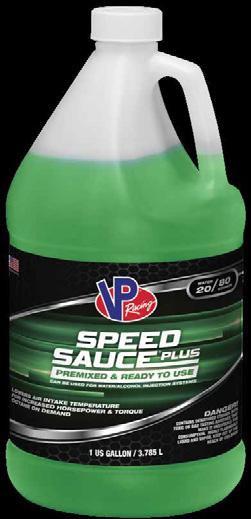

FLUID




Speed Sauce Plus water-ethanol mix comes premixed and ready to use straight from the bottle. Its 20/80 water/ethanol blend delivers more power per gallon. This ethanol-based fluid is not only less corrosive to fuel systems than methanol-based fluids but also safer to handle due to its lower toxicity.
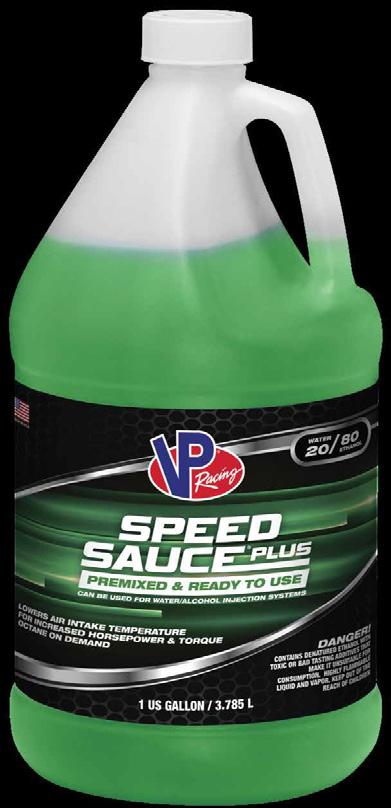
• Provides 4% more power compared to methanol-based injection fluids

• Produces up to 15% more horsepower/torque than stock, with proper tuning
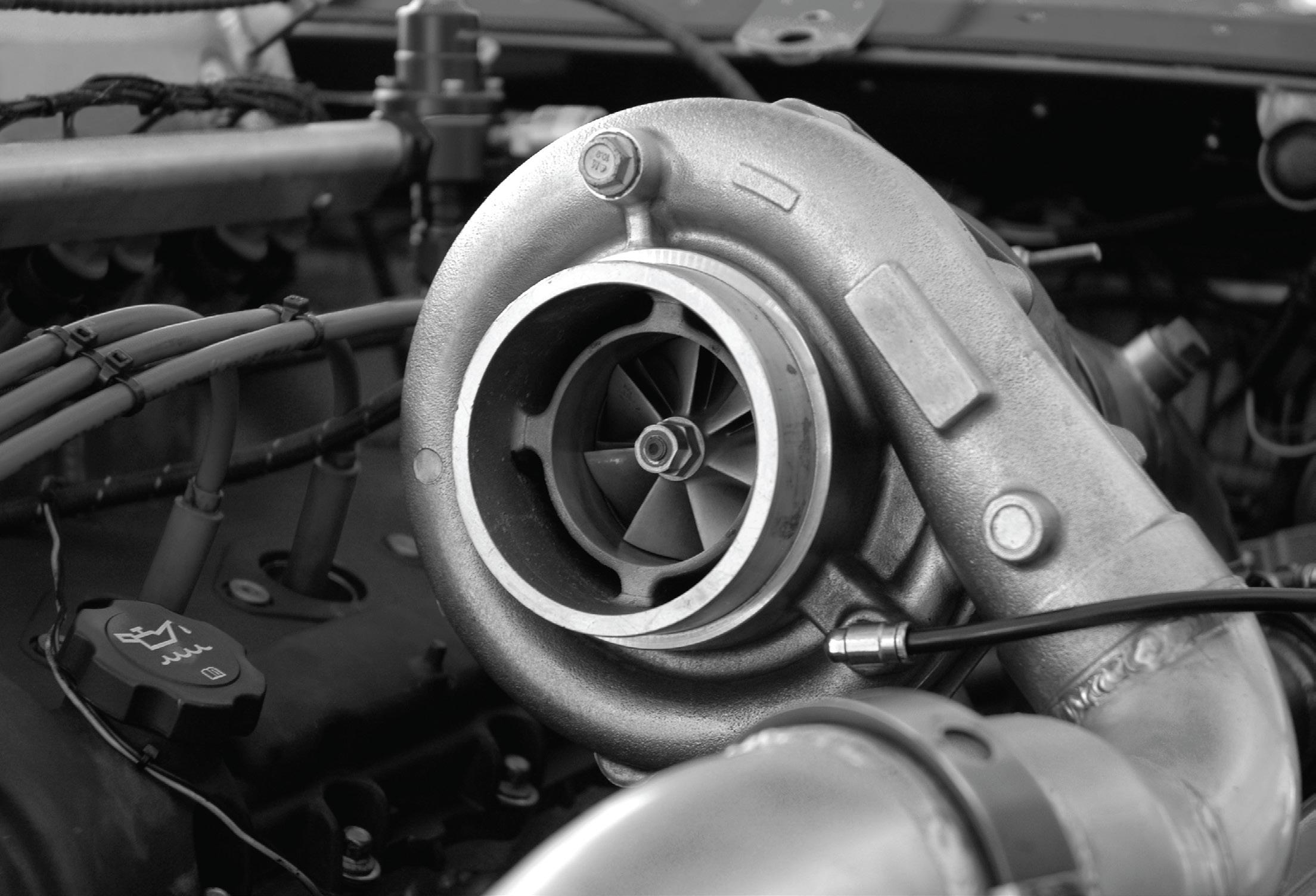
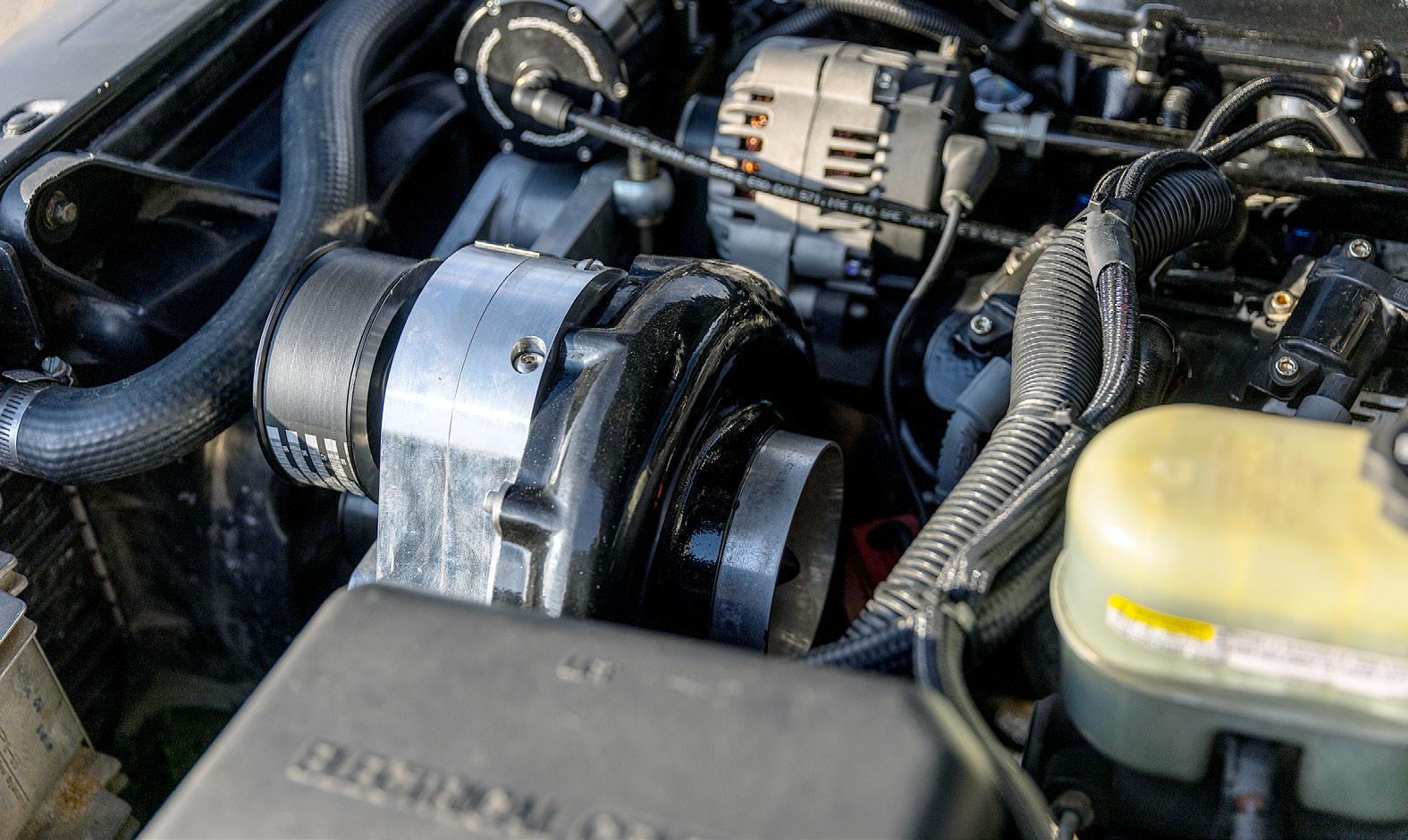
• Delivers added octane when needed thanks to the ethanol’s >115 octane rating
• Less corrosive than methanol version VPRacingFuels.com/
In addition, Neal Chance spec'd a single-disc billet torque converter for Jeremy’s setup.
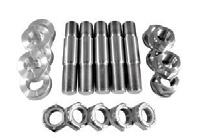
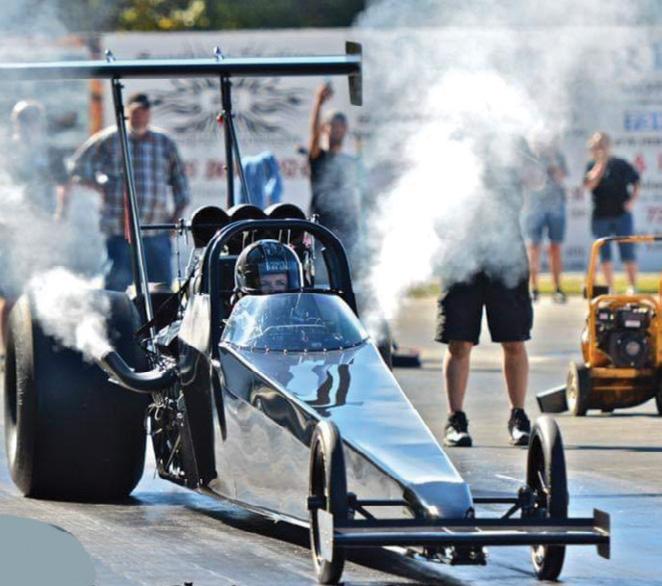
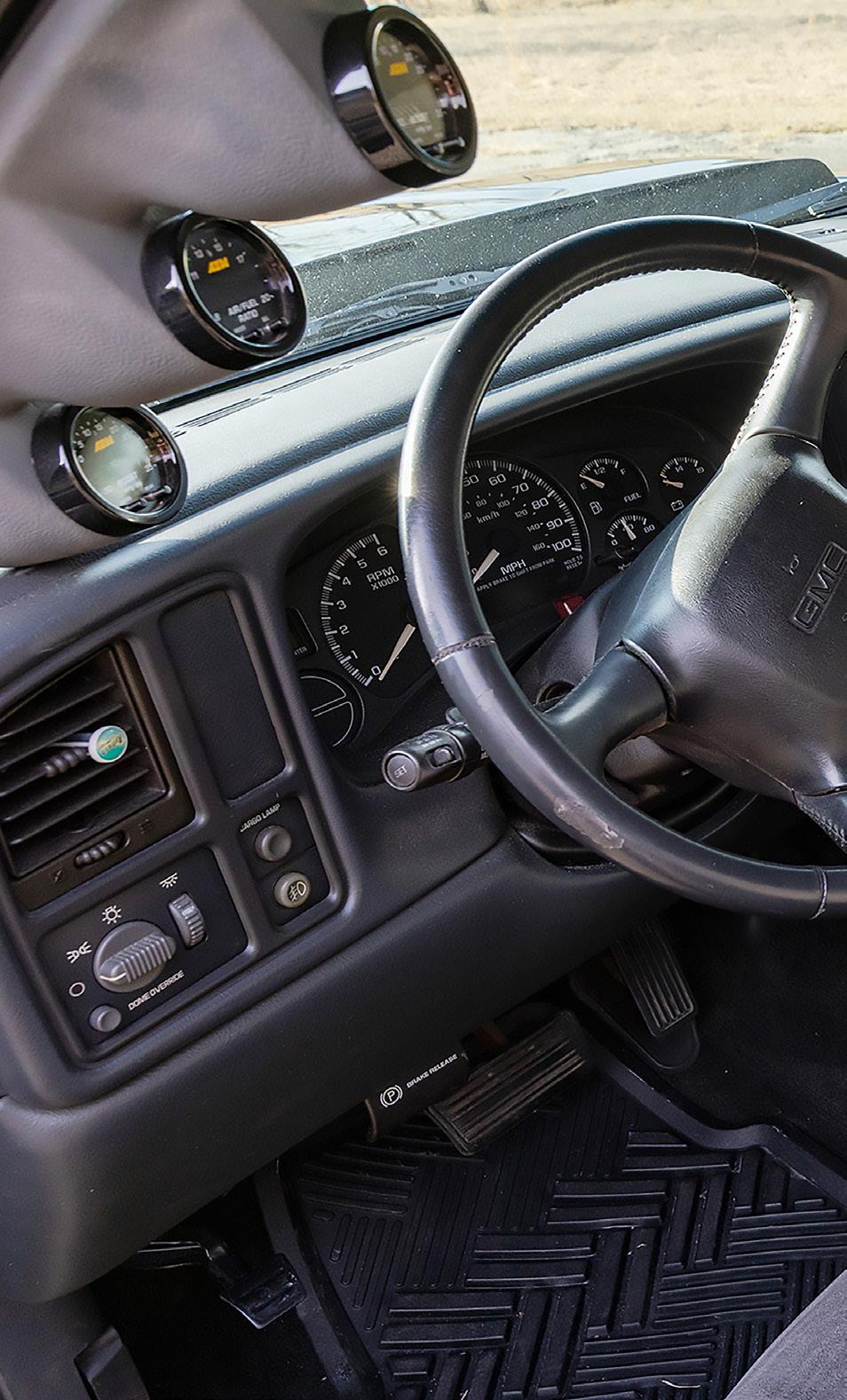

Like most, if not all light, duty trucks, SUVs, and straight-axle GM vehicles, the Sierra has a lousy 10bolt rear end which could be so much better. As expected, this Chevy is equipped with a tried and true Ford 9-inch rear end, narrowed 3.5 inches on each side, stuffed with Moser 35 spline axles, 5/8 screw-in
studs, and an aluminum bolt-through third member with large pinion support.
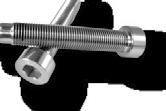
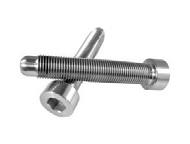
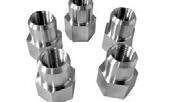
Factory brakes reside up front with aftermarket pads and aftermarket 4-piston caliper disc brakes were installed out back. RC Components ride on all four corners but in two different models with 17.45 Exile-S up front and 15x10 bead-locked Torx in the rear. 28inch rubber is found on all four corners.


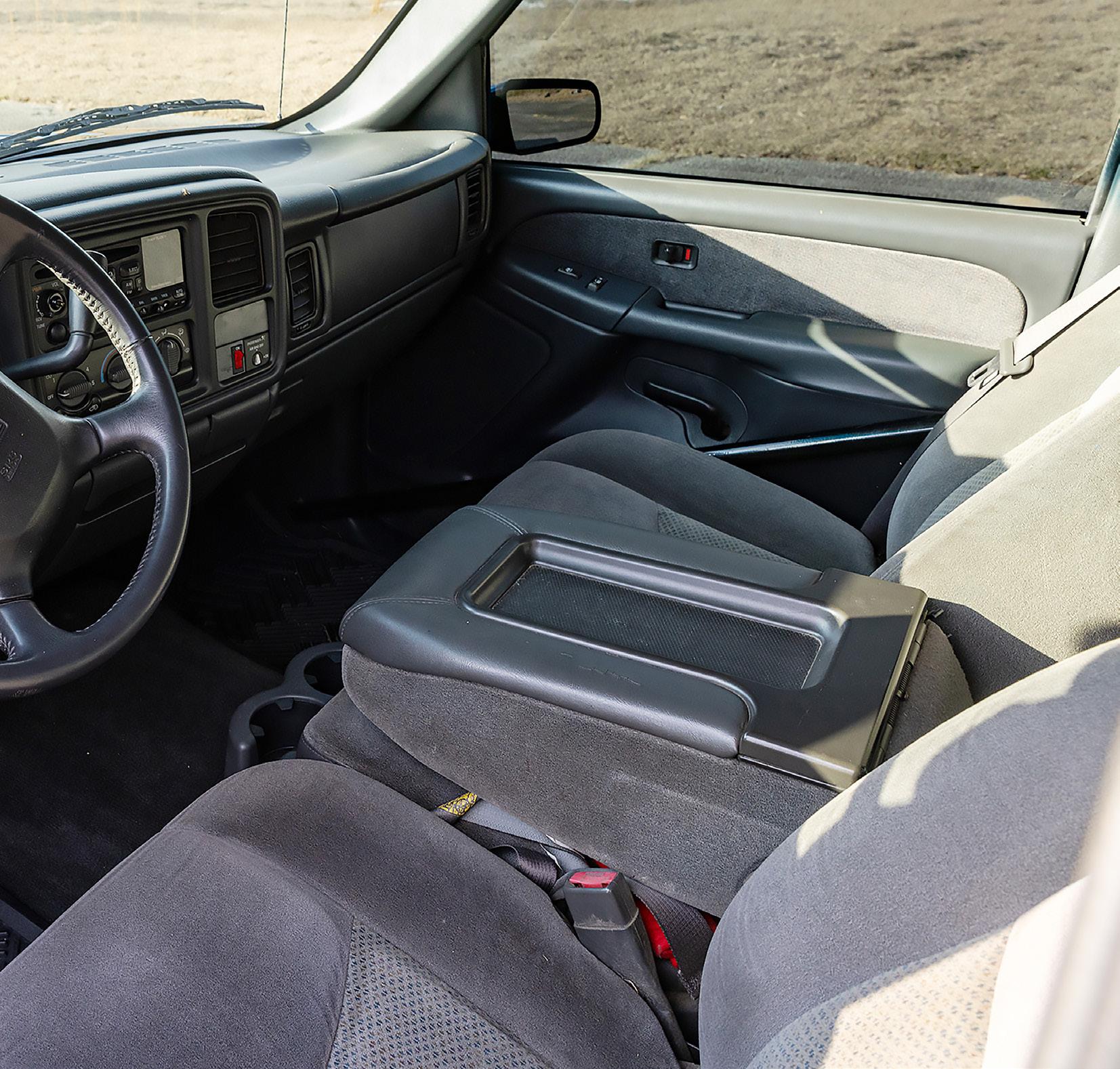




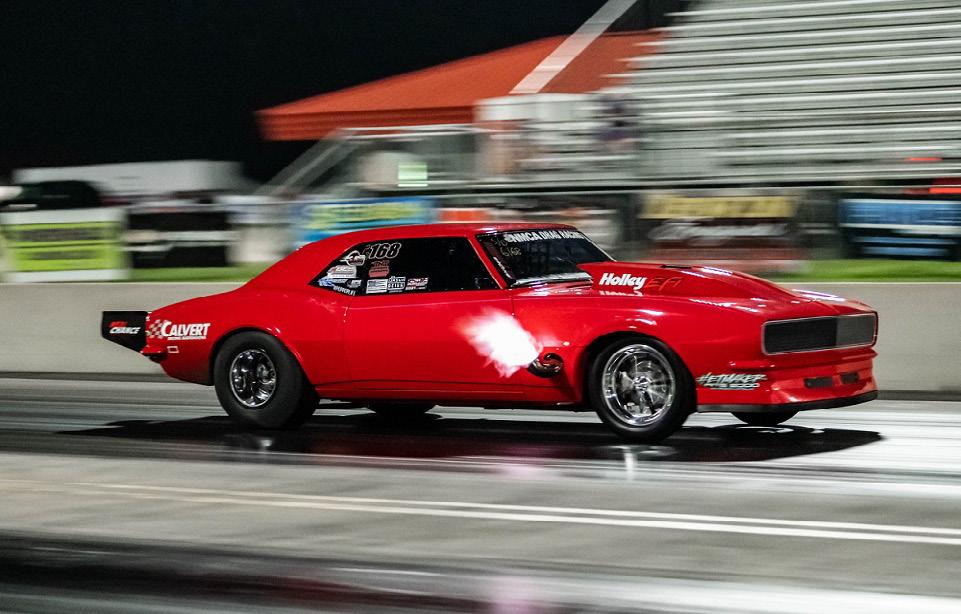














Getting a truck to move down a drag strip can be challenging as all the weight is near the front and not above the drive wheels, making it hard to plant the tires. Jeremy combated this a few ways; he installed a custom-mounted set of QA1 double adjustable coilovers and some 2-inch drop spindles up front. Next, he runs Calvert Racing split leaf springs, Caltrac bars, Funkhouse lower brackets, and a 1.25 chromoly anti-roll bar to get those tires planted. Finally, another custom-mounted QA1 double adjustable shock set sits below the bed.
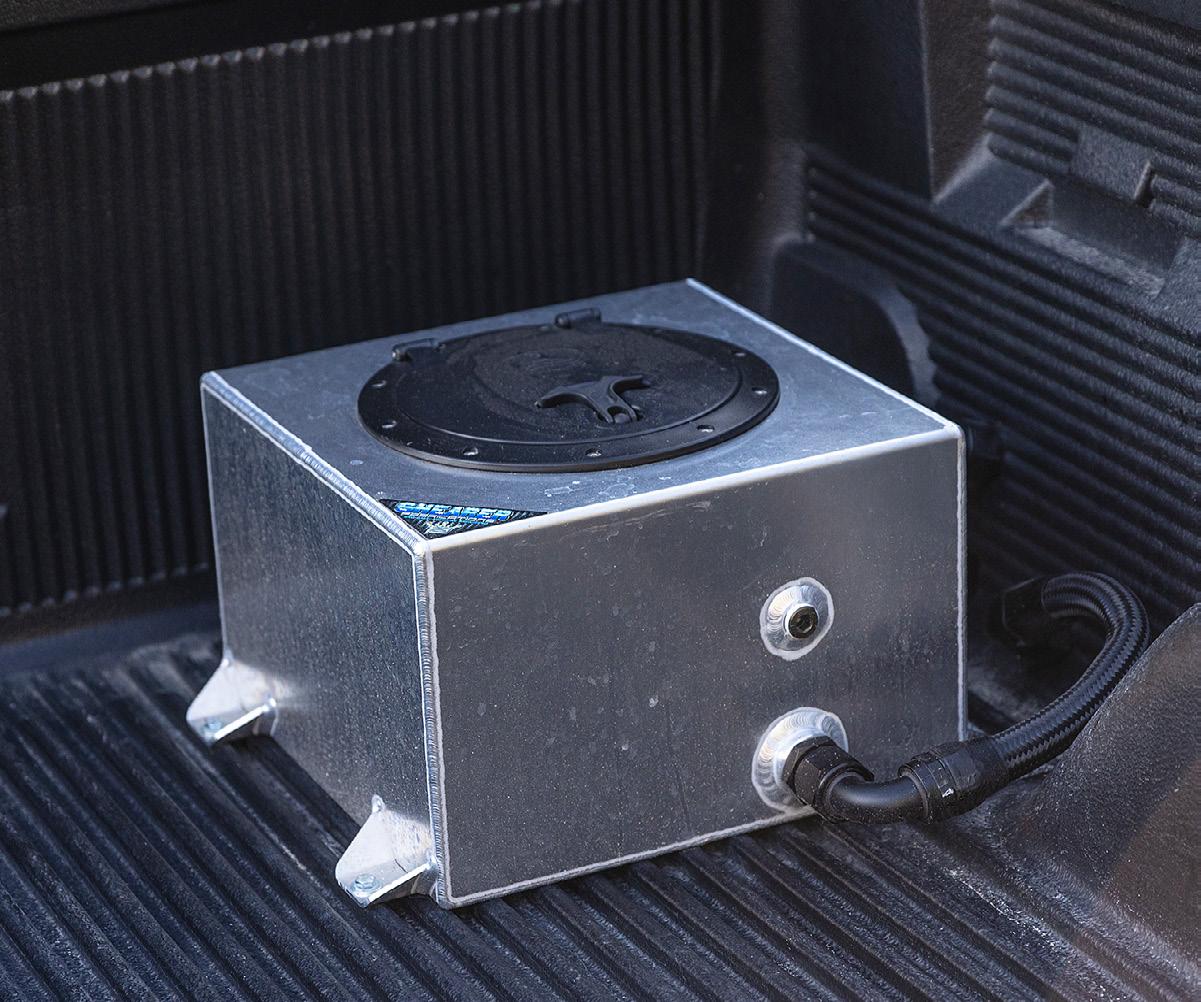







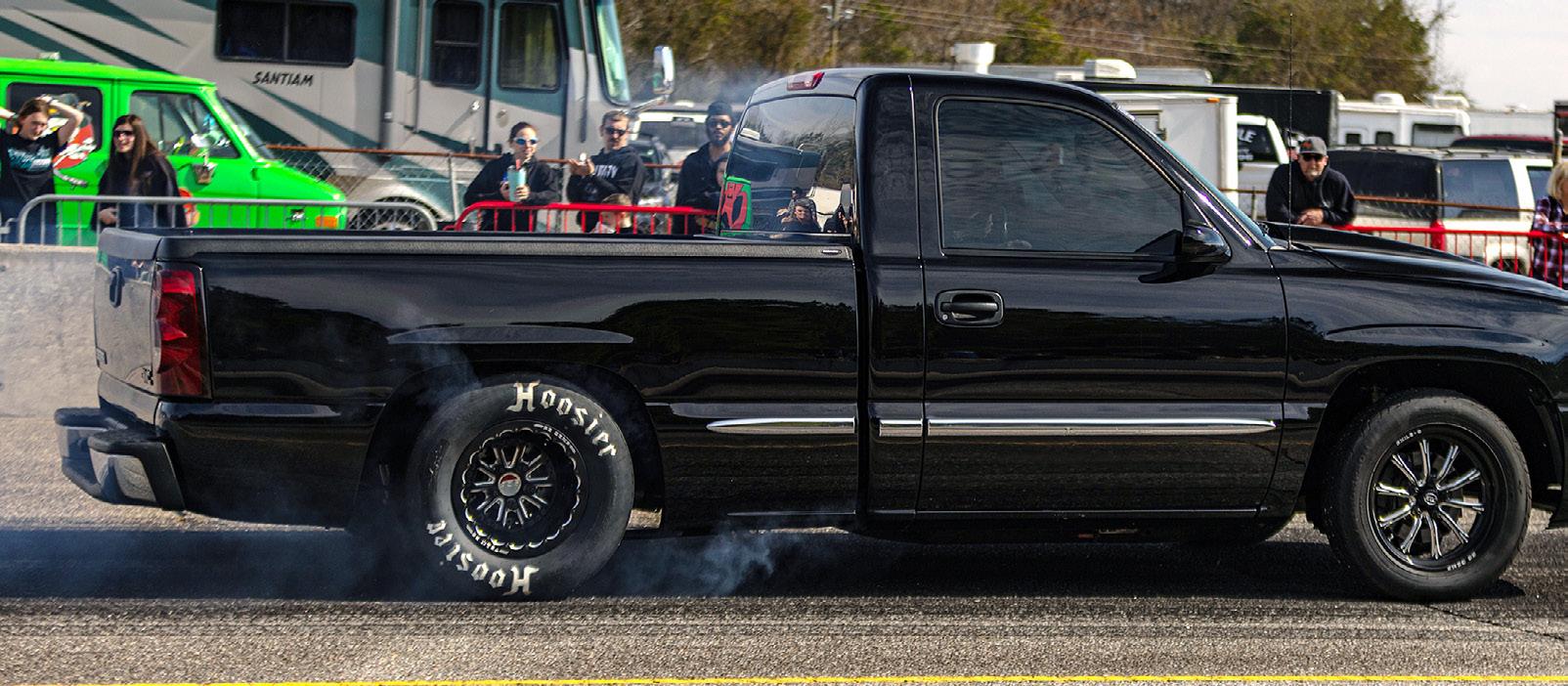
Suspension took some serious thought given that a truck is so light in the rear. Drop spindles and coilovers up front with Calvert Racing split leaf springs, Caltrac bars, Funkhouse lower brackets, a 1.25 chromoly anti-roll bar and double adjustable shocks out back get those tires planted. You can see that Singleton figured out the hook part of the equation and the truck will launch on any surface, prep or no-prep.

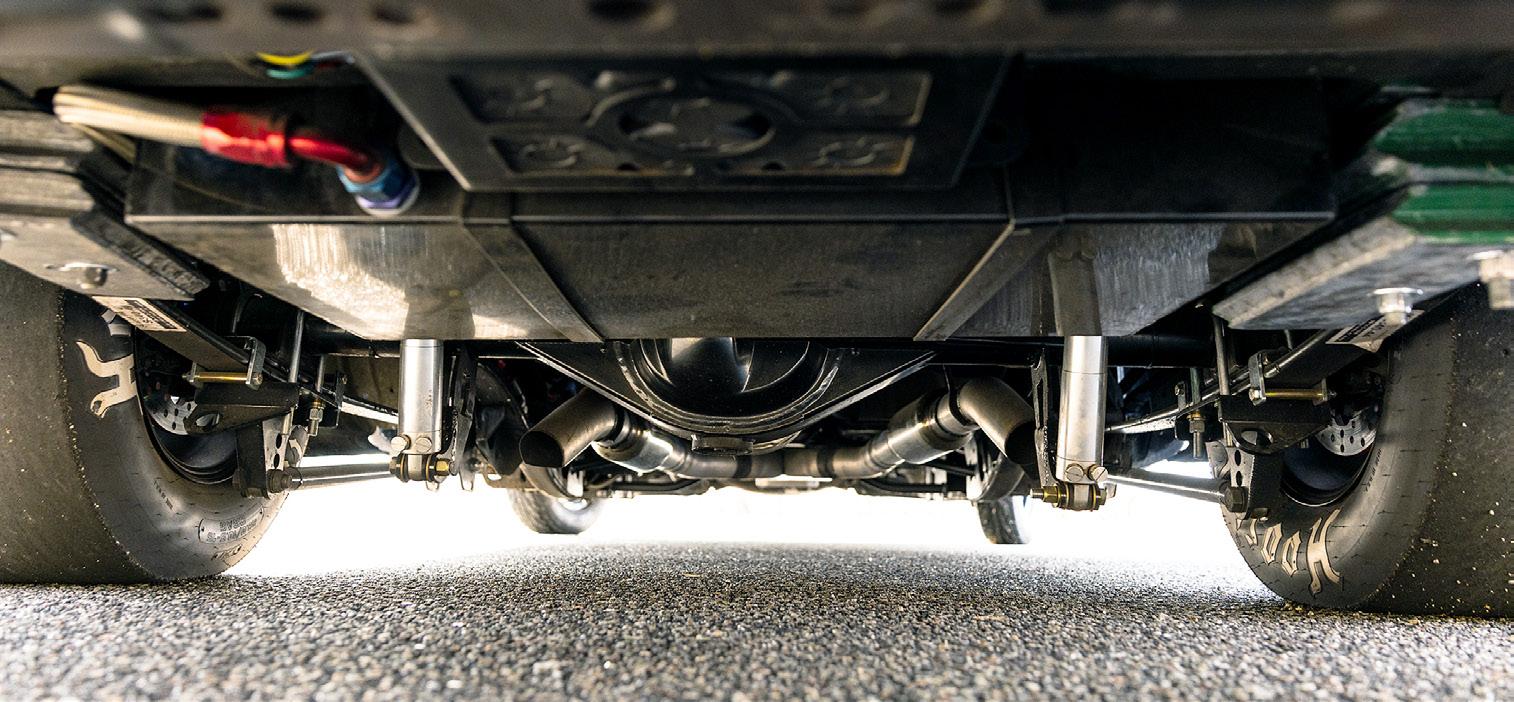




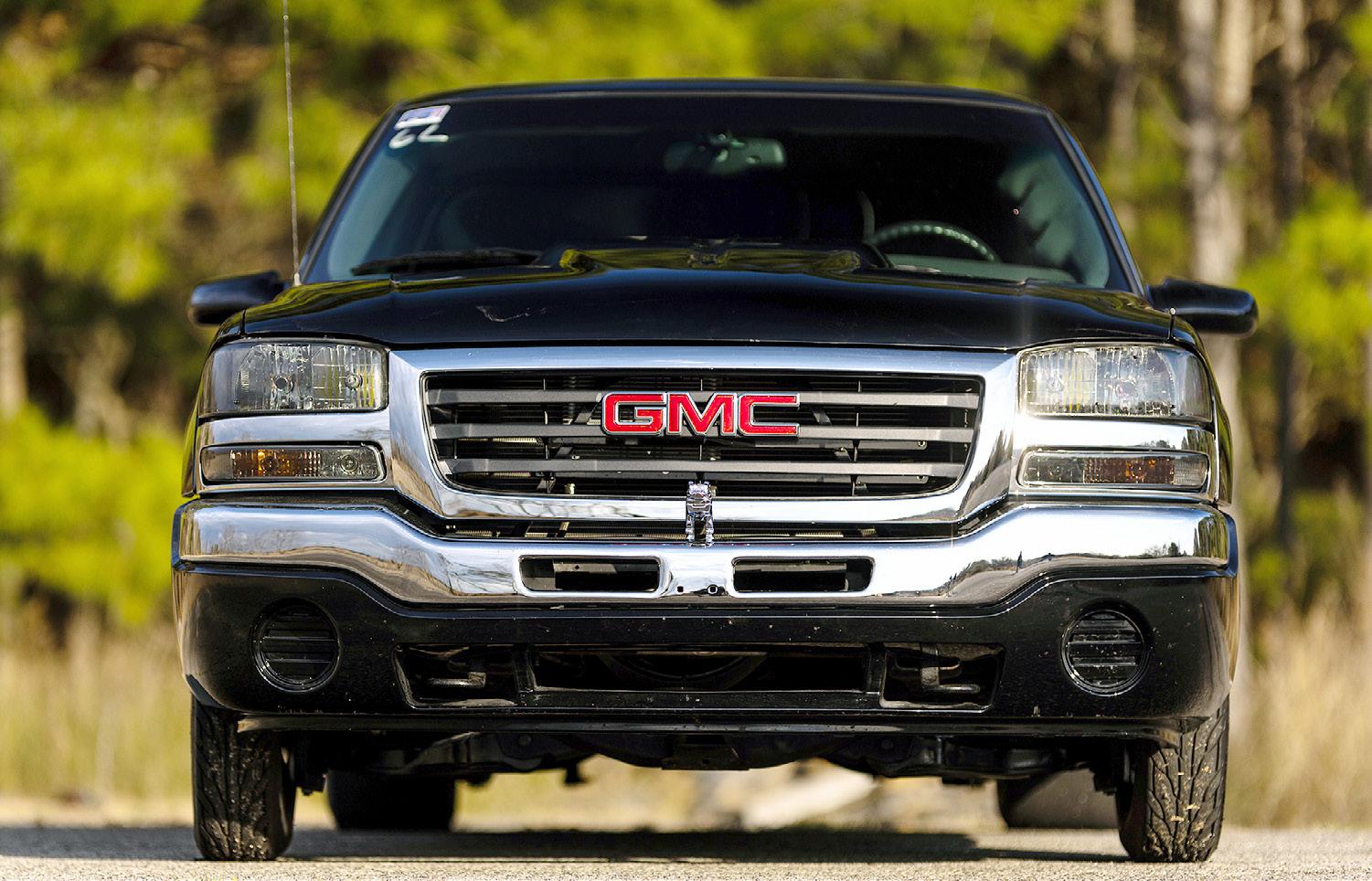


The interior remains intact but sports roll cage to aid safety and stiffen the chassis. The door bars are removable, all painted black to blend in—a three-gage a-pillar pod house AFR, pre-intercooland intake boost gages. Singleton got creative and wired a trans brake into tow/haul button and used the cargo lamp switch for a line lock. Doing that
allowed him to keep the interior as neat as possible.
All body panels are original except for the cowl hood and an updated grille/ bumper from an '03 to help spice things up. Speaking of small aesthetics, queue in "Mack," the bulldog standing front and center of the grille. Jeremy grew up loving model trucks, even through high

school he continued to build them. He'd always thought of having a hood ornament on a truck but was never brave enough to do it, however, once this build started his wife Maegan surprised him with a real metal bulldog from a Mack truck dealership, and that’s how the Sierra got its name, “Mack Daddy”.


John Caruso’s 1961 Corvette Convertible

Without a doubt, the gorgeous custom mixed House of Kolors Candy Purple paintjob with pearl white, fuchsia, and grey graphics is one of the first things most folks notice about John Caruso’s ‘vette. Before being prepped and sprayed by Bobby and John Canti at Combine Auto, it was fitted with a fiberglass aero scoop but otherwise left relatively stock. Funky Frank added custom pinstriping and Corvette lettering.
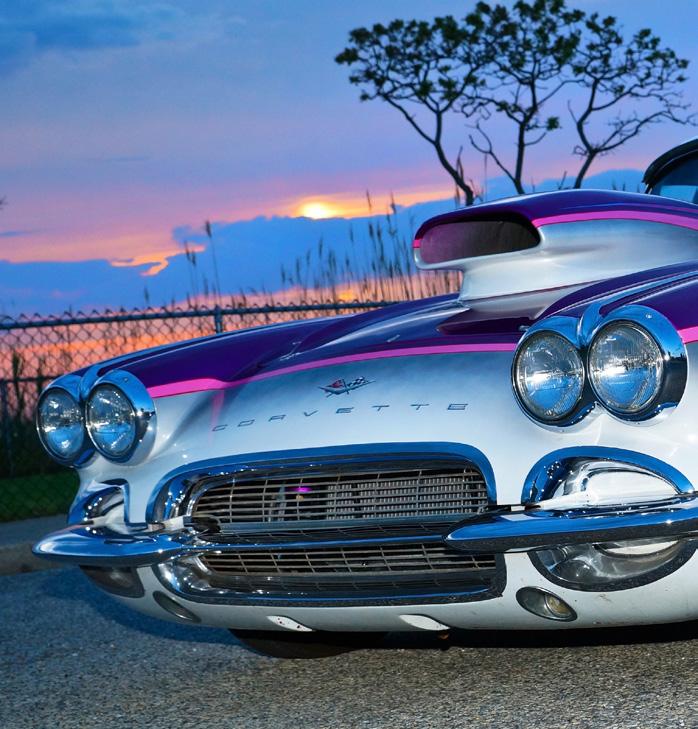

John Caruso isn’t the kind of guy to make a hasty decision. After all, the owner of New Apple Automotive Warehouse first purchased this lightning-quick 1961 Corvette as a gutted-out roller for the paltry sum of $2,000 all the way back in 1976. While nearly every aspect of the car, including the powertrain, paint, body, tires, and wheels have changed over the years, one thing has remained the same: his name on the title.
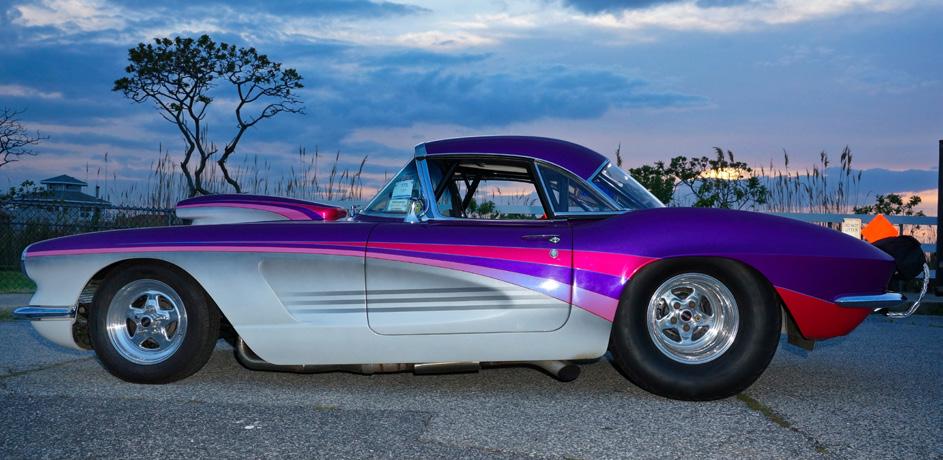
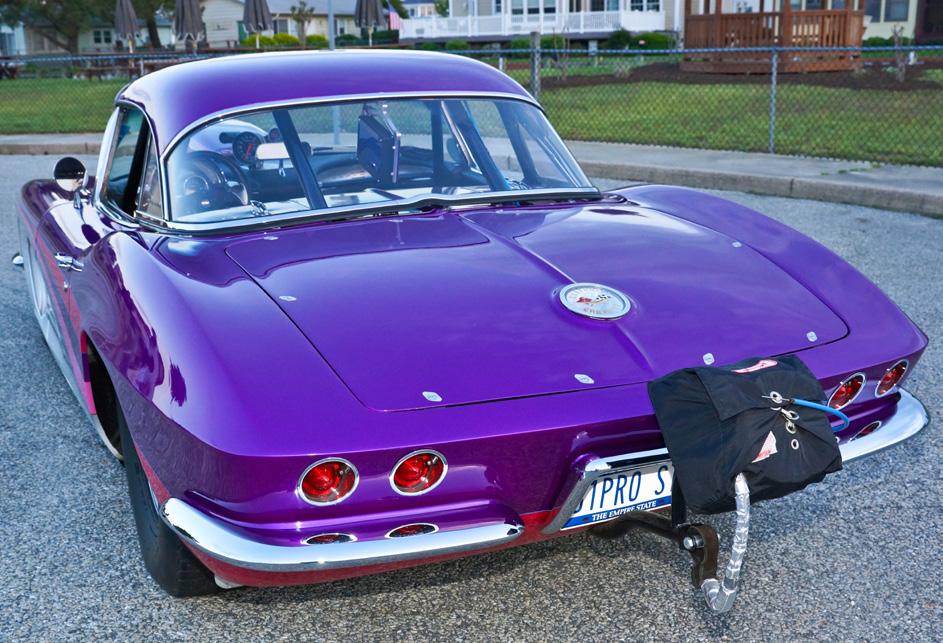

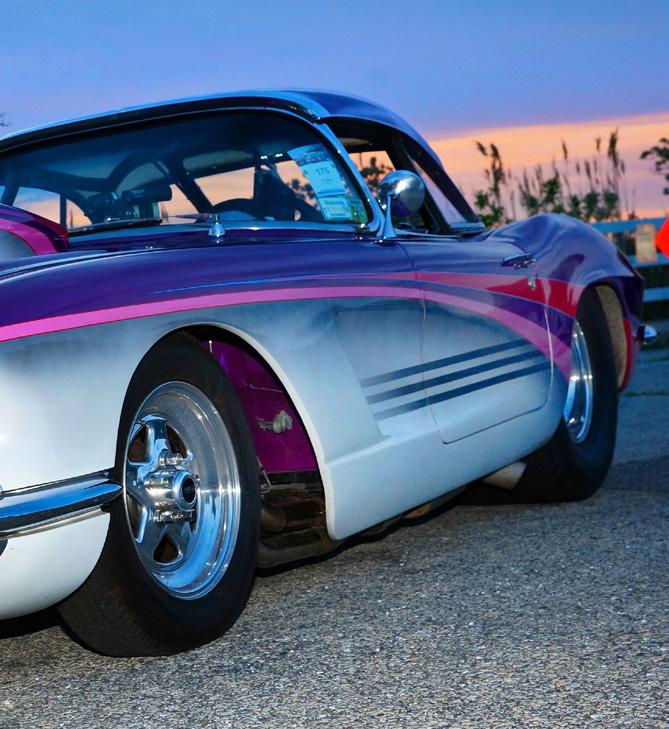
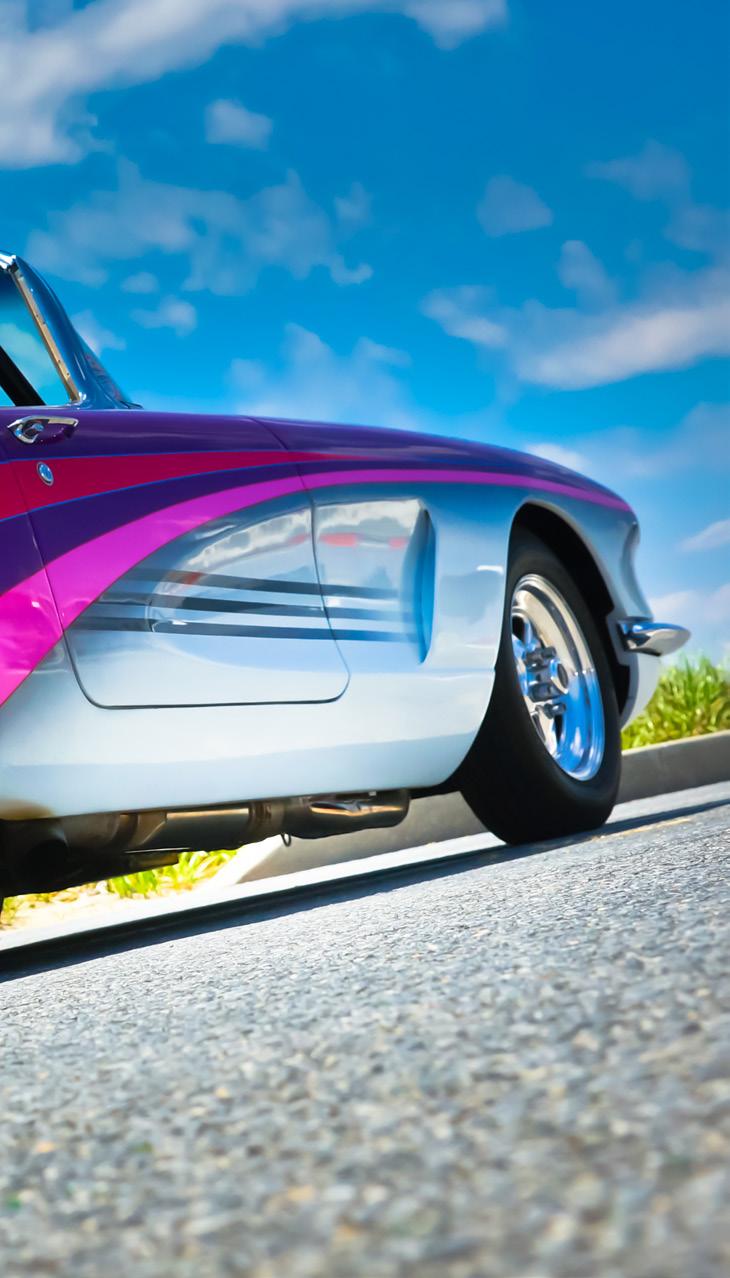
Inside, it is clear that Caruso doesn’t just drag-n-thrash on the classic Bowtie. The interior sports a pair of custom built heated leather seats and a custom leather dash by Corvette Central. Additional creature comforts include a Alpine in-dash DVD with navigation, a pair of Alpine audio amplifiers, and a custom Flaming River steering column and Grant wheel. AutoMeter gauges help keep tabs on all the critical readings. Shifting duties are handled by a Hurst Quarter Stick with Line Loc.
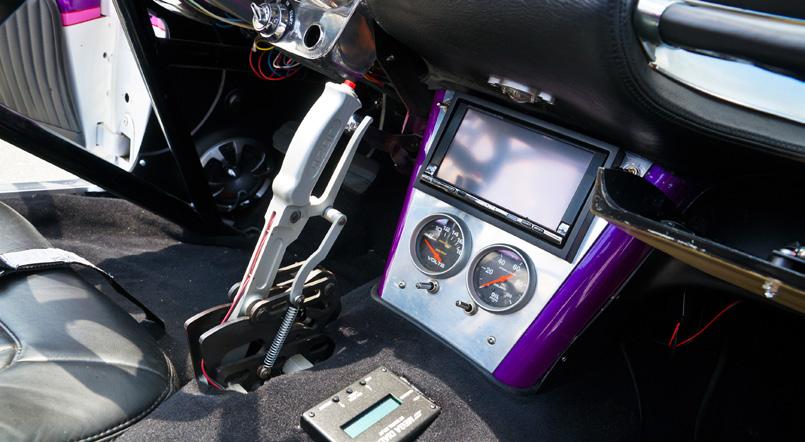


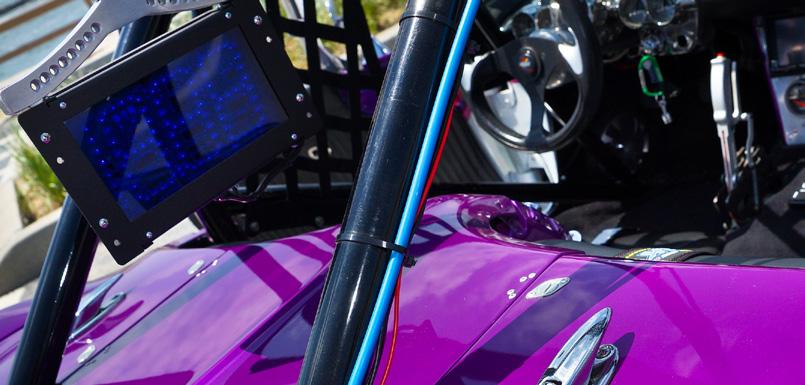

Caruso found an incredible bargain in a fresh 900 HP 555 CI Scott Shafiroff big block Chevy in 2008, fulfilling his longtime vision of a Chevy rat under the ’glass. The engine was freshened last season when Caruso pushed it out to 565 CI. The new combo was good for 996 HP and 835 ft/lbs of torque.

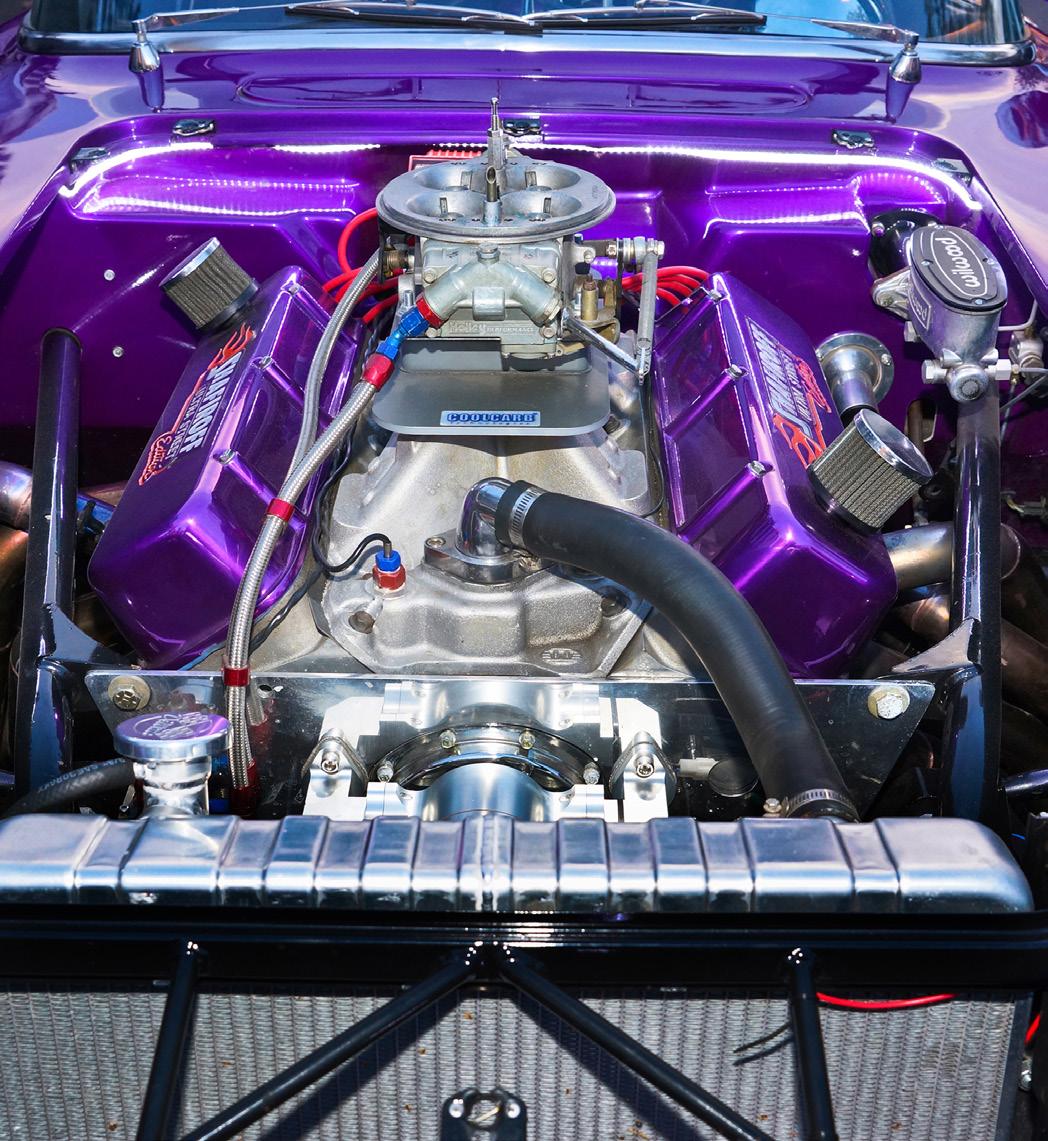


Among other go-fast goodies, the engine has been fitted with 14.7:1 forged pistons, a Calles crank, and DART heads. Induction is a tried-and-true Holley Dominator mounted atop an aluminum high-rise intake. Ignition chores are handled by an MSD distributor, coil, and plug wires while all plumbing is routed through Earl’s Performance lines and fittings.
Backing the engine is a stout G-Force five-speed transmission with a 3.05 first gear that adeptly passes all those ponies to a custom-fabricated Ford 9-inch housing. The rear has been loaded with a Mark Williams center section, Williams 4.10 gears, and a nearly indestructible pair of Williams 40-spline axles.
Pulling the car to a stop after yet another low 8-second pass (8.32 @ 165 MPH best) is a full set of Wilwood disc brakes plumbed to a Wilwood master cylinder. Stopping duties are further assisted by Simpson drag ’chute with a custom fabricated mount by T.J. from AKA Auto Truck and Bus.
The car is fitted with an iconic set of 15-inch diameter polished Weld Drag Stars with 3.5-inch wide fronts and 14-inch wide rears. For street duty, a pair of massive 33x22.5 Mickey Thompson Sportsman SR rears fill the tubs.
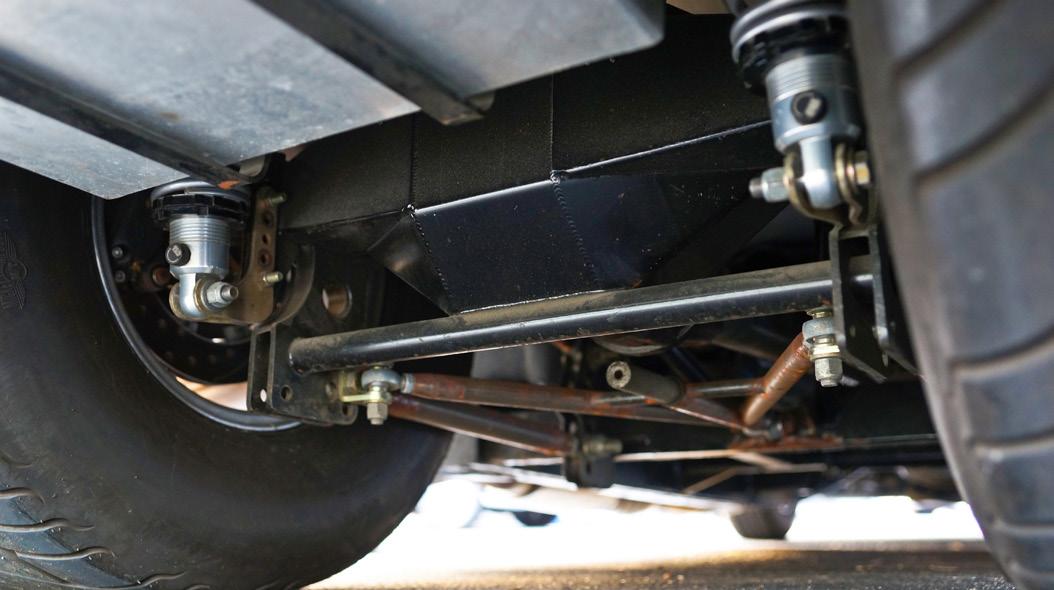

“I wouldn’t sell it for any amount of money,...”
Caruso says his wishes are for the car to stay in the family well after he’s gone. “It is being handed down to my children,” he concluded.
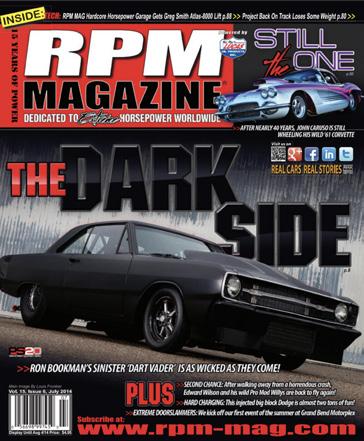
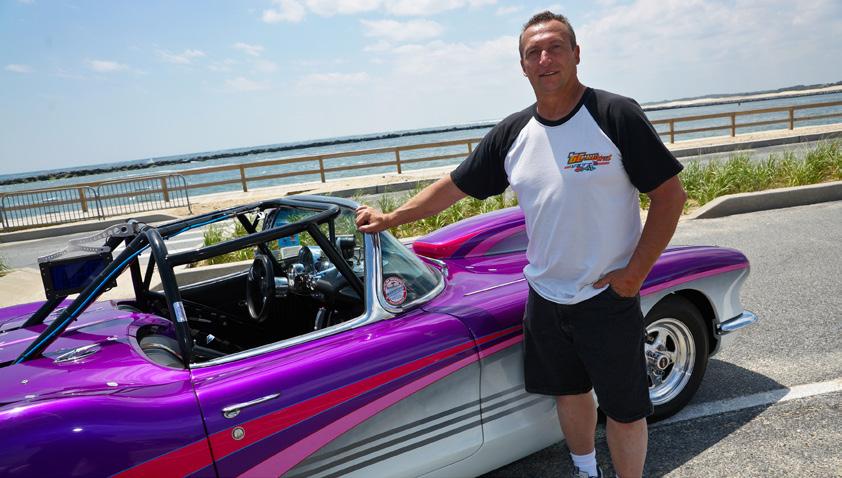

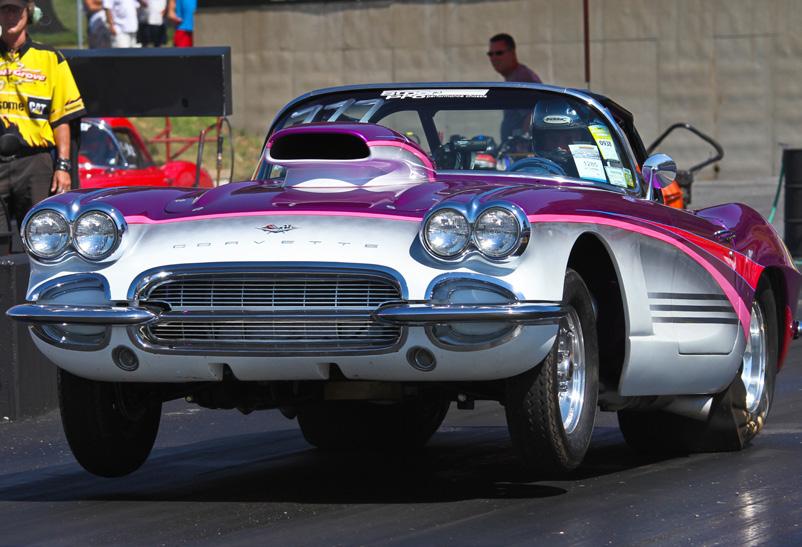
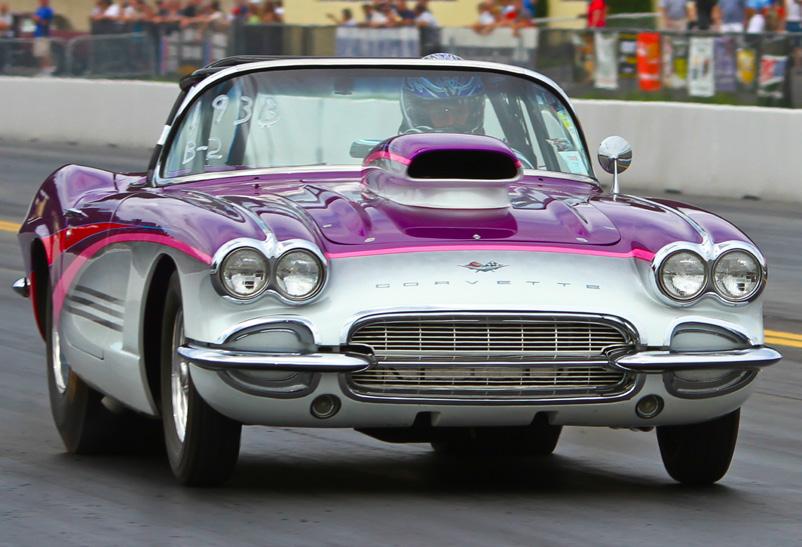
What’s Old Is New if you haven’t read it yet!

Over the coming months we will be hosting some of our past issues of RPM Magazine in this section. If you haven’t read them yet, they are new to you! If you have, maybe there’s a favourite car/story you want to read again….here they are!


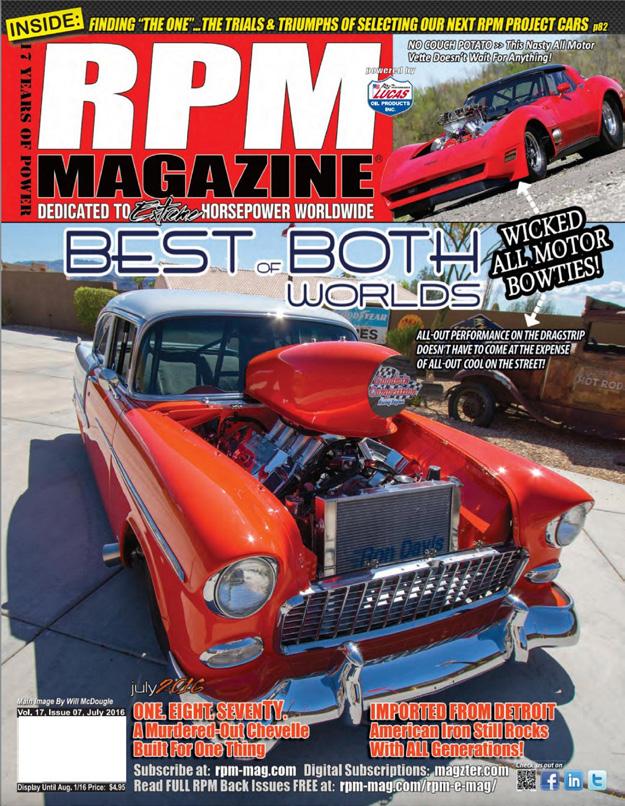

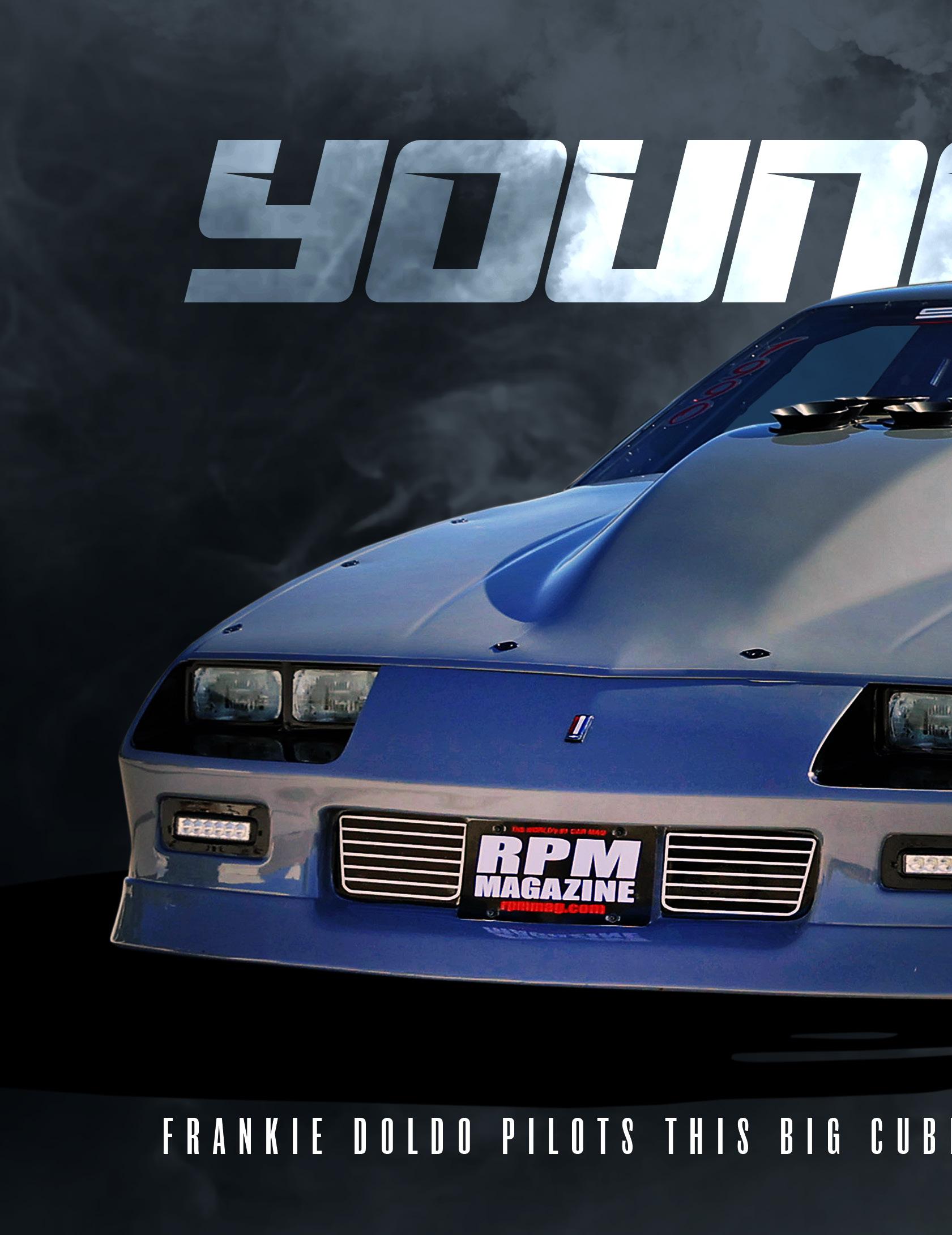
 Story: George Pich | Photos: Blake Farnan
Story: George Pich | Photos: Blake Farnan
There are obvious pressures working against the longevity of ICE (internal combustion engines) and their use in the world of street cars and drag racing – the development of electric vehicles, tracks closing, restrictions on emissions and noise – but so far, as an industry we’ve figured out how to adapt and continue, and it’s comforting to see the next generation stepping up and into the world of fast cars.
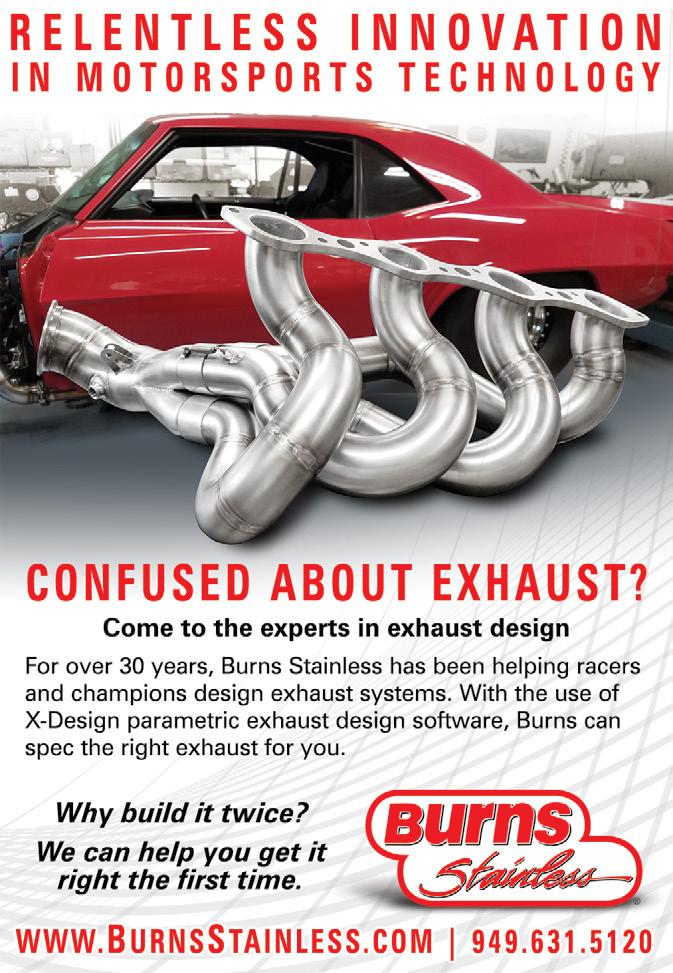

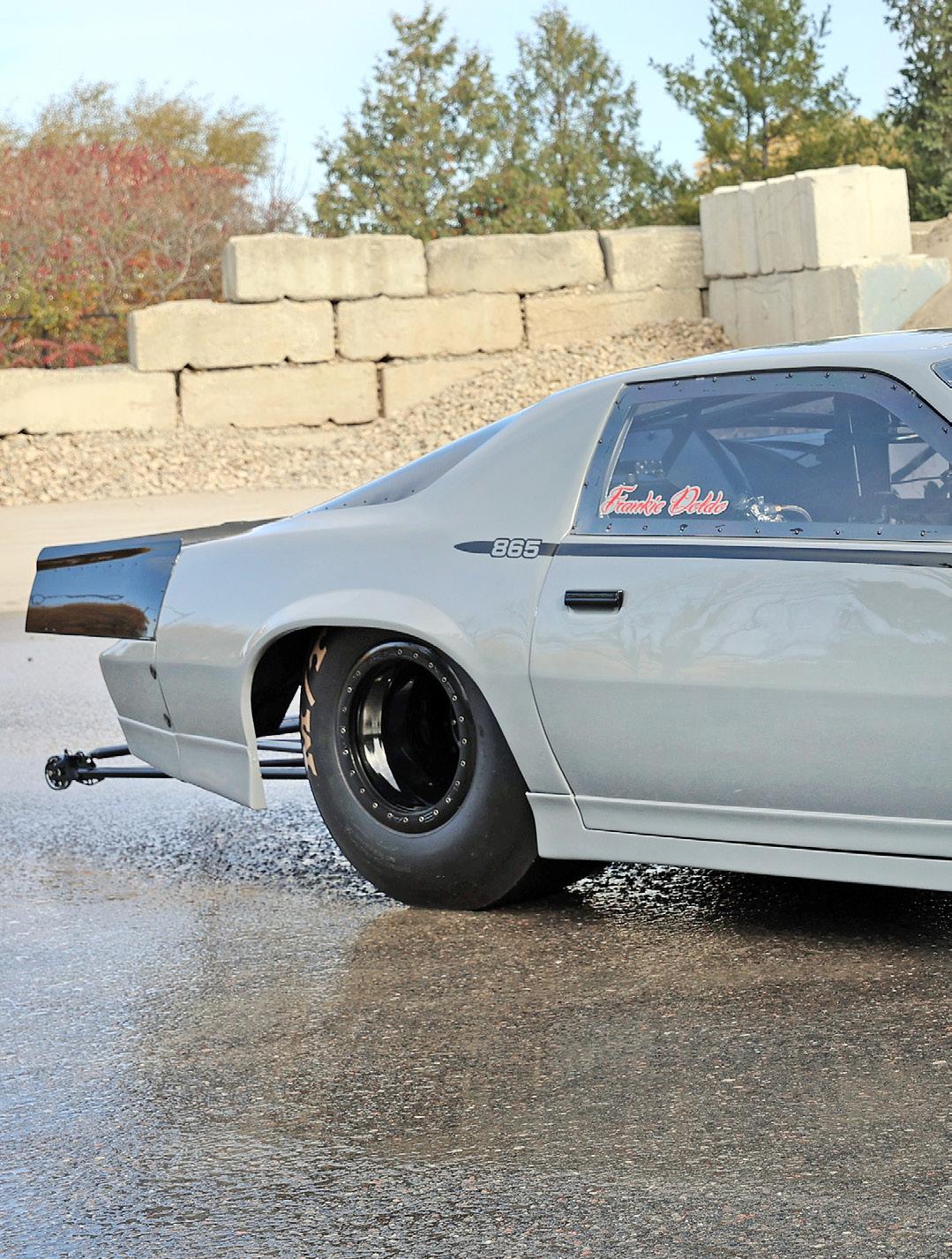

The future is in the hands of our youth.





For Frankie Doldo, his interest started early and, given his bloodline, there was little doubt that it would grow and develop into driving a badass Outlaw 3rd Gen Camaro with just shy of 900 cubic inches and 4 stages of nitrous oxide!
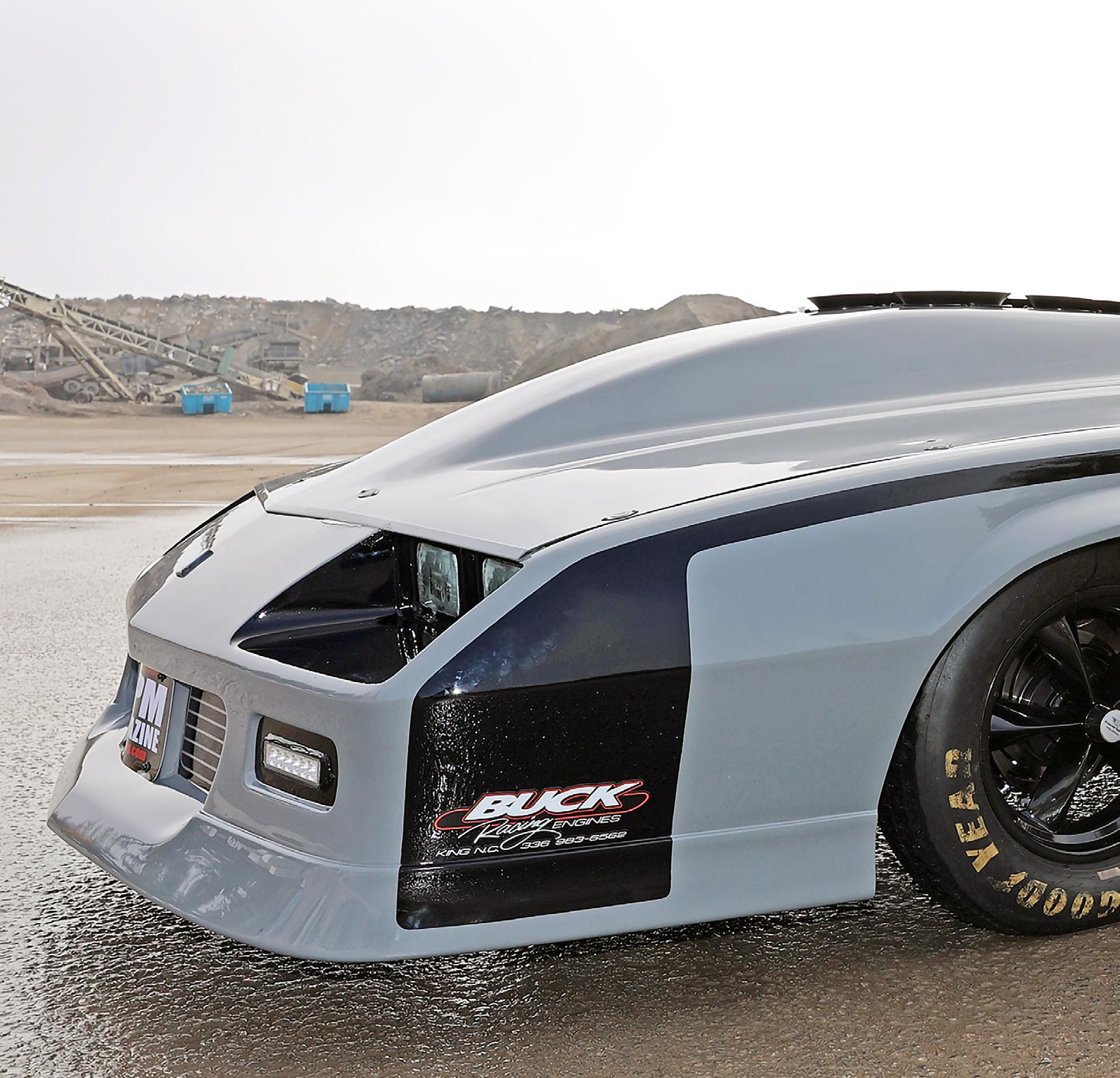
“Cars were introduced to me at a very young age by my dad


Pat who is heavily involved with muscle cars and racing. He included me with his involvement every step of the way,” Doldo explained. “My job at a young age was the ‘Crew Guy’ helping, fixing, and running around to get the car ready for the next rounds.” By the time he was able to drive it’s no sur-
prise that Frankie not only had a huge passion for muscle cars, but knew the ins and outs of drag racing, too. He would hit every car show, cruise night and drag race possible and even chose to continue his schooling in the automotive industry, eventually getting his mechanic's license.
This 1985 Camaro is definitely an attention grabber. Not only is it a rare bodystyle to find in top-level Outlaw and Grudge street car drags, but the paint, reminiscent of a navy gunship, stands out in any crowd. That, along with the Joe Van O wing and hockey stick style stripes (complete with a hint as to the 865 cubic inches between the rails of the Camaro) make for one slick looking ride. Copious amounts of air enter through the 4 twin stacks poking through the hood and spent gas exits via fender dump headers.




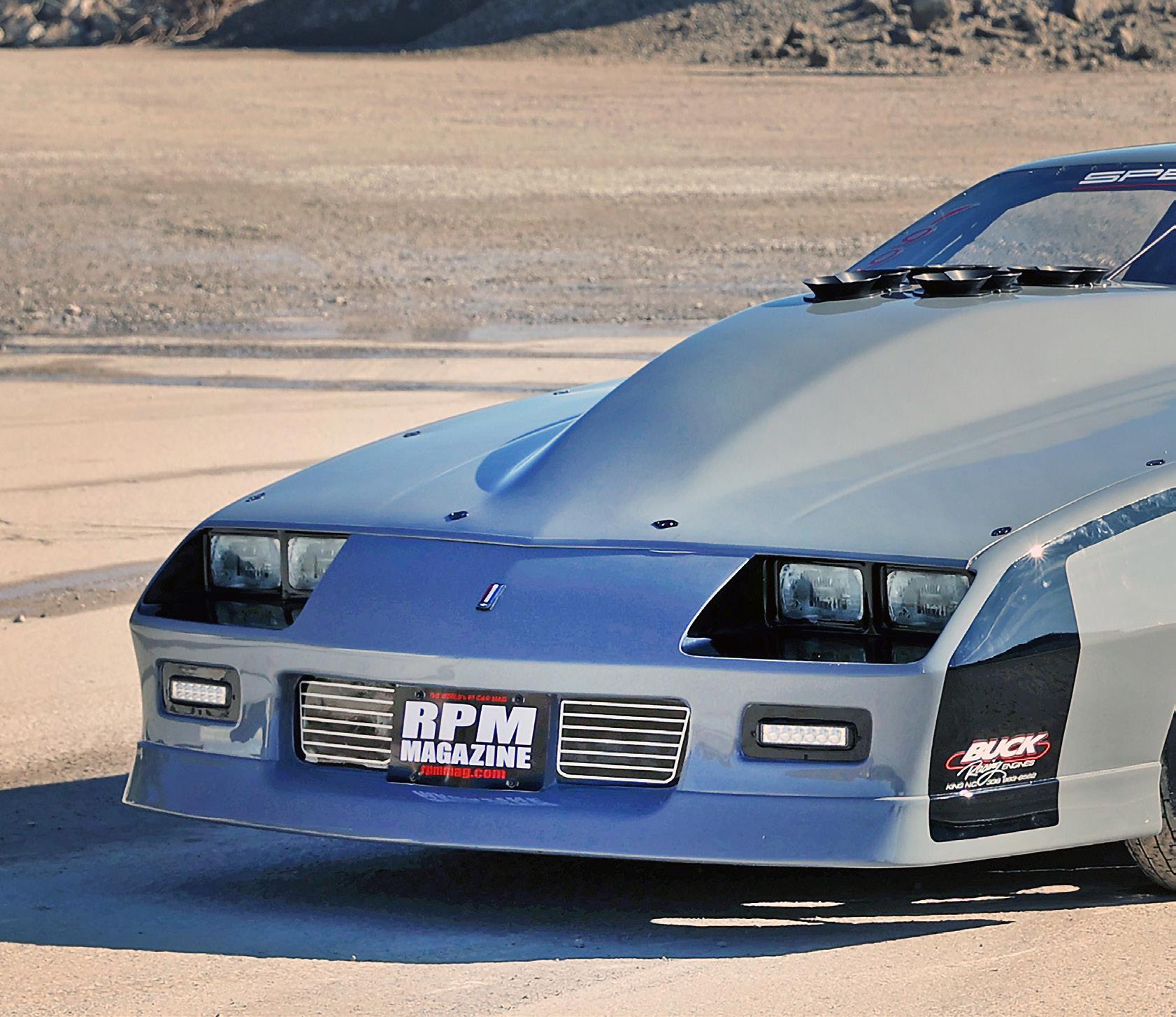

At every opportunity Frankie learned from those around him and for the past 7 years has been driving some type of drag car in competition. “My ultimate dream was to own my own fast muscle car and win races and I do whatever it takes to make it happen, however, without the support of my

family and friends, this dream would not be possible. I was by my dad’s side then, and now he stands proud by my side.”

For the Doldos and their team, it’s not only about the racing, but what they are racing and they have a special connection to this particular 1985 Camaro.
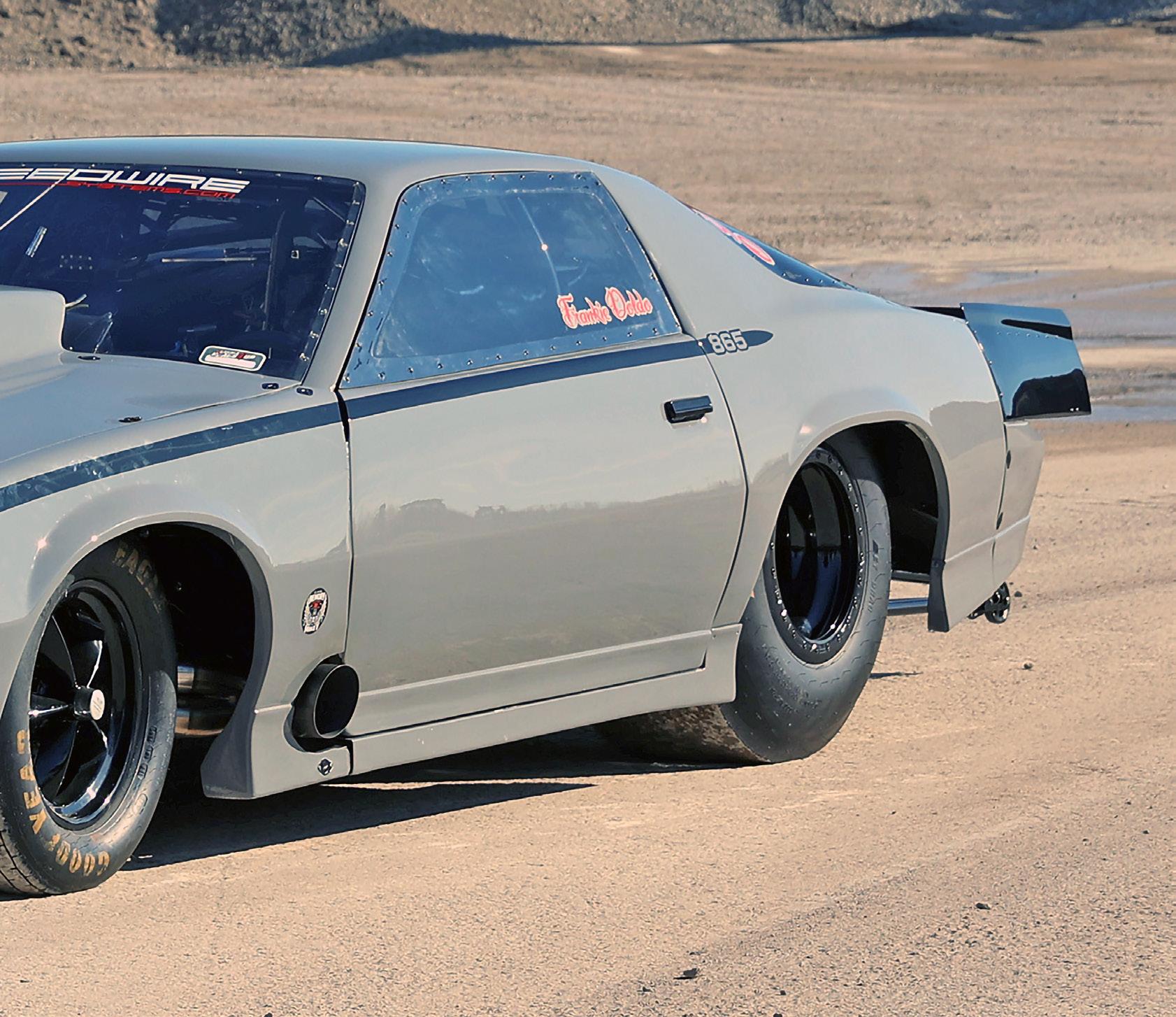
The future is in the hands of our youth!

full potential...

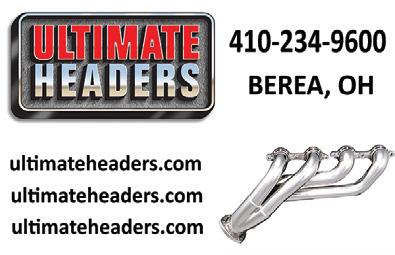




...it was always Mike’s dream to see it brought back to life and reach its
The team stumbled upon the car in North Bay, Ontario and it was actually owned by one their very good friends, the late Mike Grano. With a solid history as an original Competition Automotive Pro Stock car driven by Allan Marsh in the late 1980s and 1990s, it was always Mike’s dream to see it brought back to life and reach its full potential. “From that day forward the plans to make this car a winner were in the works.” The car required a lot of special


care and a complete makeover, all performed in their own garage, and Frankie himself, being a licensed mechanic and knowing his way around a race car, was instrumental in the process. “As all racers know, a lot of work, dedication, and money is involved in restoring a car and building one into a competitive race car, and with the help of my team members from Doldo Racing and Longo Racing we were able to rebuild this car into what it is today.”

The monster big block was built by Buck Racing Engines and boasts a billet block, heads and intake. 4 Stages of direct port nitrous oxide are plumbed in for good measure.





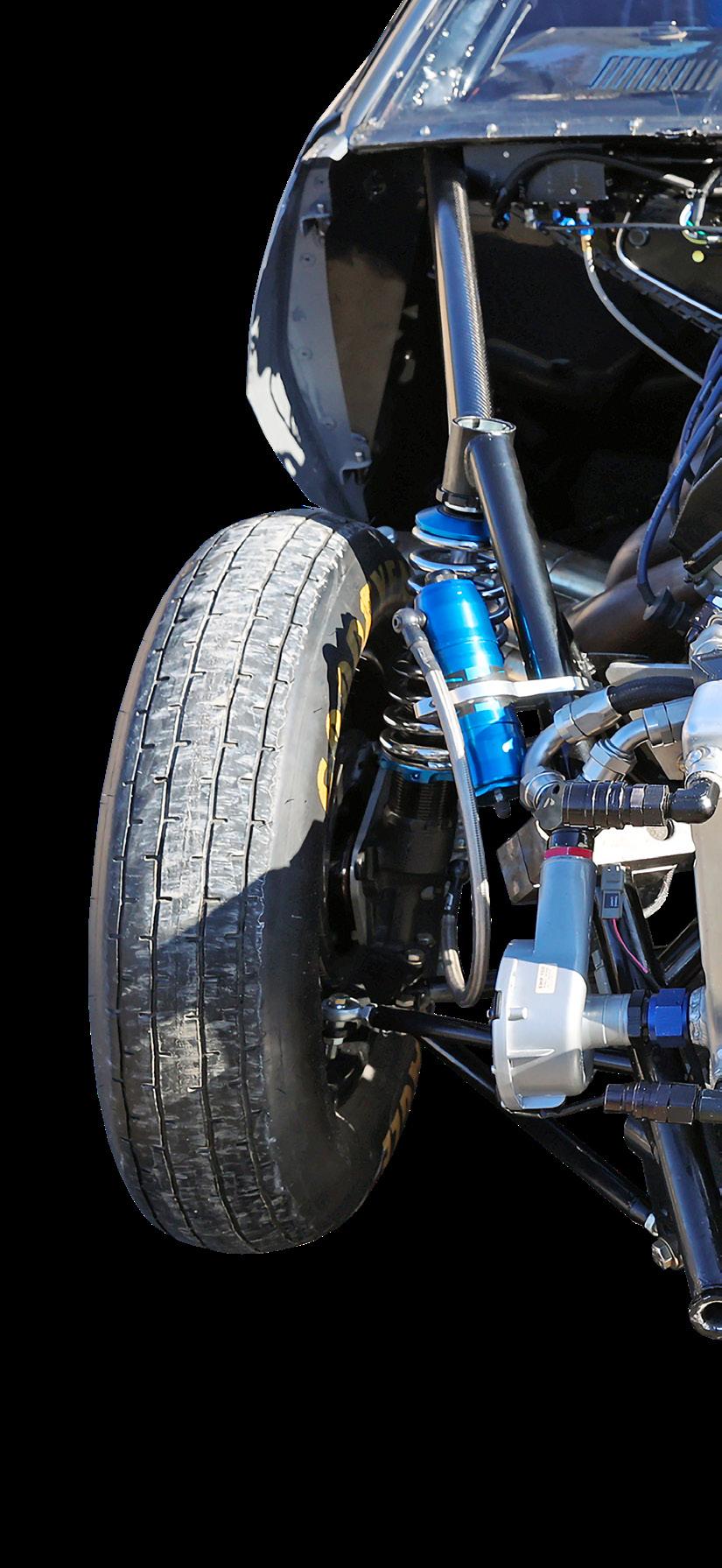
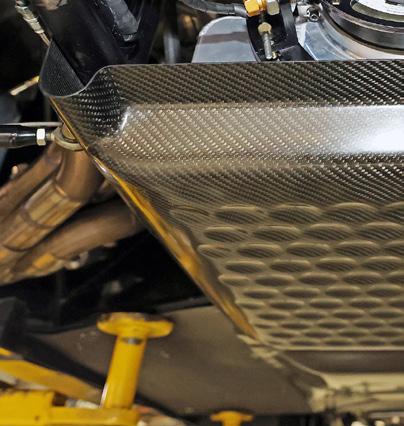
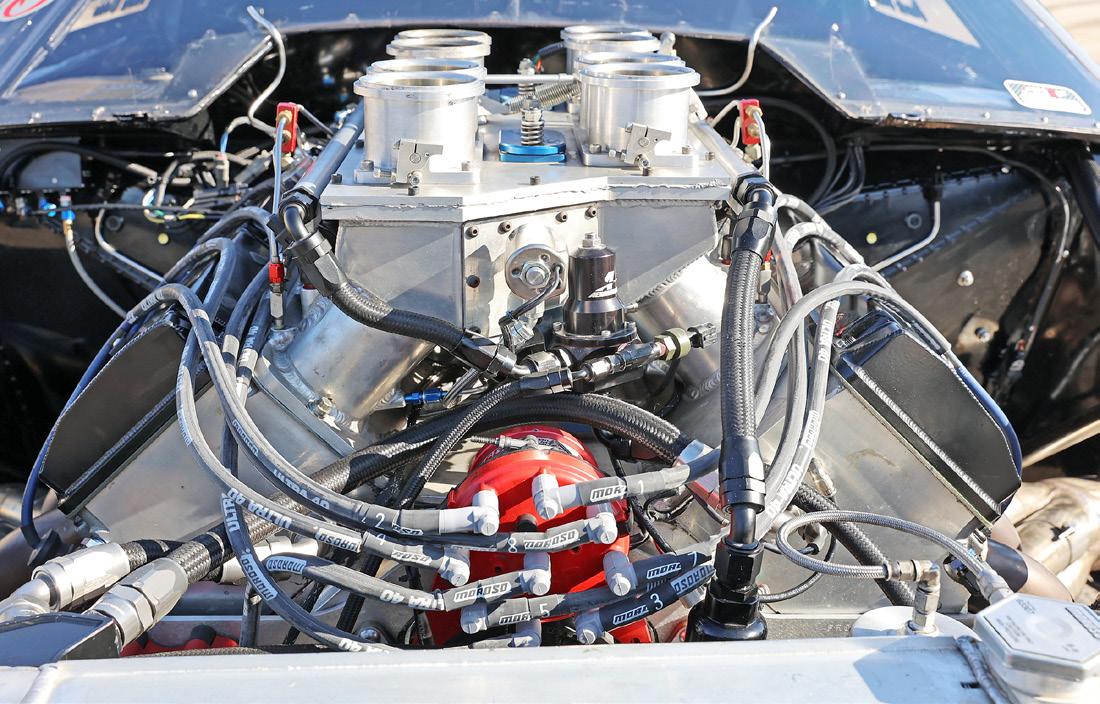






Taking on the turbos and winning!

Third Generation Camaros are not known for being lightweight, so the original OEM IROC body tub was kept and, in the interest of weight loss, a VFN front nose, hood, and doors were added along with Five-Star Lexan windows all around
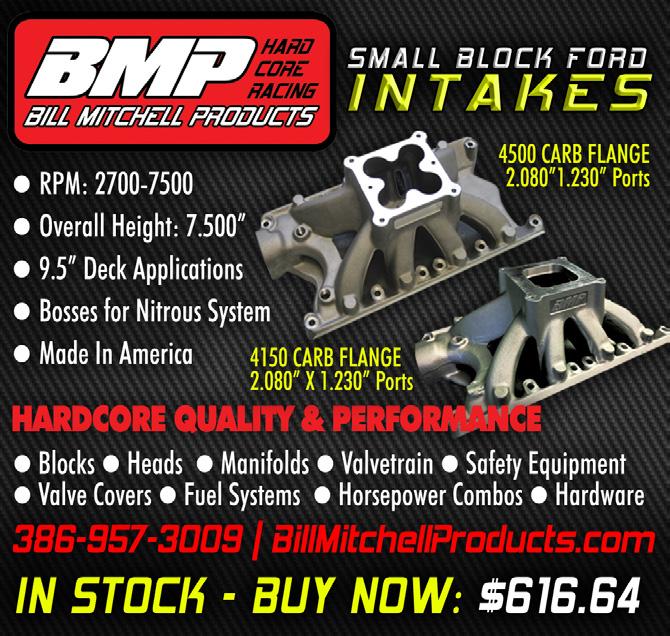

and a custom carbon fibre rear wing by Joe Van O. The slick Nardo Grey paint (we like to call it Gunship Gray) was expertly applied by Frank at Car Star in Brampton, Ontario and custom “hockey stick” stripes on the sides complete the look.

This 865 inch billet big block sports 4 double barrel throttle bodies that are
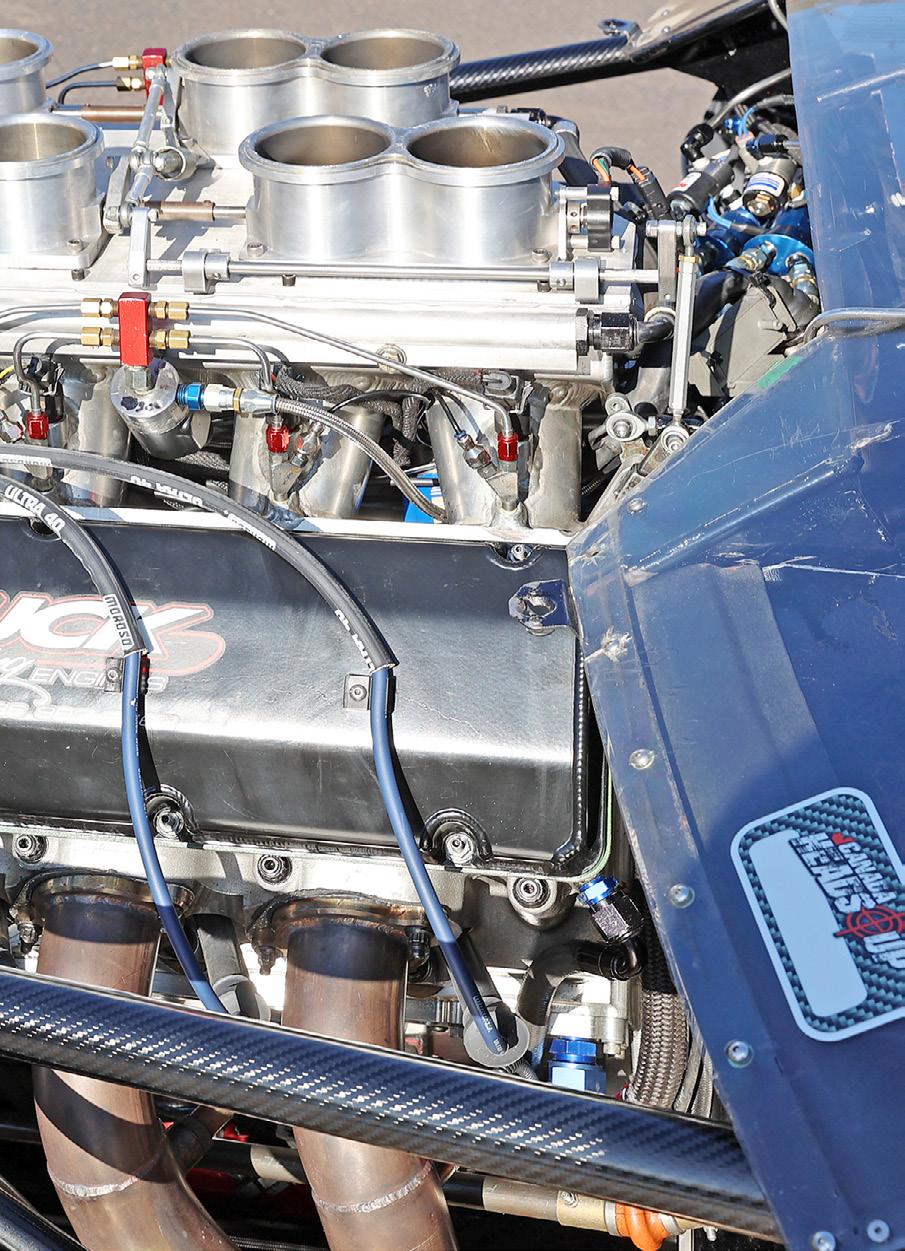
With plans of running Outlaw, Grudge style and No-Time events, the Camaro was upfitted with a certified full-tube double-frame rail chassis

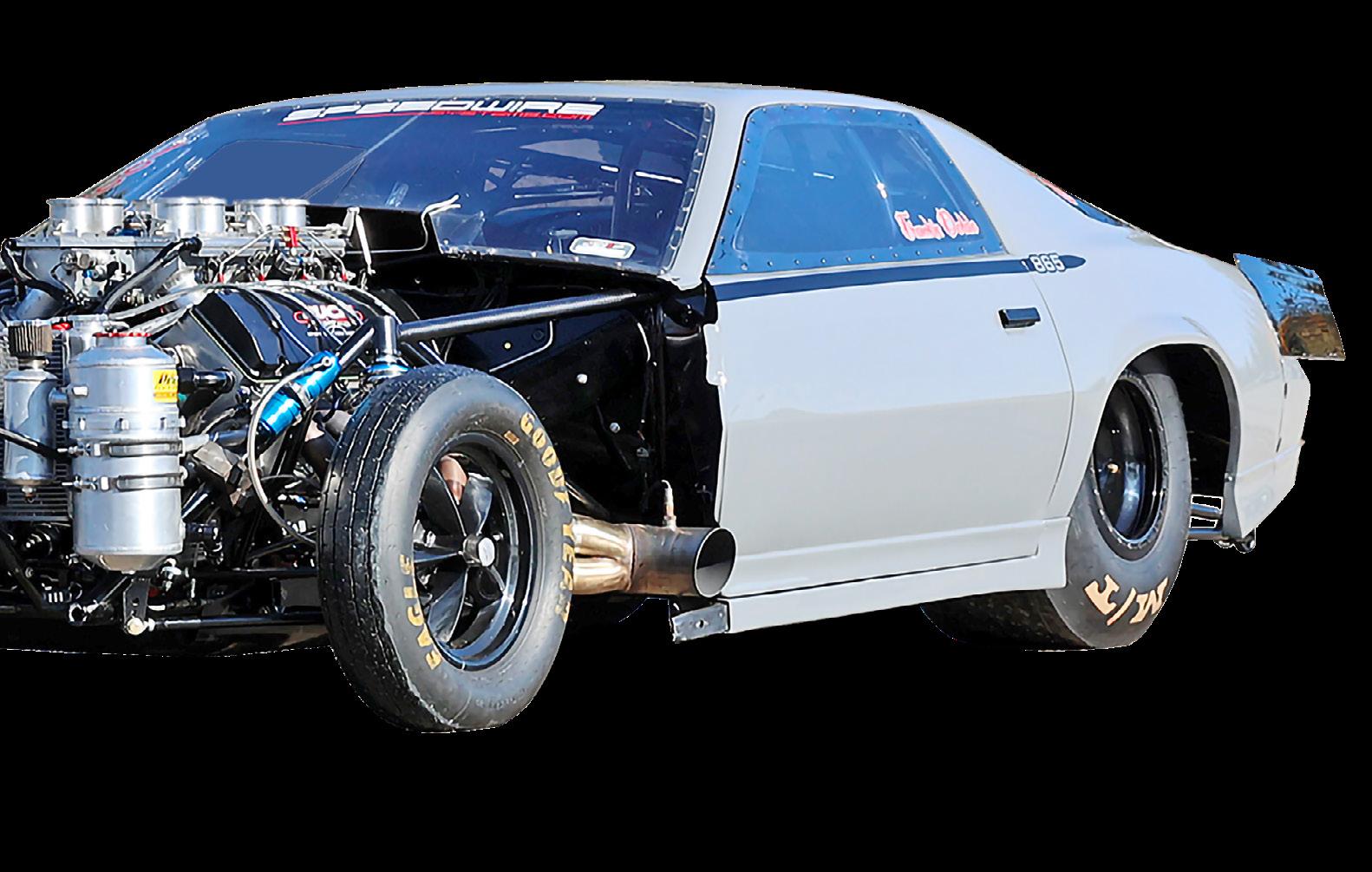
and carbon fiber tubs. Front suspension includes custom tubular control arms and AFCO double adjustable struts with adjustable C02 canisters.

Frankie Doldo's 1985 Camaro Drag Car
■ Body & Paint:
1985 Camaro Iroc Z28, Nardo Grey paint by Frank at Car Star, Brampton, ON. Original roof and quarter panels with VFN front nose, hood and doors along with Five-Star Lexan windows all around and a custom carbon fibre rear wing by Joe Van O. Custom hockey stick stripes.
■ Chassis & suspension:
Full-tube double-frame rail chassis and carbon fibre tubs.

■ Suspension Front & Rear:
Front suspension is AFCO double adjustable struts, with adjustable C02 canisters and custom lower control arms. The rear is a 4-link suspension with 21inch AFCO double adjustable shocks.
■ Engine:
865 cubic inches built by Buck Racing Engines. Billet block, billet cylinder heads and billet intake. Billet camshaft and Jesel lifters, Billet crank from Buck Racing Engines, billet aluminum connecting rods from MGP and custom nitrous pistons. Heads are equipped with Jesel rockers and one-piece stands, PAC valve springs and Buck Racing custom push rods., titanium valves.
■ Induction & Fuel Delivery:
The engine is fed by 4 double barrel throttle bodies over 2” diameter per barrel. 8 Billet Atomizer fuel injectors.
■ Power Adder:


4 systems of dry nitrous.
■ Transmission:
Turbo 400 3-speed from Cameron’s Torque Converters. Lock-up dump valves and a 2-piece billet converter.
■ Rear End:
Bears custom chromoly rear end with Strange 40 spline gun drilled axles, spool and 10-inch gear.
■ Electronics:
Racepak V300 SD and sensors front to back. Big Stuff 3 with the Power Grid for timing control.
■ Brakes:
Strange single-piston spindle mount fronts and 4-piston in the rear with drilled and slotted rotors all around.
■ Tires & Wheels:
15-inch Welds in the front and 16x16 double bead locks in the rear with Mickey Thompson ET Drag 33x10.5 W tires.
■ Interior:
Racepak digital dash and Grant steering wheel. Custom seat, Stroud seatbelts, parachute and window net. Halon fire system. Wiring done by Gill at SpeedWire Systems.
■ ET & MPH: No time grudge race car.

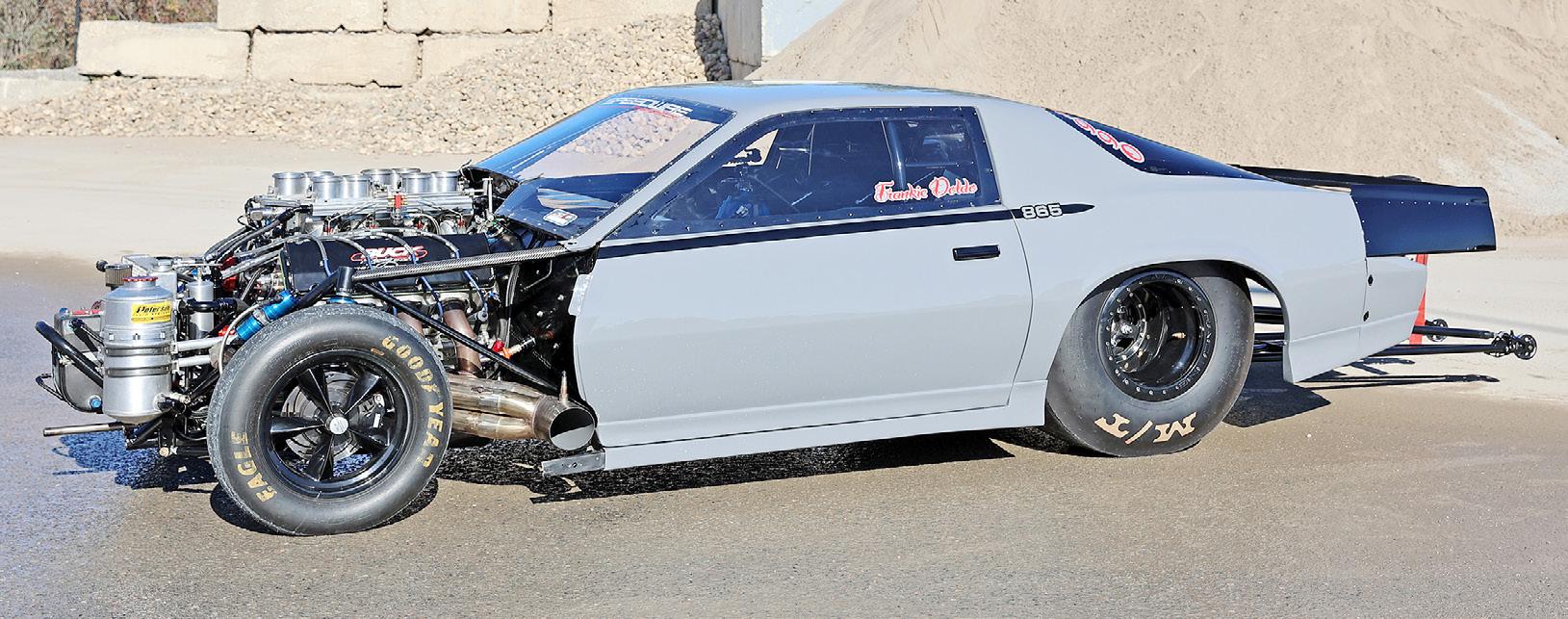
■ Thanks To:
I would personally like to give a huge shoutout to Pat Doldo for all his mentoring throughout the years and my family for all their ongoing support. The Doldo Racing team: Rob Zarcone responsible for the tuning of the car, Serge Longo assisting with the building of the car along with Jimmy Raso, Dave Raso, Sandro Velocci, Aldo Longo, Nick Longo, Stefano Angilletta, Joseph Spadaro, and Robby Cardillo.
Without these guys, the car wouldn’t be where it is, let alone winning races! I couldn’t have done it without them.



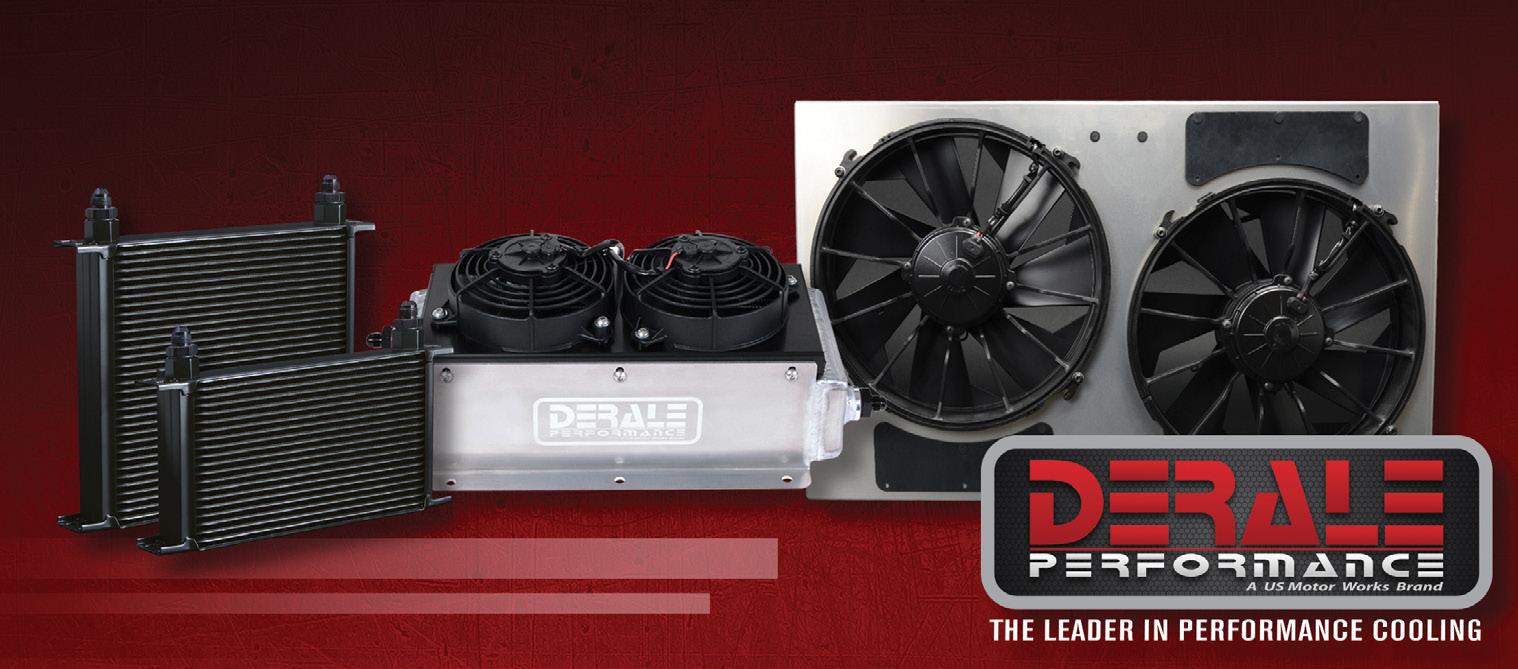

A Bears custom chromoly rear end was equipped with 40-spline gun drilled axles, spool and 10-inch gear and is suspended by a 4-link suspension with 21-inch AFCO double adjustable coilover shocks.
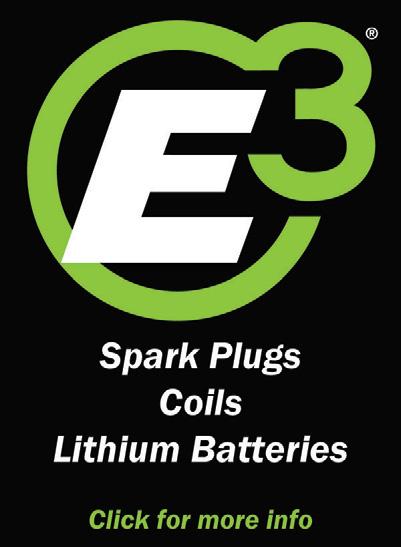
The Camaro interior is all about the business of drag racing and a maze of cage bars, including a funny car style halo to
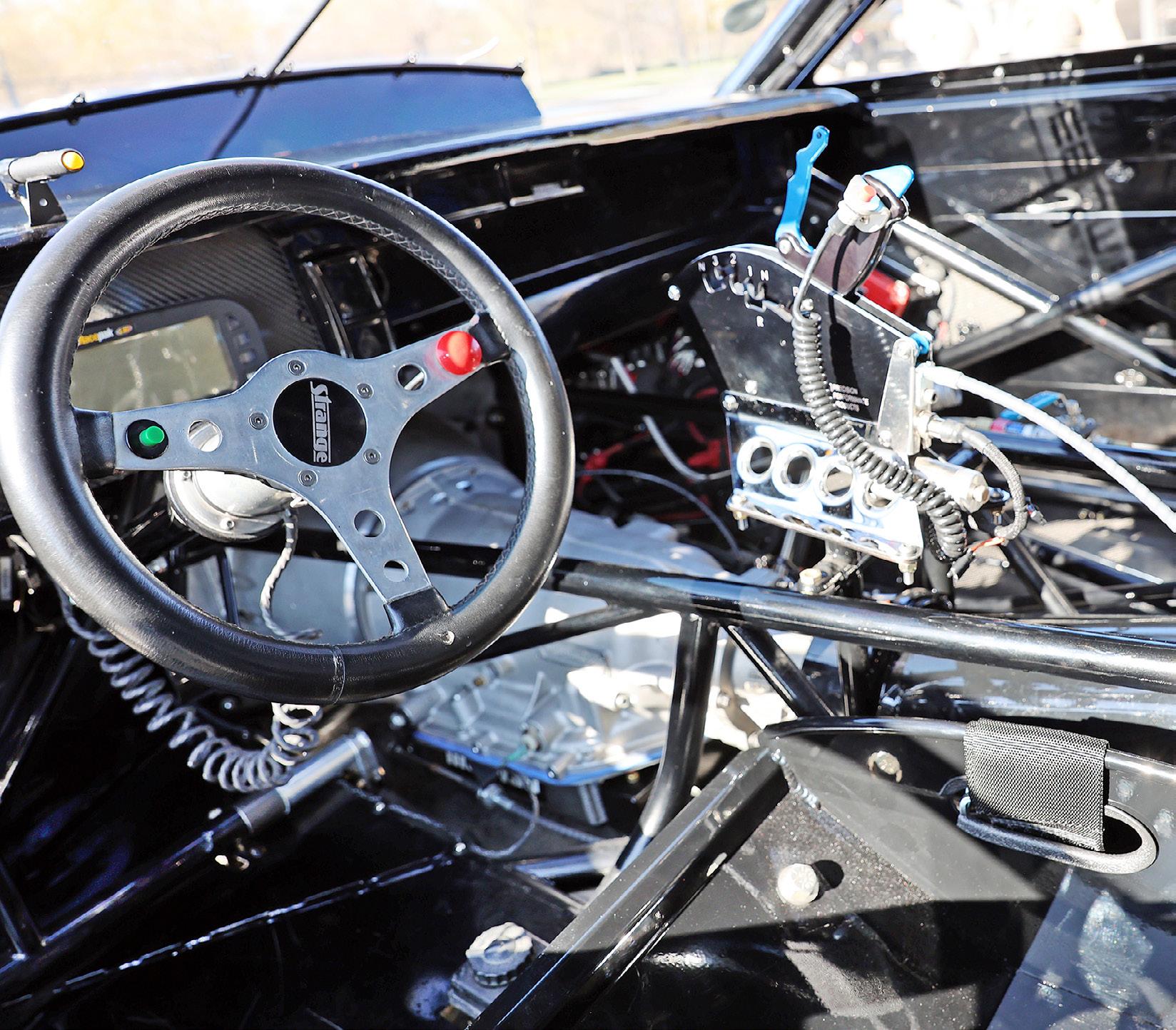
surround the driver, protect Frankie while he’s shoeing the car. A factory dash pad remains, but that is about the extent of factory equipment left here. Instead of an array of analogue gauges, Doldo relies on an interactive Racepak display set in a carbon panel and single dash topmounted warning light.




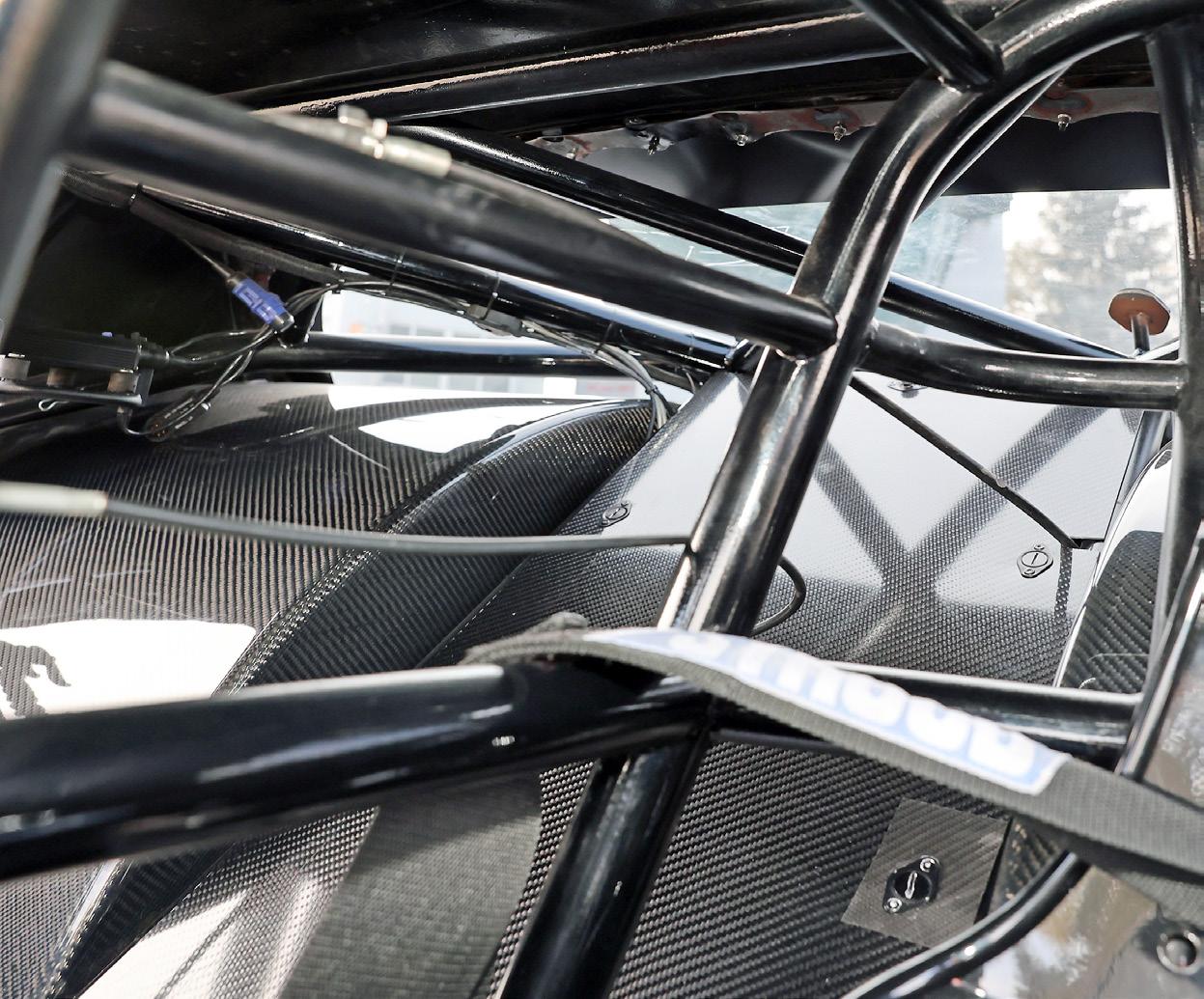
 A maze of cage bars, including a funny car style halo to protect Frankie while he’s shoeing the car.
A factory dash pad is about the extent of factory Camaro left inside.
A maze of cage bars, including a funny car style halo to protect Frankie while he’s shoeing the car.
A factory dash pad is about the extent of factory Camaro left inside.
Instead of an array of analogue gauges, Doldo relies on an interactive Racepak play set in a carbon panel and single dash top-mounted warning light. To the of Frankie, a Precision shifter controls the activities of the fully exposed Reid-cased Turbo 400 3-speed from Cameron’s Torque Converters. And, of course, a nitrous bottle rides shotgun in place of a passenger.
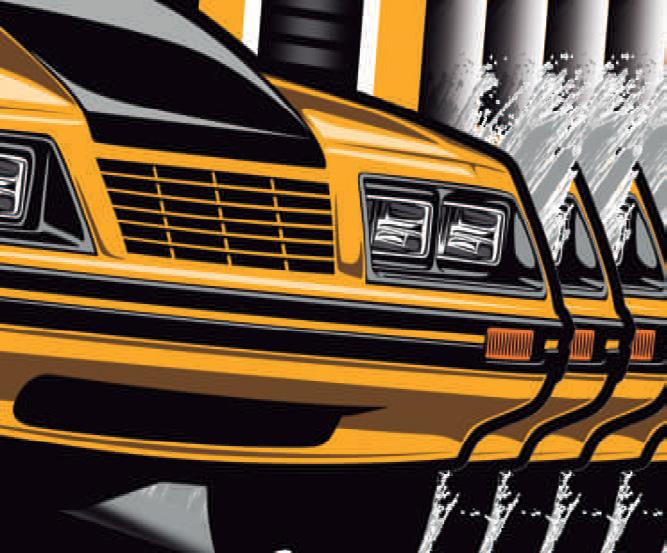




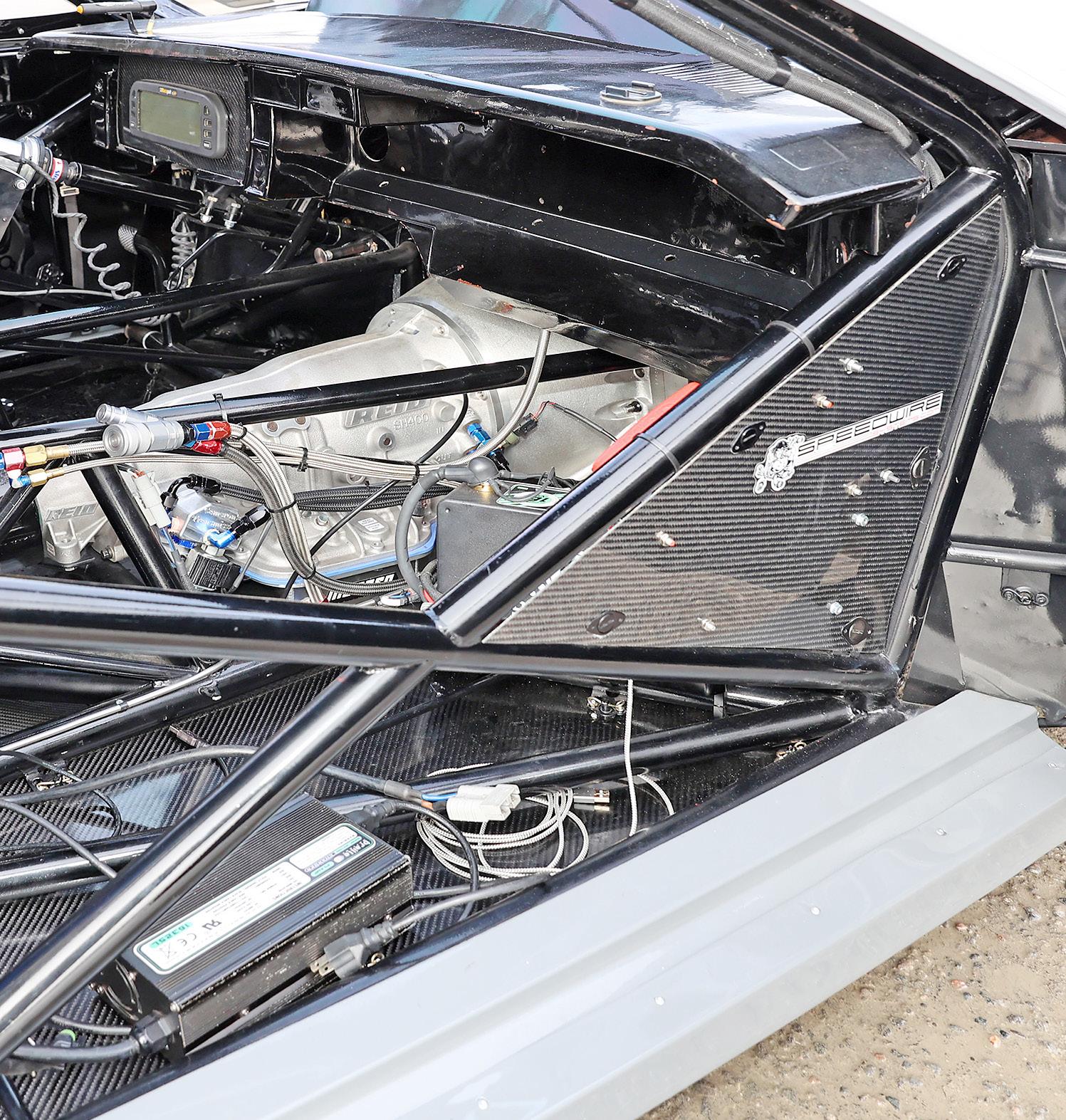





It takes a village to race a car!
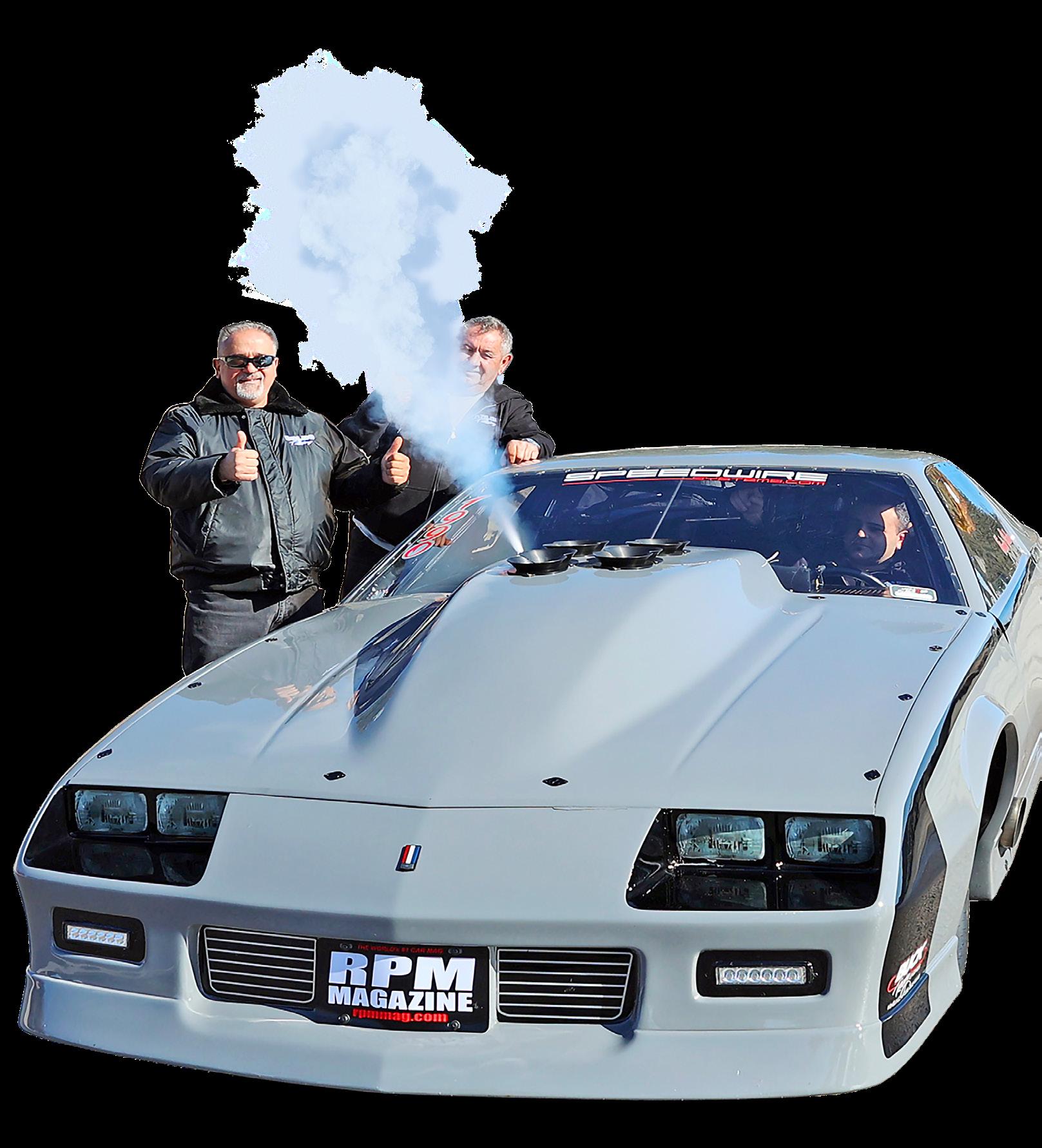
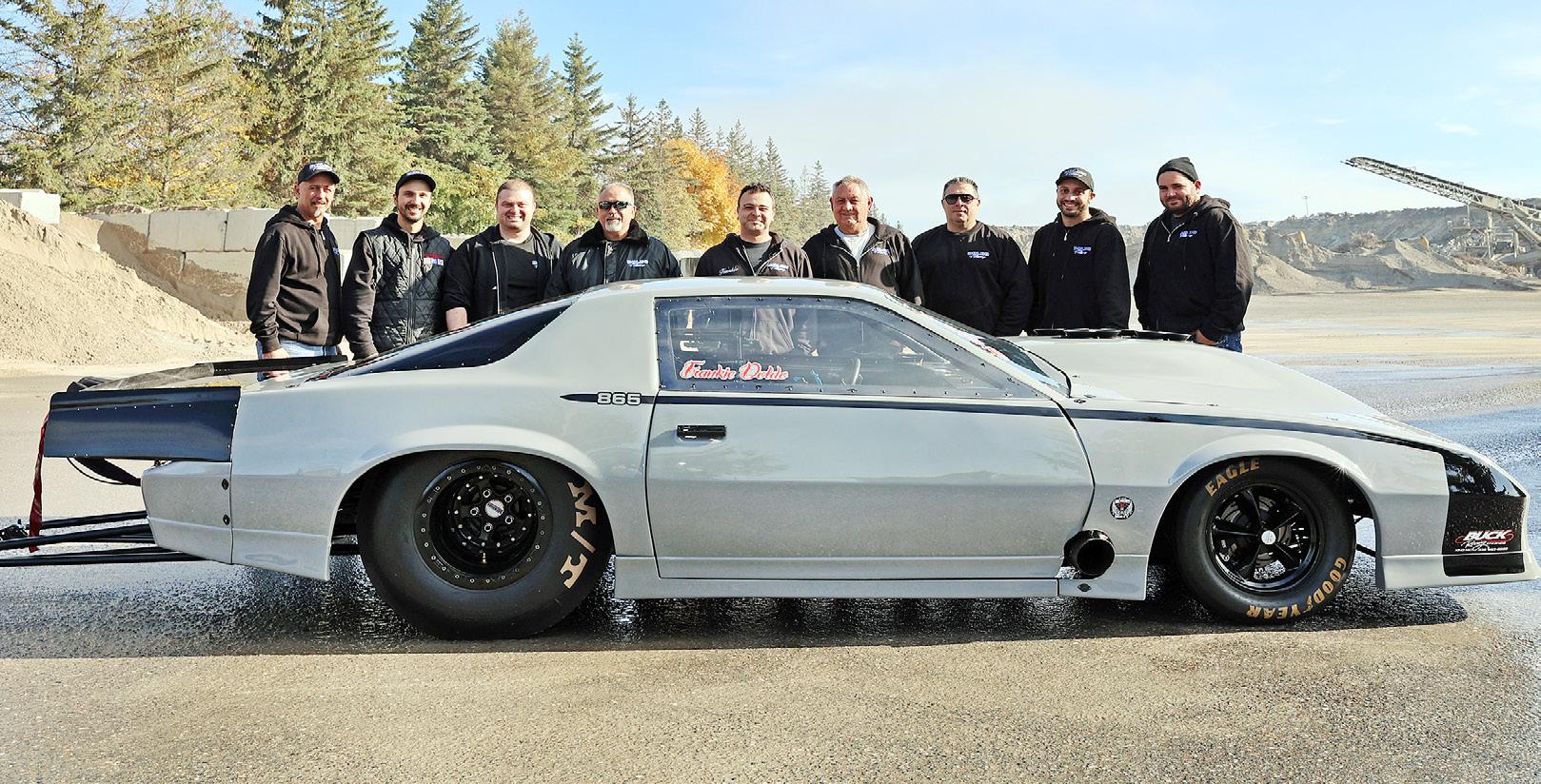

 Left to right: Sandro Velocci, Dave Raso, Stefano Angilletta, Pat Doldo, Frankie Doldo, Serge Longo, Rob Zarcone , Jimmy Raso , Joseph Spadaro.
Frankie’s dad Pat [left], is known for fast cars and wicked 3rd Gen Camaros and this latest creation is no exception.
Left to right: Sandro Velocci, Dave Raso, Stefano Angilletta, Pat Doldo, Frankie Doldo, Serge Longo, Rob Zarcone , Jimmy Raso , Joseph Spadaro.
Frankie’s dad Pat [left], is known for fast cars and wicked 3rd Gen Camaros and this latest creation is no exception.
Front suspension includes custom tubular control arms and AFCO double adjustable struts with adjustable C02 canisters. A Bears custom chromoly rear end was equipped with 40-spline gun drilled axles, spool and 10-inch gear and is suspended by a 4-link suspension with 21-inch AFCO double adjustable coilover shocks. For hook, Frankie relies on 16x16 double beadlocks in the rear with Mickey Thompson ET Drag 33x10.5 W tires.
To the right of Frankie, a Precision shifter controls the activities of the fully exposed Reid-cased Turbo 400 3-speed from Cameron’s Torque Converters. Now for the fun stuff. We mentioned the mammoth proportions of the big block set between the rails
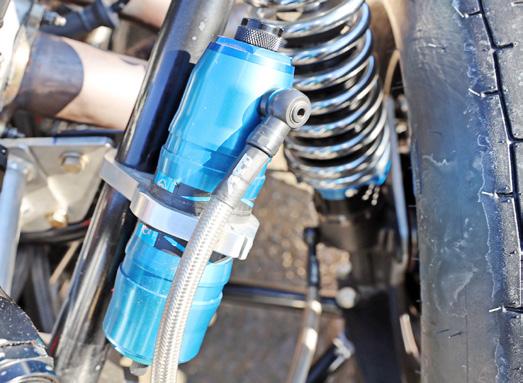
of the Camaro, but let’s talk specifics. The Buck Racing Engines-built mill comes in at 865 cubic inches and sports a billet block, cylinder heads and intake. A billet steel crank spins billet aluminum connecting rods from MGP and custom nitrous pistons.


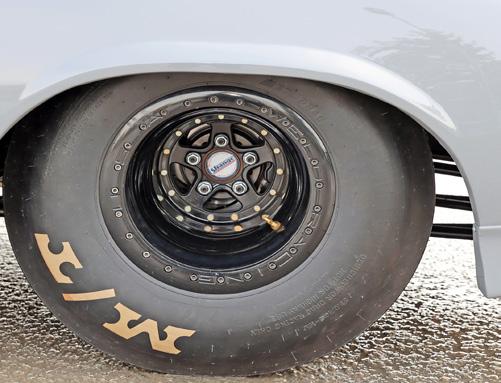

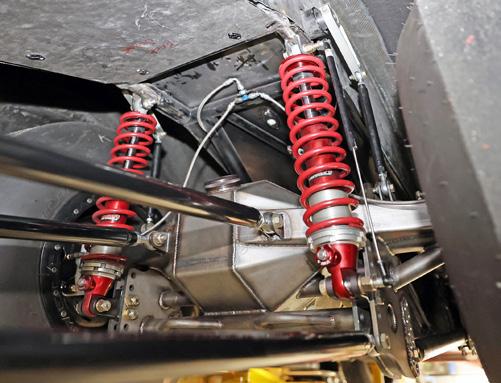

There are certain risks inherent with running nitrous oxide, including backfires through the induction system. Following this flame show the Camaro was back for the next round.
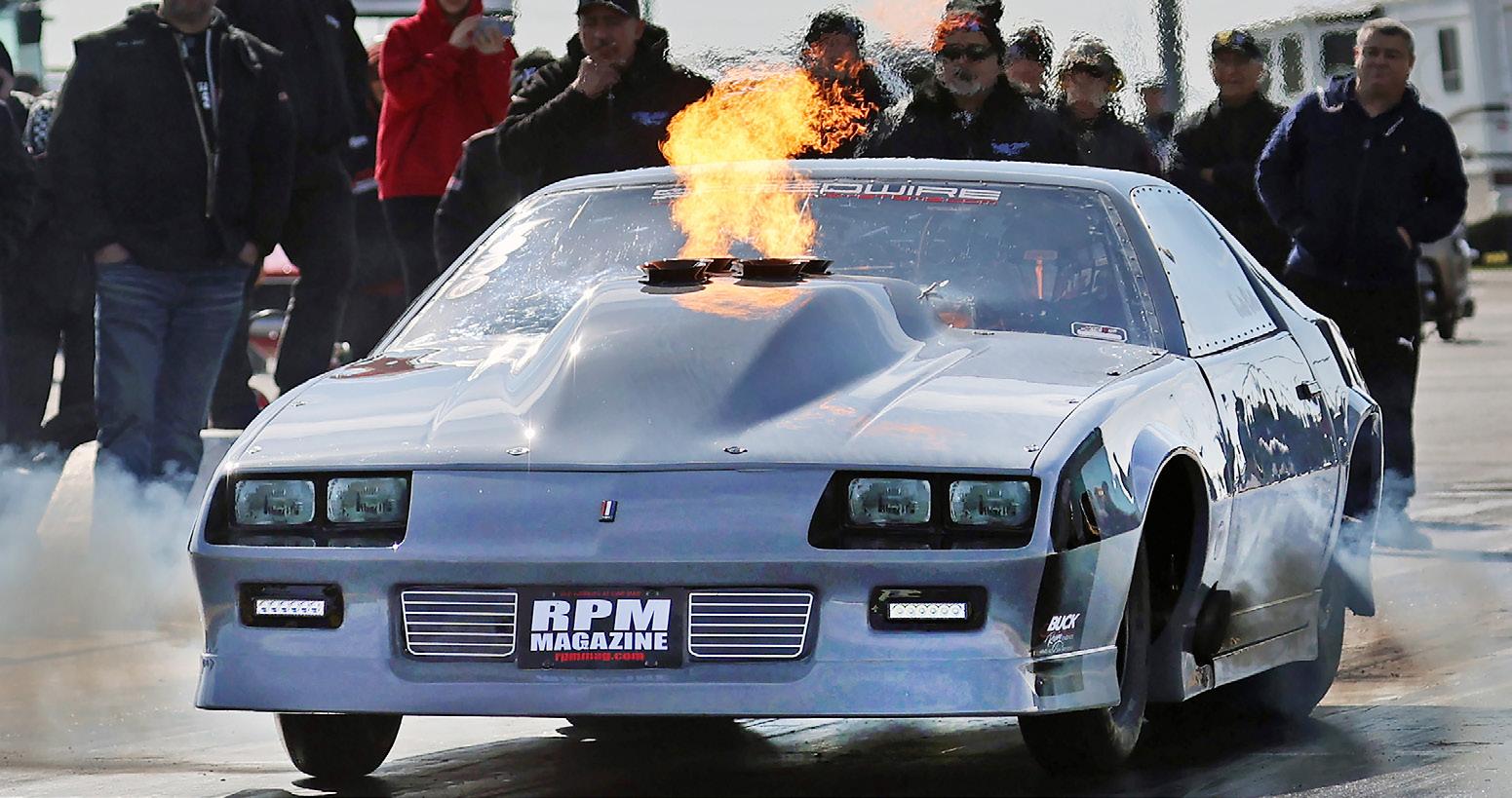
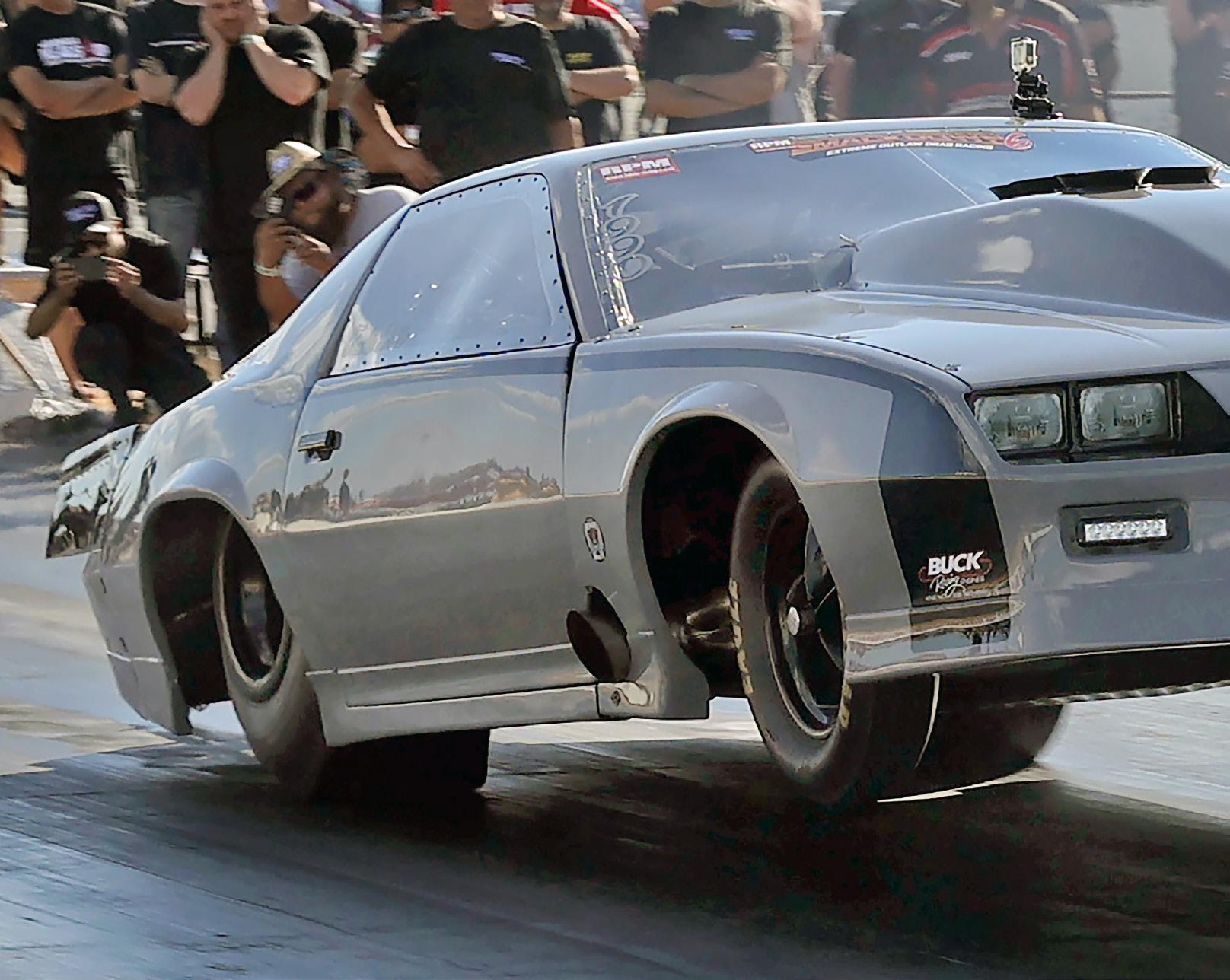

The top secret grind billet steel camshaft actuates Jesel lifters. Heads are equipped with titanium valves, Jesel rockers with one-piece stands, PAC valve springs, and custom push rods. The engine is fed by 4 double barrel throttle bodies with over 2” diameter per barrel and 4 stages (yes we said 4) of dry nitrous are injected into the mix at the command of the engine management system. Of course we can’t share the performance numbers of the Camaro – this is a grudge and no-time car so those are cards best held close to the chest – but we can tell you that
it wins races. Working every spare moment they could, the team rebuilt the car in about 8 months and hit the track for testing. After getting some seat time for Frankie and their tune in order, the team entered one of the most hotly contested local Outlaw classes at the RPM Smackdown and

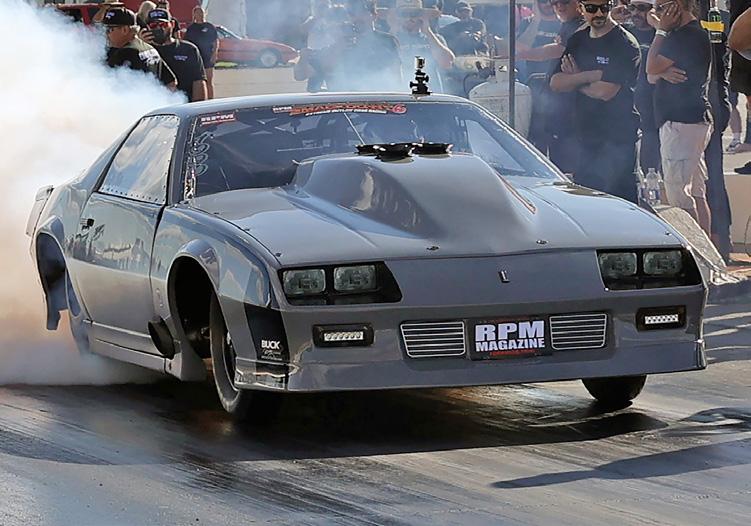


came away with the win. “The most memorable moment was winning in Outlaw the first time out with the car. My team and I worked hard to build the car and to go rounds that weekend and it paid off!” And this is definitely not the end of the story for Frankie Doldo and his team as they plan on continuing to add races to their schedule through 2023 and beyond. “This car holds sentimental value to us,” Doldo added. “Mike Grano wanted to see its full potential come to life and I feel as though we are accomplishing that in his memory.”

Aluminum Alloys for Racing tech
low mechanical properties, excellent

Aluminum is widely used in racing to make everything from radiators to pistons to intake manifolds (However, we would never recommend aluminum for exhaust systems!). The properties of aluminum that make it so attractive to racers include light weight, strength, fabricability and corrosion resistance. Aluminum is approximately 1/3 the weight of steel, yet some aluminum alloys exhibit tensile strengths greater than some low carbon steels. Many alloys can be heat treated to improve strength properties. Aluminum is available in many wrought forms such as tubing, extruded shapes, sheet and bar. It can also be cast using a variety of foundry methods using moderate strength heat treatable alloys and forging can also be used to form aluminum. The material itself can be fastened with rivets, bolts, or welding, and welded fabrications can also be heat treated.
There is a variety of wrought and cast alloys available for use by the racing fabricator. Adding alloying elements to enhance the physical properties of aluminum for specific purposes creates these alloys. Wrought aluminum alloys are designated using a four-digit system, with the first digit specifying the alloying element. The following table lists the major series including the alloying elements and general uses for each series.
relfectors, heat exchangers, electrical conductors
wheels, truck suspension components, aircraft fuselage
strength without heat treating
Some of the more common aluminum alloys used by racing fabricators include 3003, 2024, 6061 and 7075. 3003 is a non-heat-treatable wrought-alloy, which has excellent workability and weldability and is used for low-strength applications including tanks, boxes and brackets. 2024 is a heat-treatable, high-strength alloy with limited formability and is not weldable. It is an excellent choice for chassis skins and spars and for flywheels. 7075 is heat-treatable and the strongest and stiffest of the commonly available aluminum alloys. Due to its strength, it is not readily formable and lends itself to be used for machined
cans, cooking utensils, heat exchangers, storage tanks
welding rod, brazing alloys, architectural products
components and straight suspension pieces. 7075 also has poor welding characteristics.
6061 is the least expensive and most versatile of the heat-treatable alloys. It is a favorite alloy of many fabricators as it is a weldable alloy with moderate to high strength in tempered condition. It also has good formability in the annealed condition. It is the best choice for intake manifold and intercooler plumbing due to the weldability and formability of the alloy. 356 aluminum is an excellent weldable, heat-treatable casting alloy used for a variety of applications including pump housings, transmission cases
Everything you want to know about Aluminum Alloys, but didn,t know to ask.
Racing Applications
an elevated temperature in order to speed up the process.
Another method for increasing the strength of aluminum alloys is by work hardening. Work hardening occurs during forming processes including forging, stamping and tube bending. During these forming processes, the alloy undergoes plastic deformation and the metallic grains are broken and become smaller. The tighter grain structure prevents inter-granular slippage thereby increasing the strength of the alloy.
and cylinder blocks.
As previously mentioned, heattreating improves the strength of aluminum alloys through a process known as "precipitation hardening." In simple terms, precipitation hardening is a process that occurs during the heating and cooling of an aluminum alloy in which minute particles or "precipitates" are formed in the aluminum matrix. These particles reduce slippage between "grains" which in turns increases material hardness and strength.
The chemistry involved varies with each particular alloy, however, in basic terms, when an aluminum alloy is heated for a certain amount of time above its "solution temperature," the alloying elements dissolve uniformly into the aluminum matrix. Following a quench (or rapid cooling), the alloying elements will slowly fall out of solution and combine with each other to form evenly distributed precipitates. This step, known as aging, occurs at room temperature, however, an alloy can be artificially aged at
Annealing is a process that imparts the "softest" or most ductile condition to a heat-treatable aluminum alloy. For annealing, the alloy is heated to above its solution temperature and then slowly cooled to room temperature. During the cooling processes, the alloying elements fall out of solution and form large unevenly distributed crystals, which do not effectively prevent granular slippage. The result is a soft, low strength alloy condition. Burns Stainless anneals all aluminum tubing prior to bending.
The temper designation system is used to specify the condition, or temper, of a heat treatable alloy. The most common designations include O (sometimes erroneously referred to as TO), F, T4 and T6. O refers to soft or annealed condition and is the preferred temper for forming processes such as tube bending. F refers to the condition of the material following a forming process during which work hardening occurs, and is the official designation of tubing bends. T4 designates that the alloy was solution heat treated and naturally aged. T6 is sometimes referred to as fully "heat treated" and is the result of solution
heat treating and artificial aging. Burns Stainless carries only drawn seamless 6061 aluminum tubing for straight tubing and bends. The tubing specification is ASTM B-210 and/or Federal General Specification WW-T-700/6. This tubing is manufactured by cold drawing a true seamless extruded tube made from hollow extrusion ingot processed by die and mandrel extrusion process. Straight 6061 aluminum tubing available from Burns Stainless is sold in the T6 condition. It is important to note that welding will affect the temper of a tube since it locally heats up the metal. If the strength of a T6 temper is necessary for your welded assembly, it is important that the assembly be heat treated. It is also important to note that the aluminum bends are annealed and through the bending process achieve a certain level of work hardening. Again, if heat treated properties are required, the assembly must be heat treated.
With regards to polishing aluminum, Burns Stainless recommends special care when polishing aluminum in the “O” condition.


Watch for our next article series; Welding Exhaust Systems
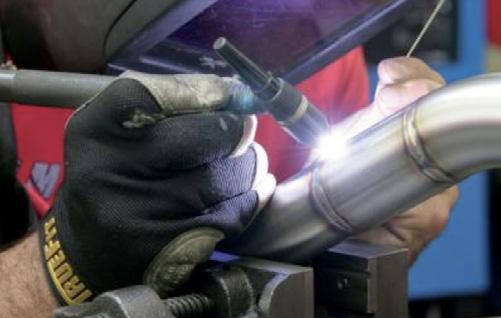
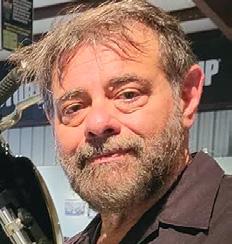

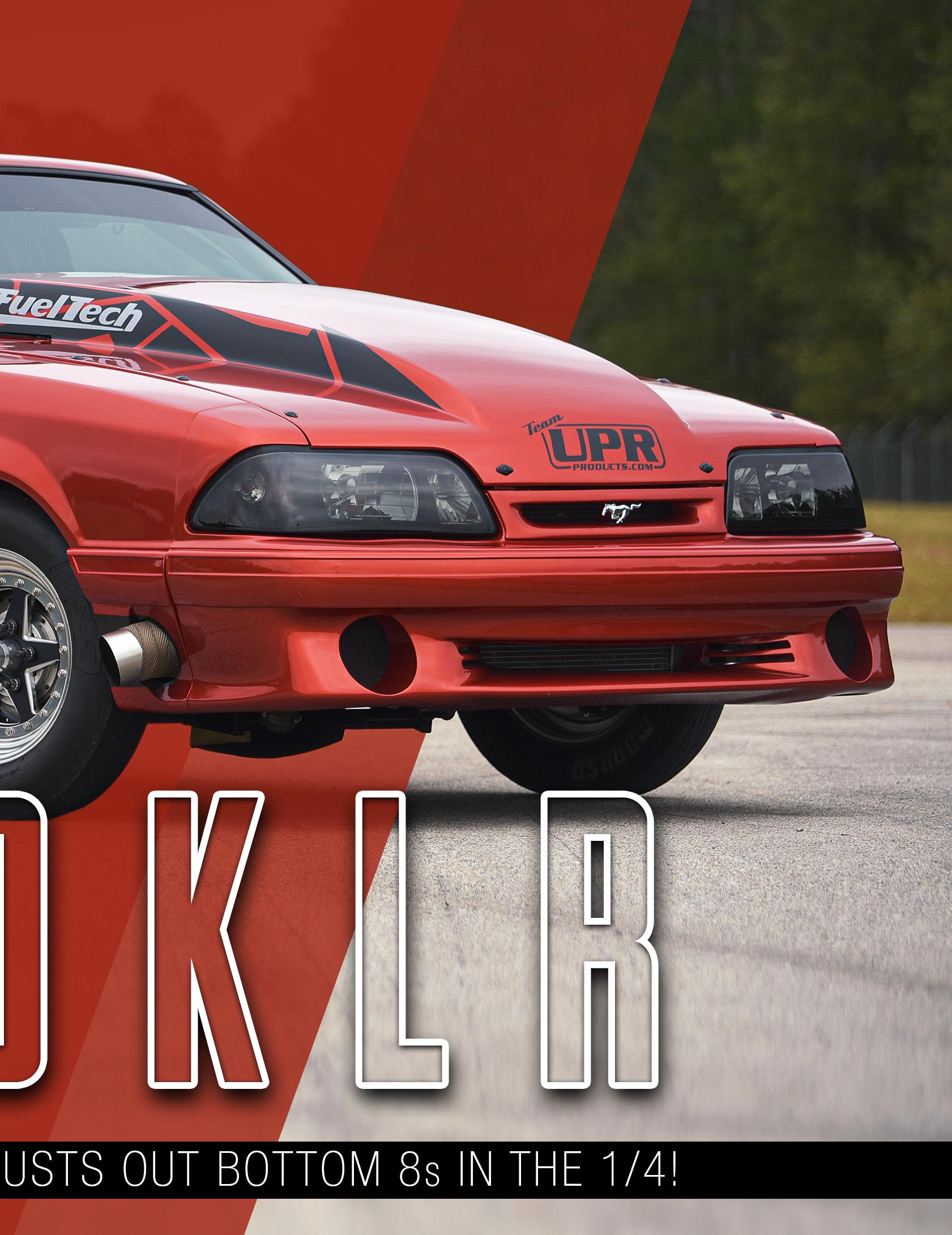 Story & Photos: Eddie Maloney
Story & Photos: Eddie Maloney
Traveling around the sunshine state, actually pretty much anywhere, you’re going find no shortage of Fox Body Mustangs, but when a bottom 8-second turbo’d Sunset Pearl Orange ’87 coupe leaves the line, you tend to take notice.



When Mike Cataline runs, it isn’t your average pass, he likes to add a bit of show with his go and it’s not uncommon to see the Stang wheelstand on its way down the quarter mile. Mike is retired U.S. Navy and also a diehard Ford guy, so you can bet there’s no LS swap here. “I owned an ’87 Mustang GT convertible back in 1999 that was totaled in an accident right before Fun Ford Weekend in Gainesville,” Cataline explained. “I went to Fun Ford that year in my rental car armed with the money from the insurance company for the lost 87.


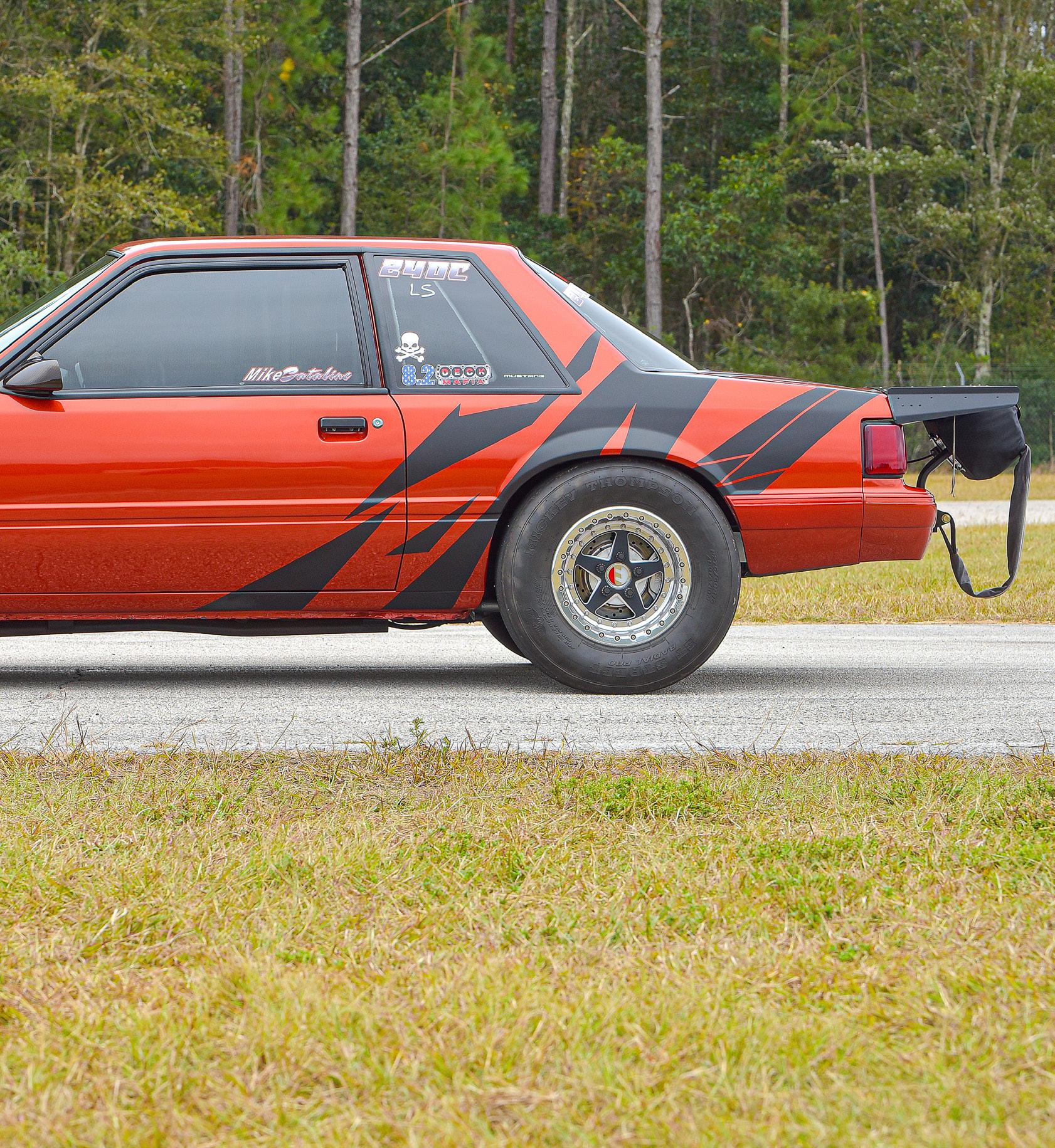
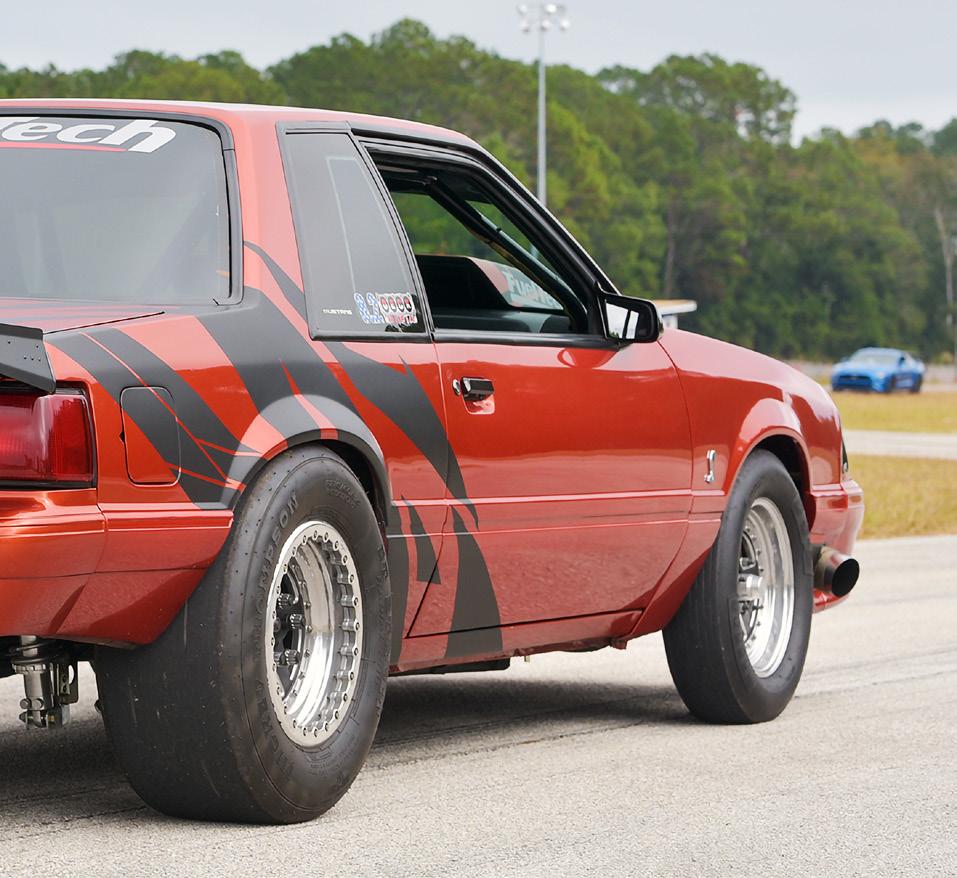
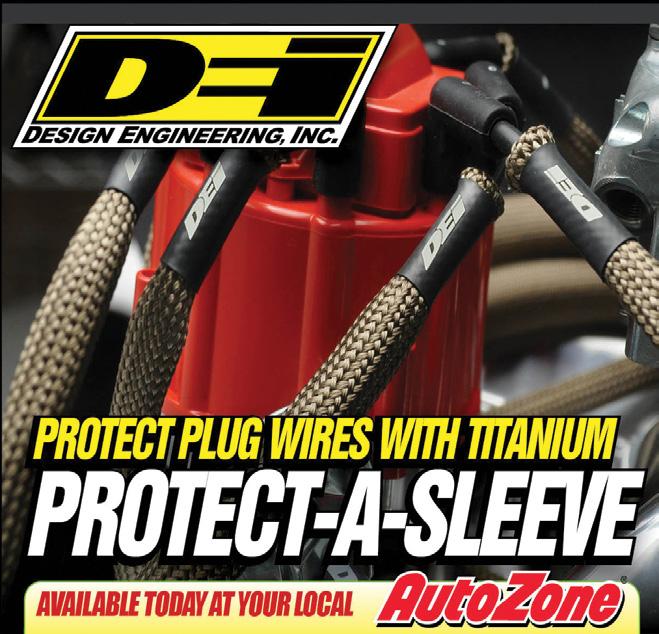
This Mustang Coupe stands out.

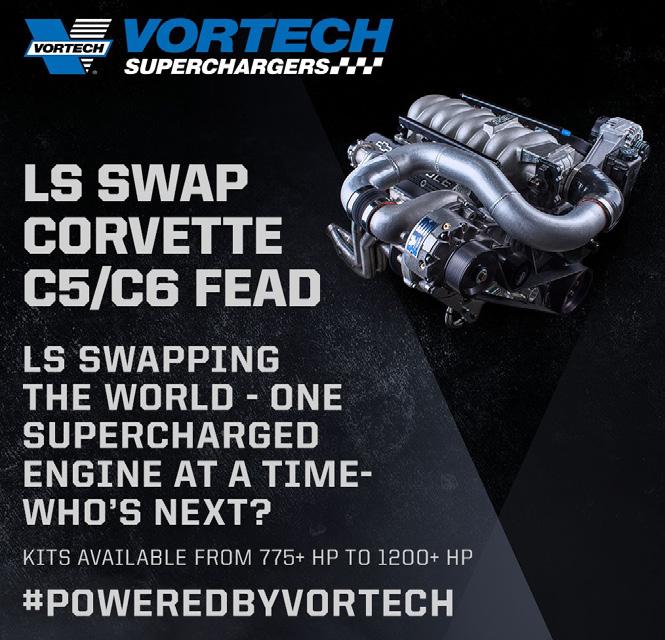

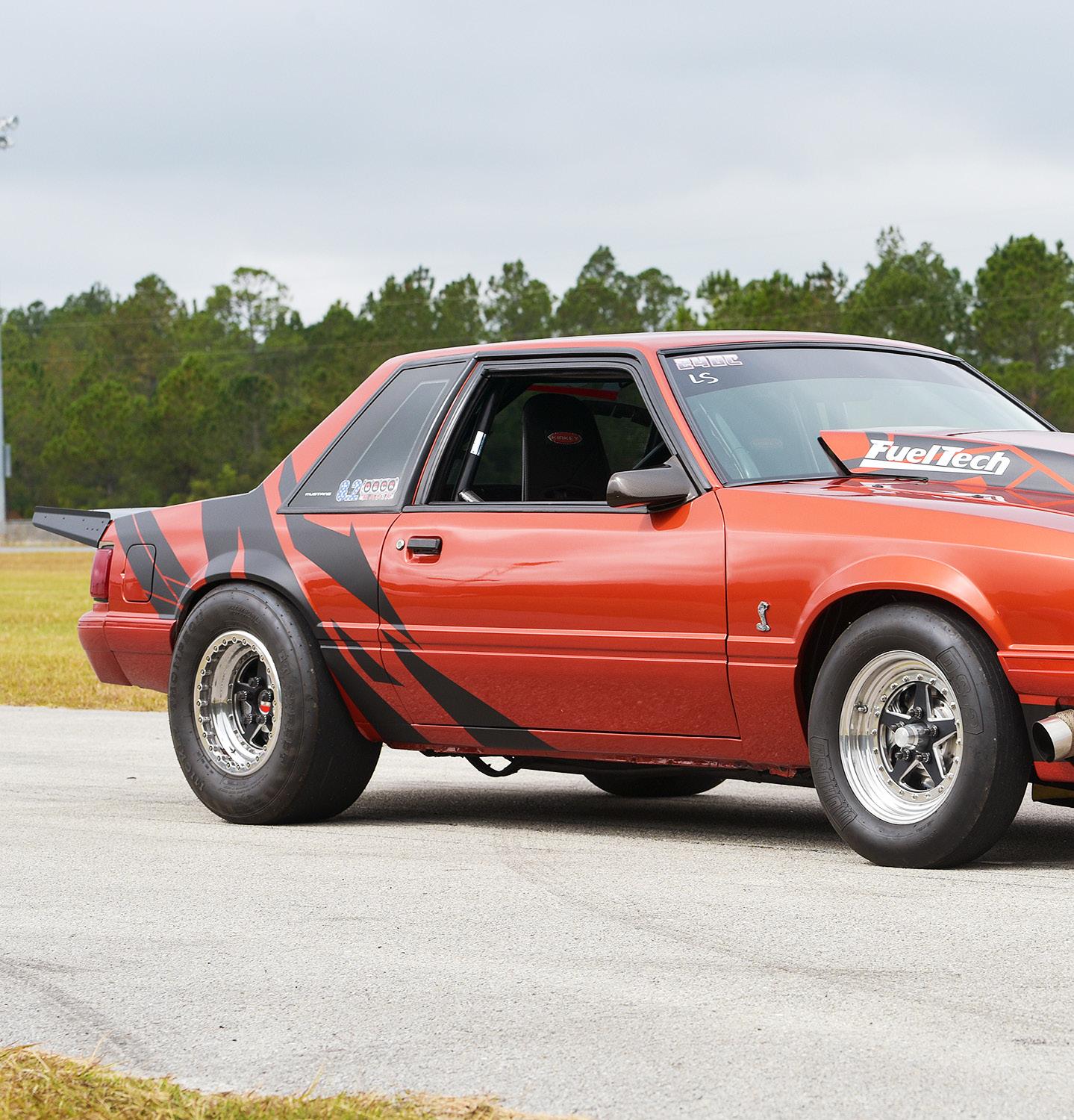

An All-Ford Street car that busts out bottom 8s in the 1/4!


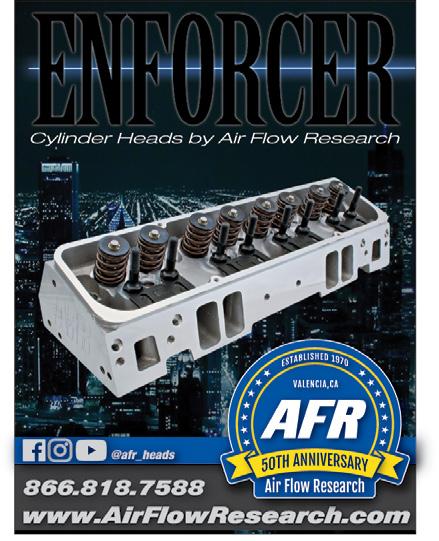


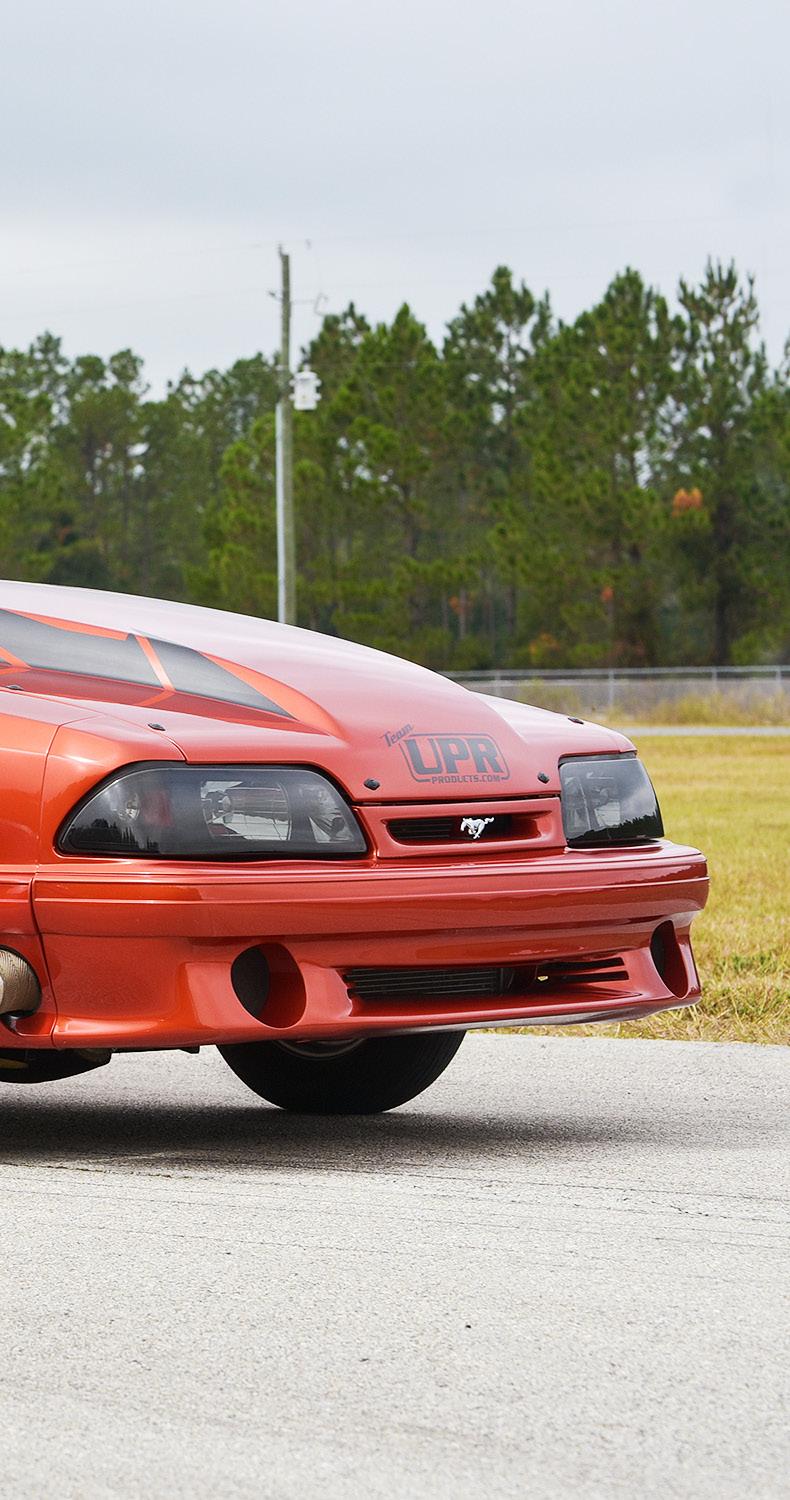

I searched the car corral and the property trying to find a new car but in true Florida fashion, the event got rained on. While leaving I saw this Coupe just parked in the parking lot and told my wife Sharon, ‘that is what I am looking for.’ As fate would have it, I looked back and there was a for sale sign in the windshield. Since

everyone was leaving, we sat in the parking lot and waited for the car owner. We spoke briefly in the rain but made plans to see the car in good weather.” As you might have guessed, the car was everything Mike hoped for and the very next weekend it was in his driveway, and since that day the Mustang has been a labor of love.
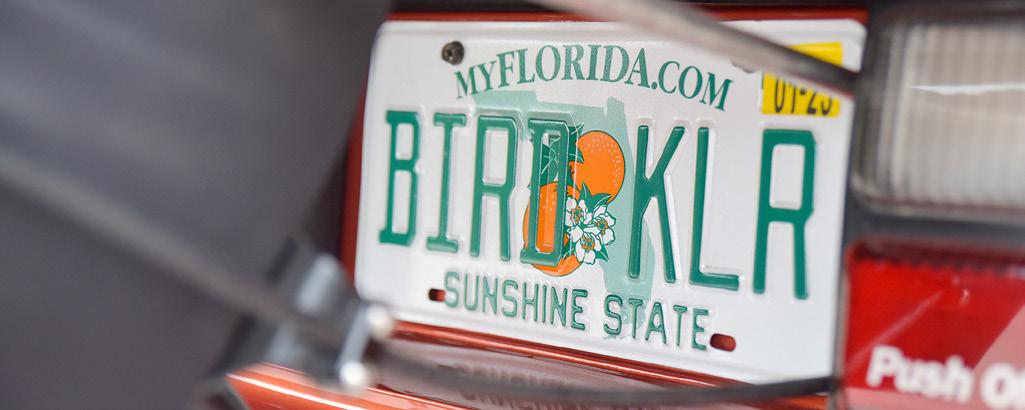
The Coupe came to Mike equipped with a 306 small block backed by a C6 trans, which didn’t stay in place for long. Looking for more power, a 331 SBF with 175 shot of nitrous was slipped in that ran clean 9.50s for 8 years, until the block finally split.
For the next level of performance, Cataline reached out to Eddie at The Racer Walsh Co. in Jacksonville, Fl and managed to get one of the first Boss 302 blocks they received and had

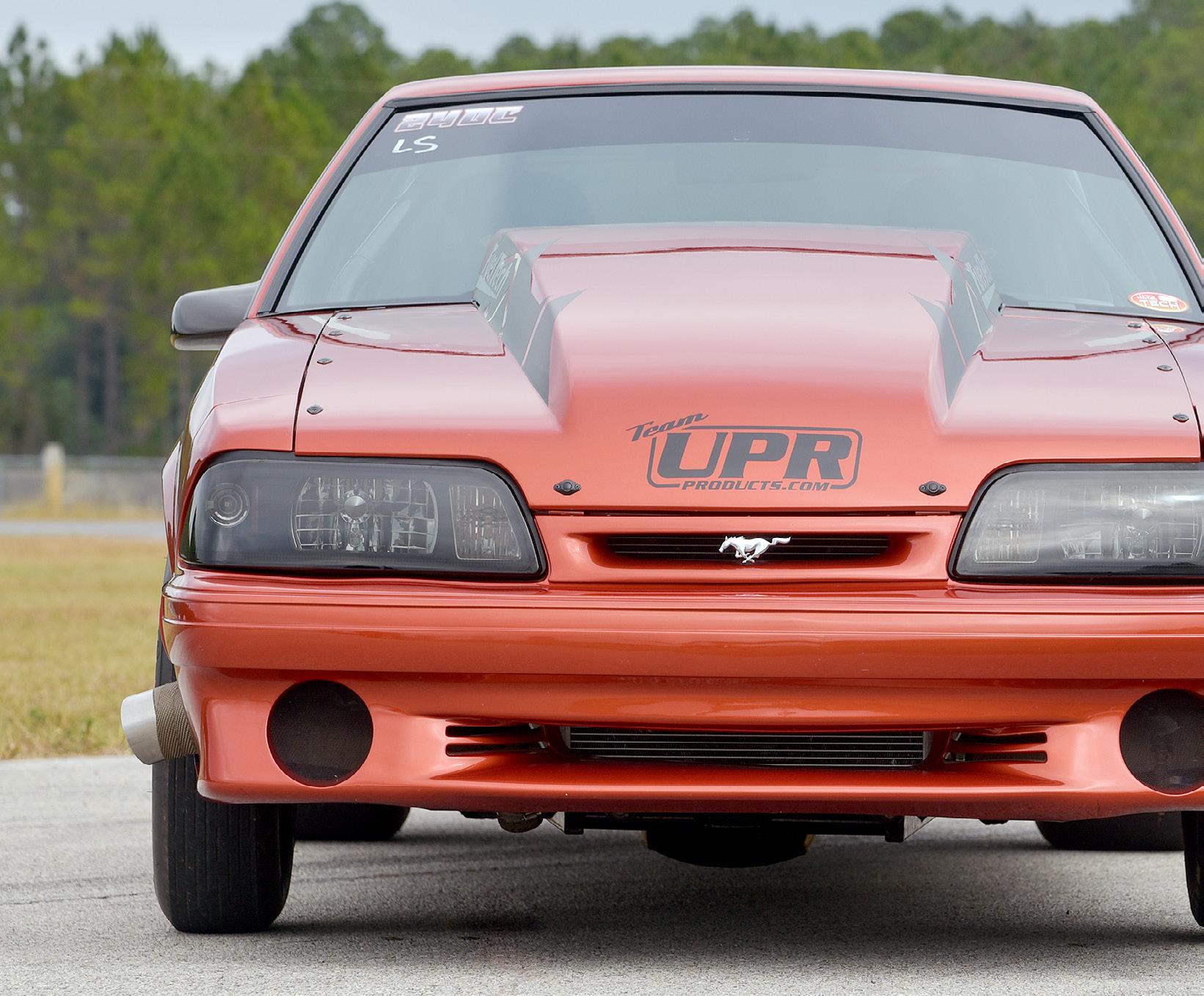
Brent Frazier build a 13:1compression 347. On that same 175 shot of nitrous and C16 race fuel the car managed to get down to a 9.0 @ 152 on ET Streets. The cost of C16 and nitrous was taking its toll though, and Cataline looked for other ways to go fast. “I spoke with the late Keith Szabo about some options and he cut me a deal on a 91mm turbo.” The plan was to have the combination opened up to a 4.125 bore 363 cubic incher and use the turbo with a blow thru carb.



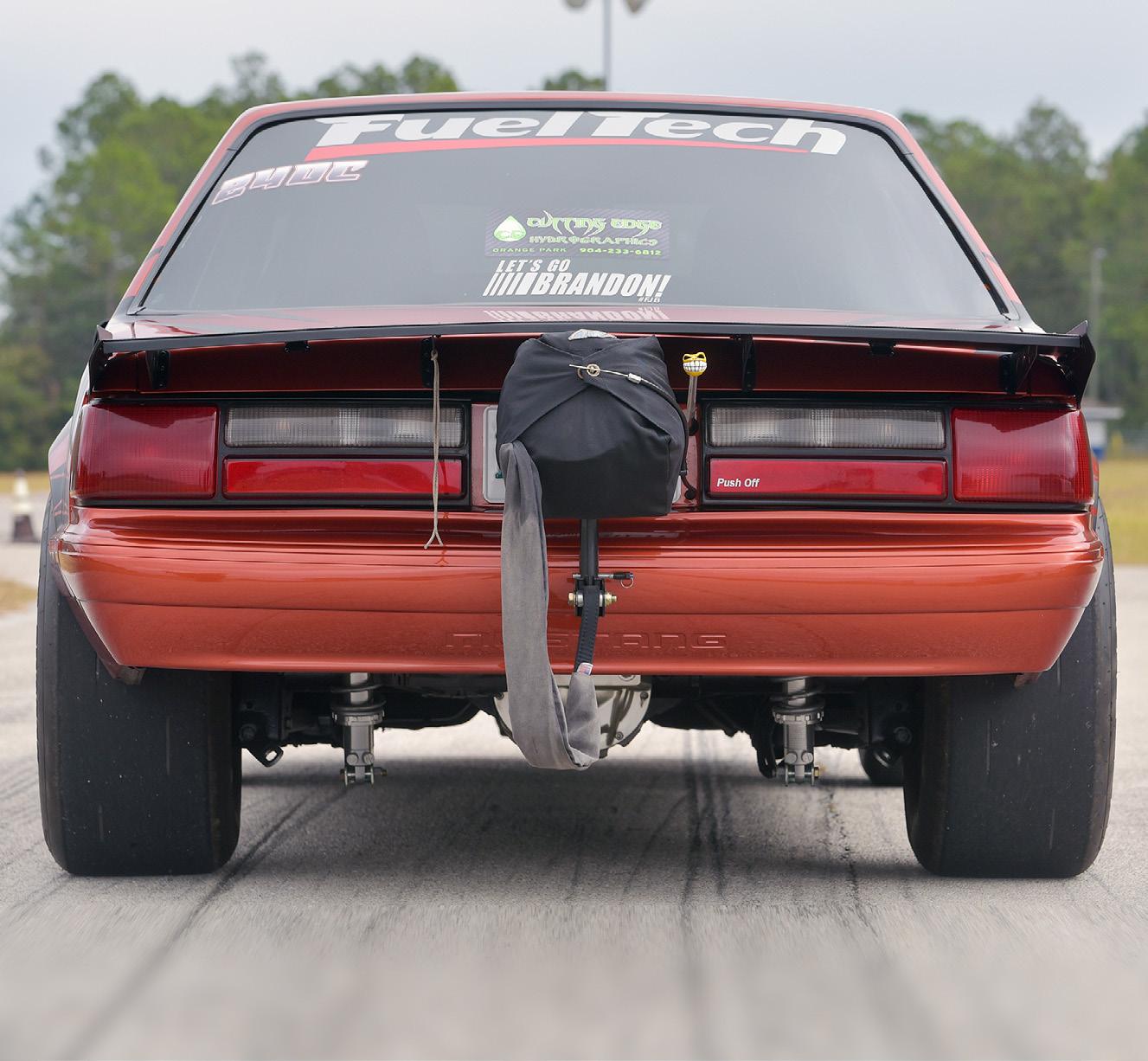



Mike even had Dwight Baldwin at Stage 6 Motorsports fab the hot and cold side piping from the CG Fabrication headers, but unfortunately, after that work the car would sit for nearly 7 years as Mike was fully invested into his military career. When time permitted, Cataline did things


here and there on reached the end of his ed working on his Hydrographics. “The ing to the finish line, didn’t want the carburetor, ing heavily at fuel injection

the Mustang but as he his military career, he starthis business, Cutting-Edge “The closer the car was comline, the more I realized I carburetor, so I started lookinjection setups,” he added.

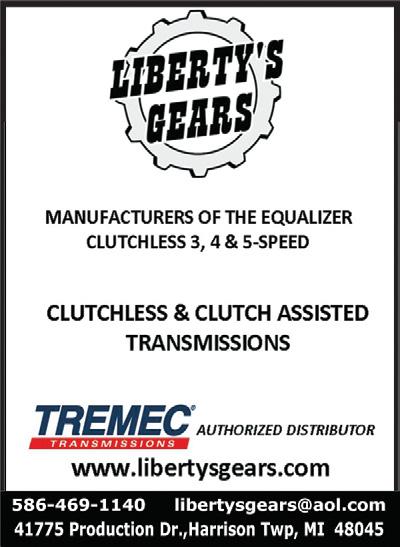

The body is factory with the only additions being a Mustang GT nose and a Kaenen cowl hood. Paint is Mitsubishi Sunset Orange Pearl and the RCs Custom Metal Work rear wing was painted, and hydro dipped.

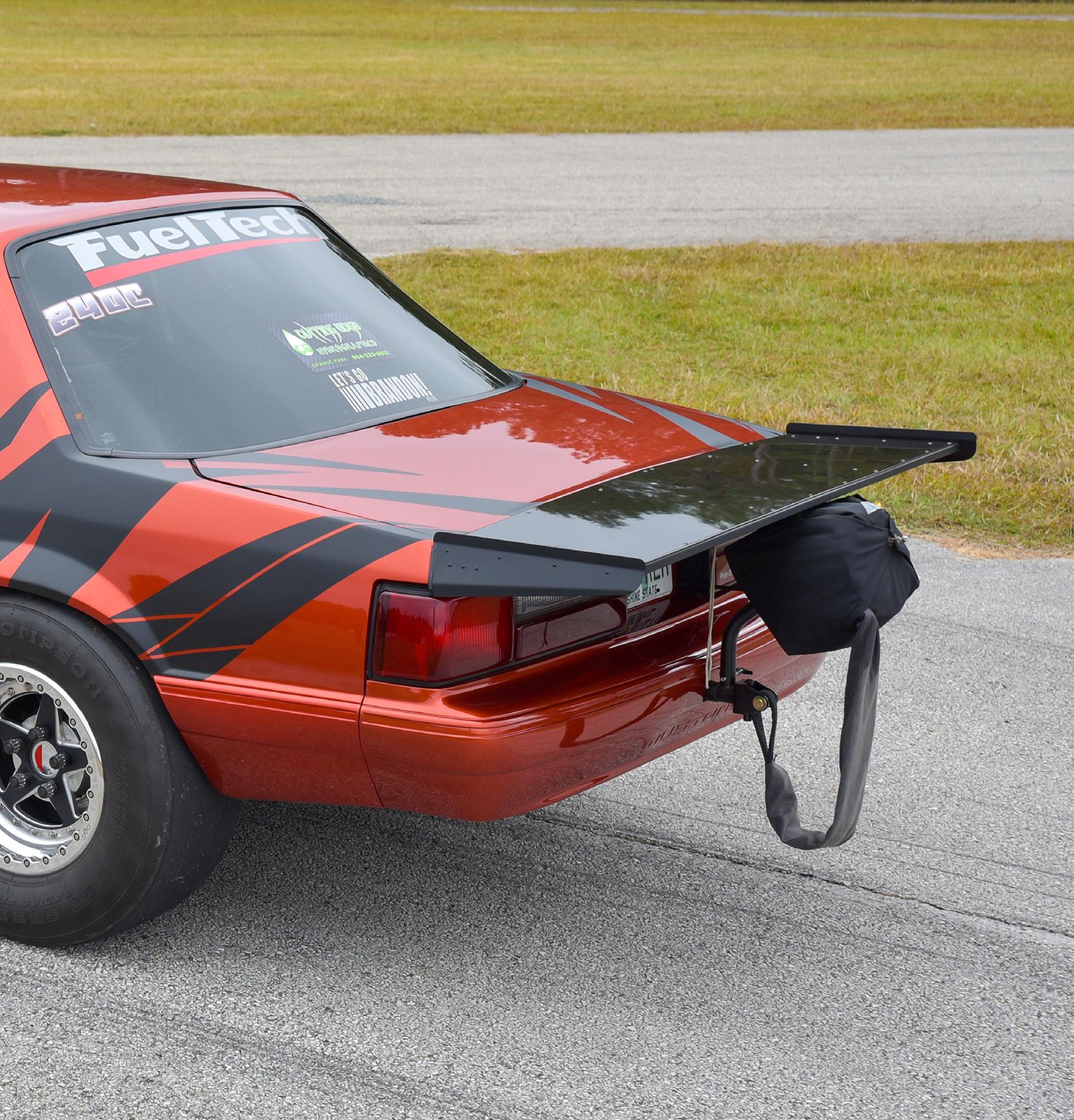
There was never any doubt that this Ford would be blue blooded. A 302 BOSS block based mill resides under the hood built by Mark Hedrick at Horsepower by Hedrick. Cubes work out to 348 and a single turbo setup help motivate the Mustang to bottom 8-second quarter mile hits…soon to be sevens!



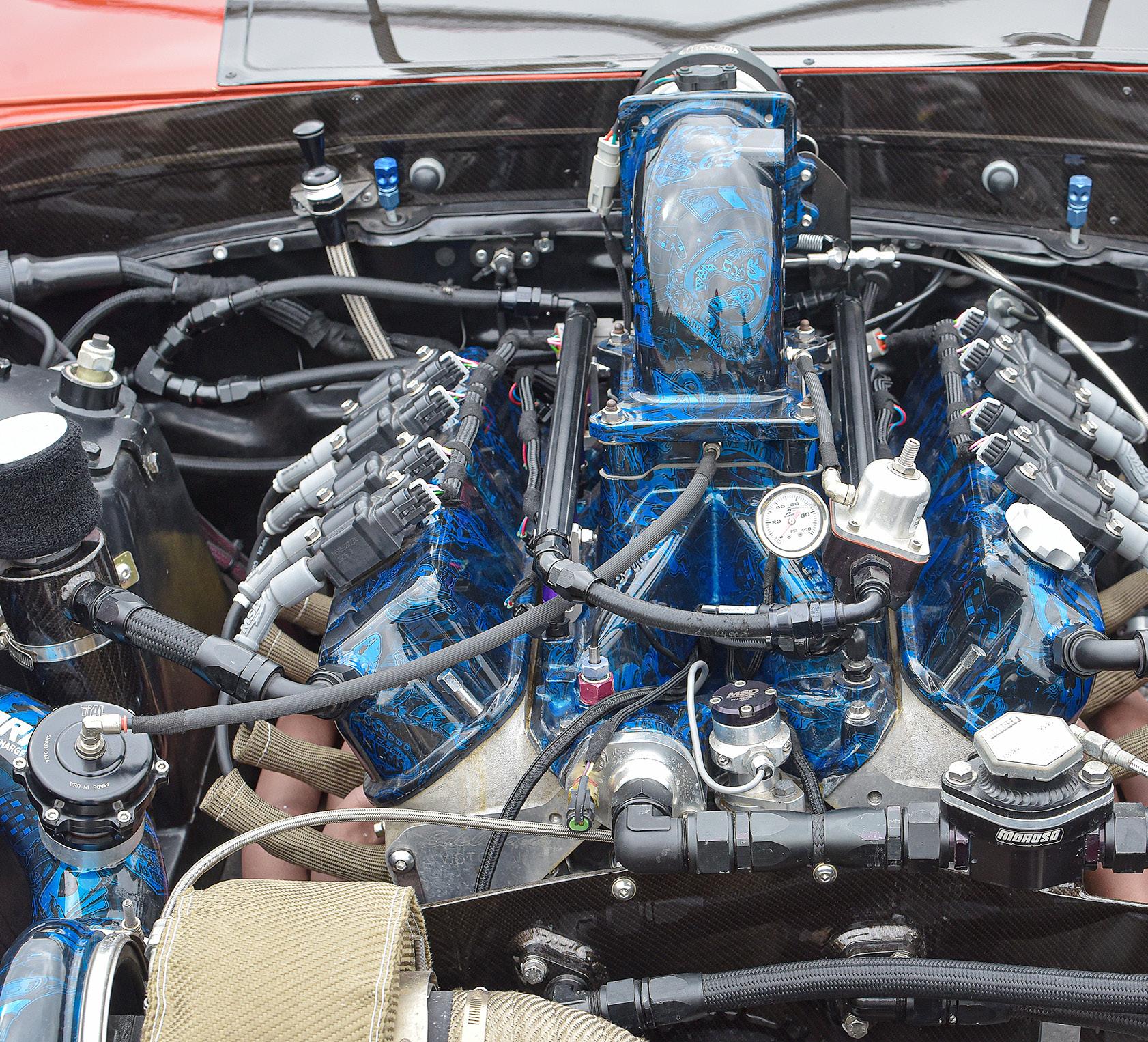


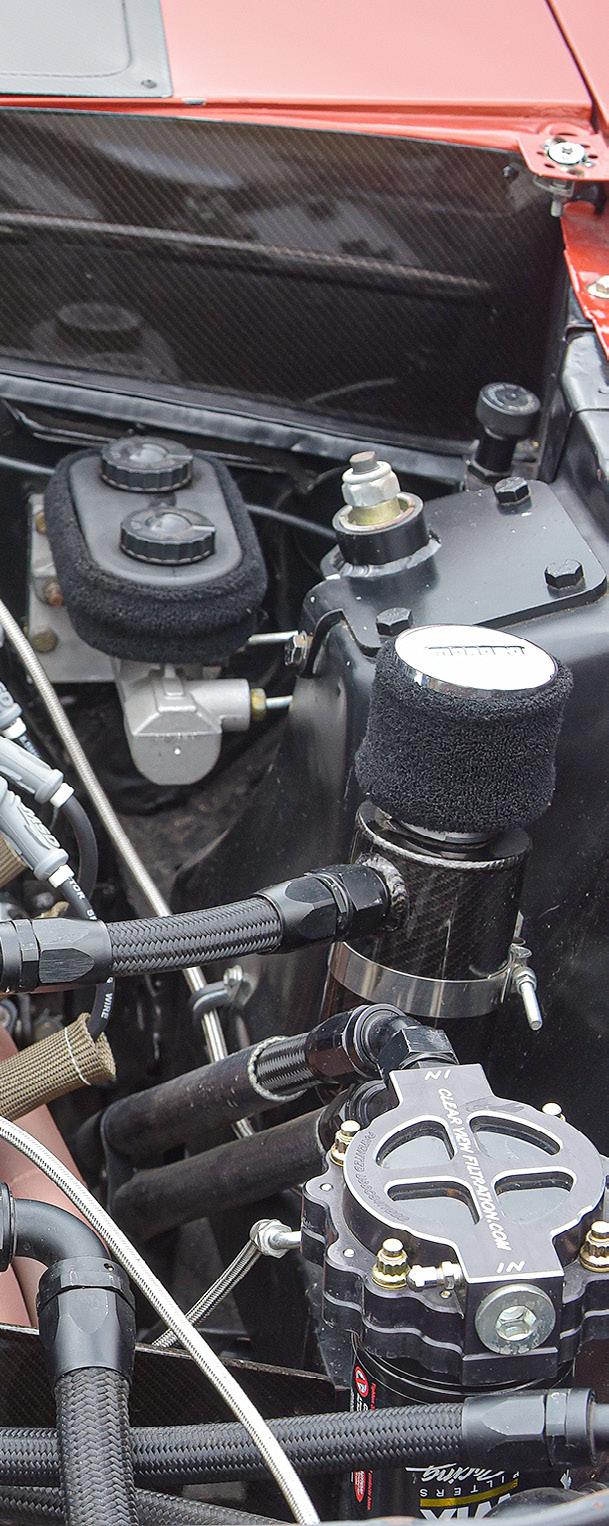
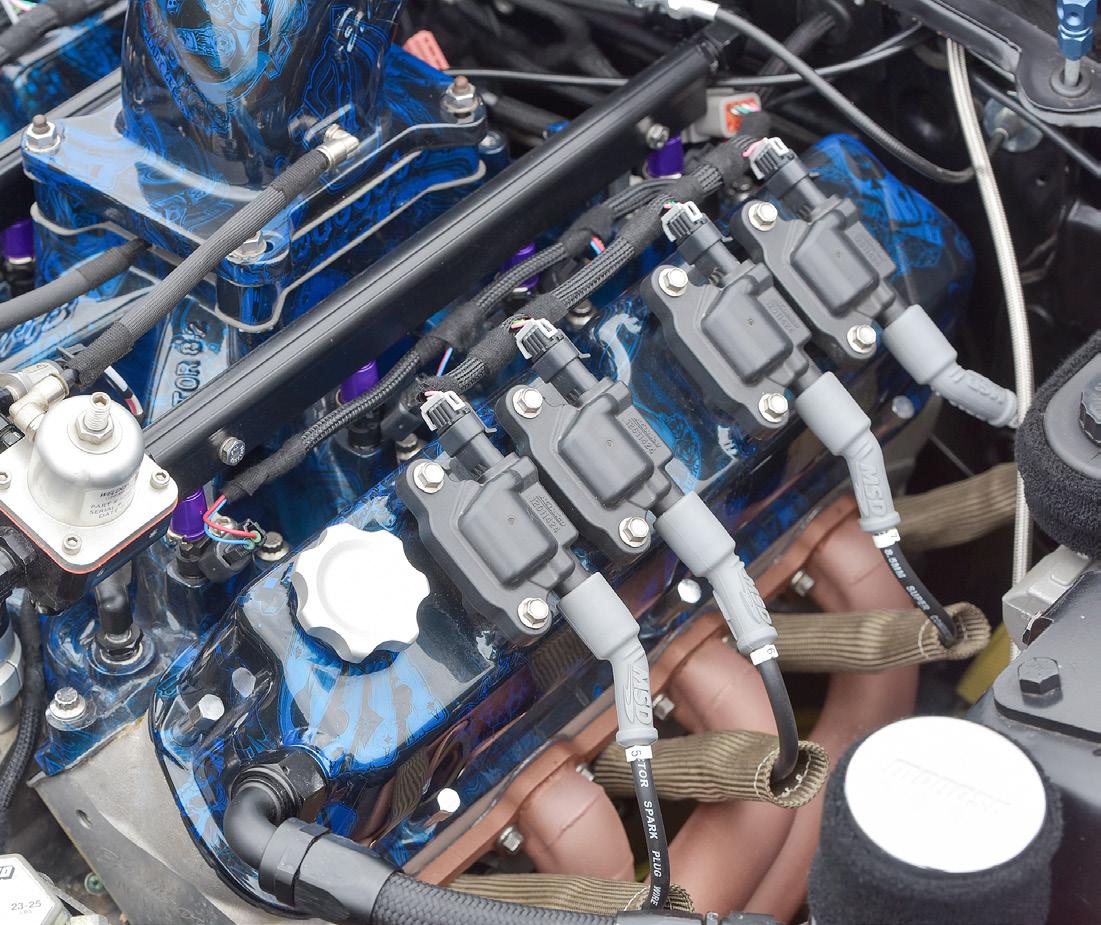

Armed with a new FT500 from MJB Performance, Cataline got the car wired and hit the dyno, where it made an impressive 987hp and 1045ftlbs of torque. Satisfied with the numbers, Mike went home to change the oil and found metal in the oil; the #3



had a rod bolt contacting the oil pump pickup that Mike admittedly neglected to check the clearance on. “Swapping from the 3.250 stroke to the 3.400, that little change made a big difference,” he explained “And it ended up spinning the bearing on #3 rod.”
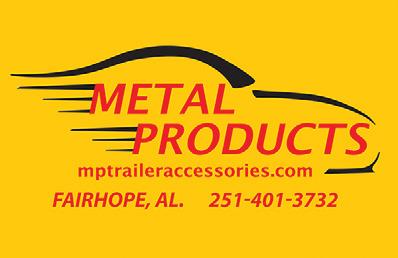


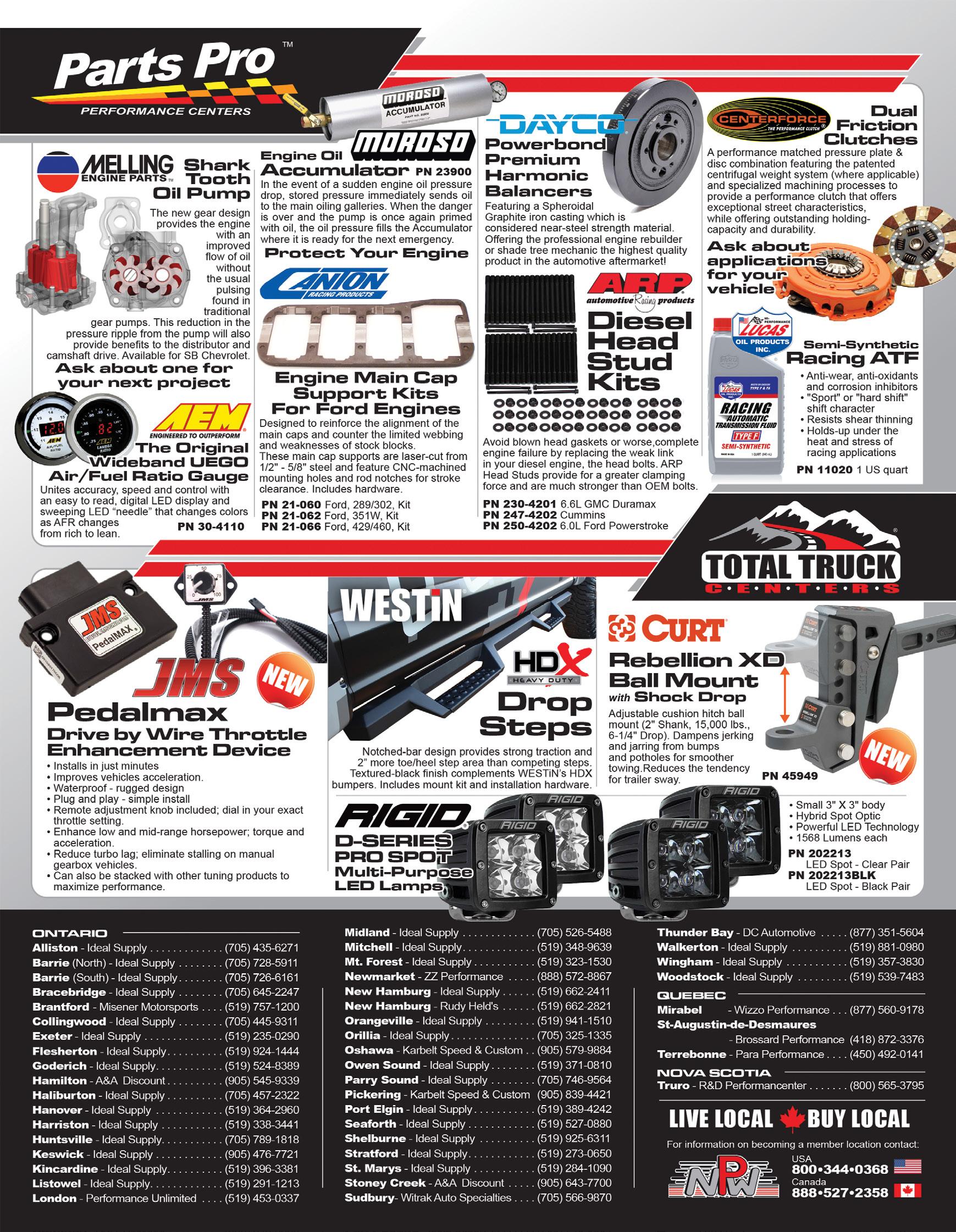
Once
Mike Cataline’s 1987 Street/Strip Turbo Small Block Mustang Coupe
■ Body & Paint:

1987 Mustang Body with a Mustang GT nose and a Kaenen hood painted Mitsubishi Sunset Orange Pearl. RCs Custom Metal Work rear wing painted and Hydro dipped at Cutting-Edge Hydrographics.
■ Chassis Modifications:


10 point cage with factory wheel tubs.
■ Suspension:
Aftermarket front and rear suspension with coilover conversion.
■ Engine:
Ford Motorsport BOSS 302, 348ci. 10.5:1 compression.
■ Rotating Assembly:
Lunati Crank and H-beam rods with custom GibTec billet pistons.
■ Cylinder Heads:
Edelbrock Victor Jr with stainless valves, LGM shaft mount rockers and custom Manton 3/8” pushrods.
■ Induction & Fuel Delivery:
Edelbrock Super Victor EFI intake with ID1700X injectors and twin Holley 450 in-tank pumps, all controlled through the FuelTech FT550.
■ Power Adder:

Work Turbochargers 88/96 turbo with a 1.32 T6 hotside and air to water intercooler.
■ Transmission:
FTI TH400 with FTI converter and FTI dump valve.
■ Rear end:
Factory length Ford 8.8 with 9” ends braced by Paul Demer at JCR Chassisworks in Weirsdale, FL. 3.55 Motorsport gears and Moser 35 spline axles.
■ Brakes:
Aerospace Components front and rear.
■ Tires & Wheels:
Holeshot Holestar wheels. 15x10 in the rear and 15x4 in the front. Mickey Thompson 275/60 Drag Radials with 26” Moroso DS2s in the front.
■ Interior:
FuelTech FT550 with built in data logging. The shifter is a Precision Performance TH400 air shifter. Lightweight aluminum steering wheel hydro dipped in carbon fiber. Race seats with RJS belts and widow net.
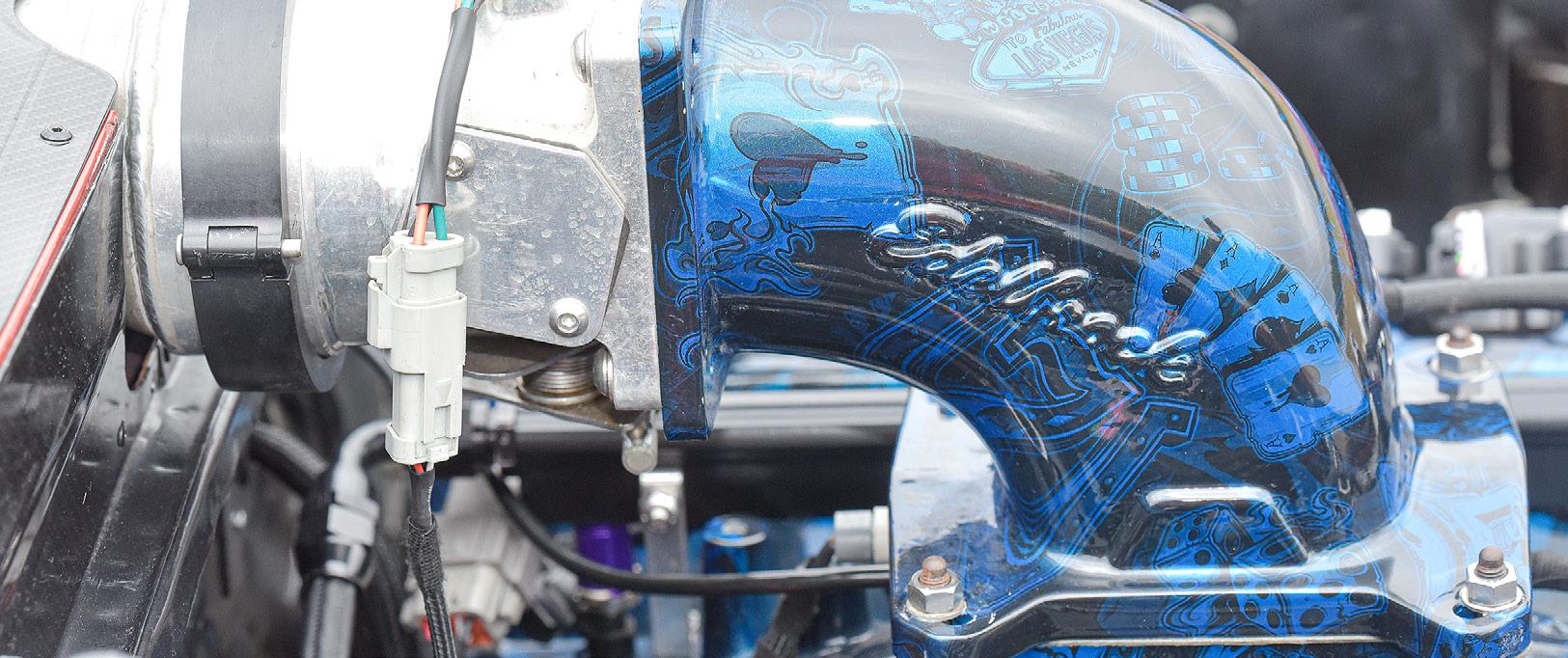
■ ET & MPH:
Best time to date is an 8.27@ 164 with a 1.19 60’ on 18lbs of boost. FuelTech’s Cameron, Jacob and Luis have been working with me to tweak the tunes to get the car going as fast as possible. Just about every time out the car goes a new personal best.
■ Thanks To:
My wife Sharon and sons Sean and Austen, without their support this would never have been possible. Brent Frazier Racing Engines, Brent got me hooked on going fast. Dwight Baldwin at Stage 6 Motorsports for the awesome turbo hot and cold side piping. Mark Hedrick at Horsepower by Hedrick for this badass 348. Tony Gonyon at Tuners Inc for the dyno and tuning time. Reed at Work Turbochargers and Troy, Scott and Dylan at FTI Performance for the killer transmission and converter. Cameron, Jacob and Luis at FuelTech for the constant tuning and tweaking. Marleen at HoleShot wheels for the awesome wheels.

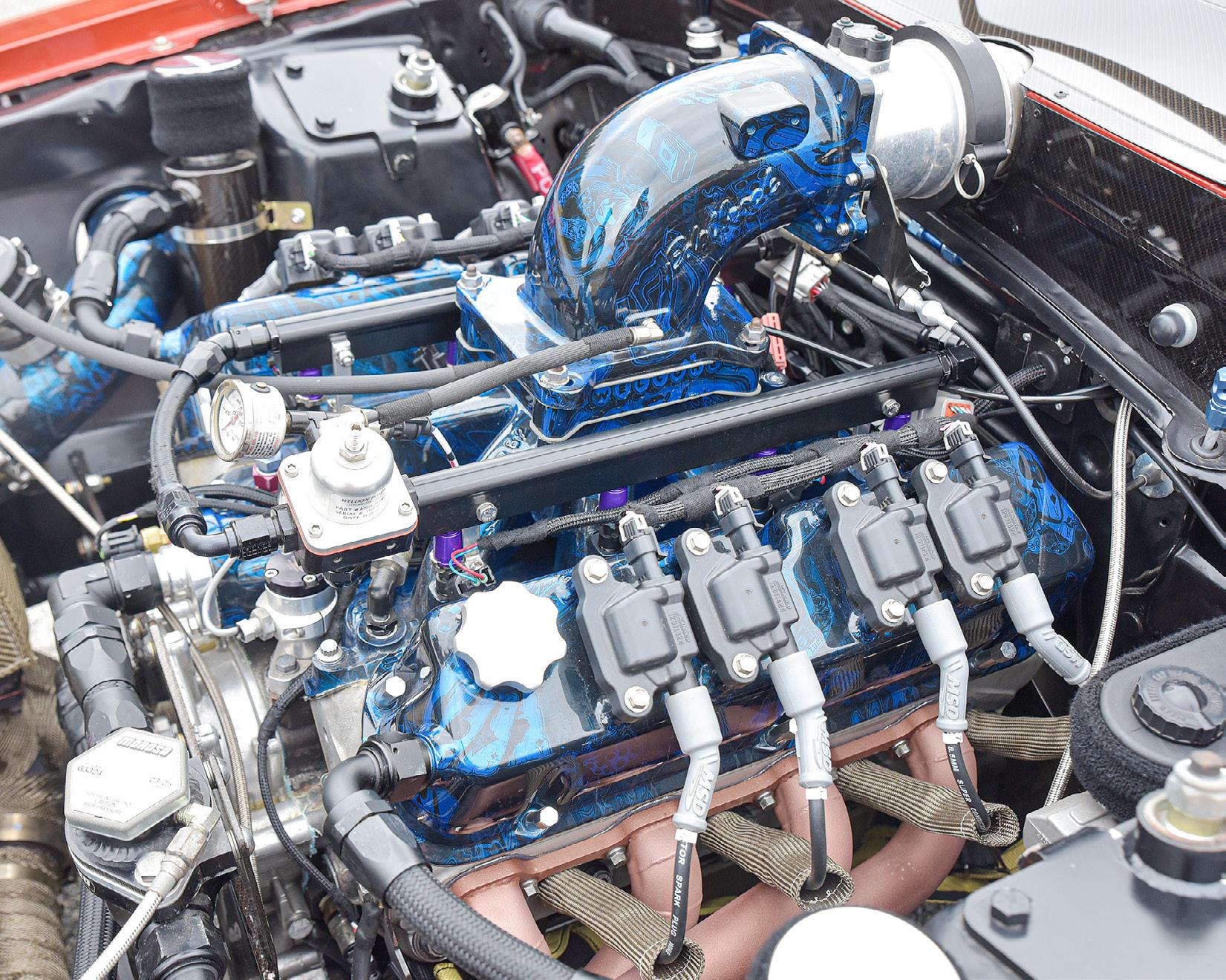







Inside you’ll find a lot of factory parts and a 10-point cage certified to 8.50, which will be updated very soon. The factory dash and trim panels were all left in place and the twin race seats have been covered to match. Mike relies on a single “gauge”, his FT550 display.


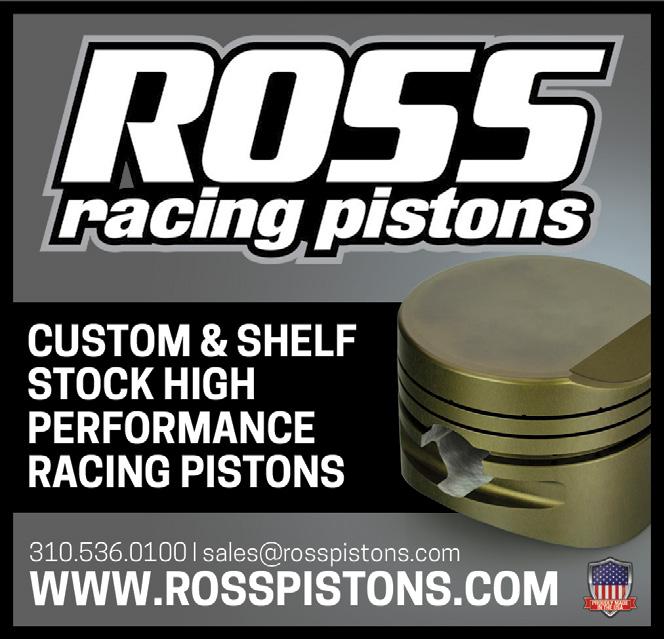


Once again, the motor came out and apart and was sent to Mark Hedrick at Horsepower by Hedrick where he took it out to a 4.135 bore and filled it with GibTec pistons, ending up with 348 cubic inches. The install is clean with Mike doing most of the work. Its virtually uncut under the hood and slick hydro graphics have been added to the turbo plumbing, intake,
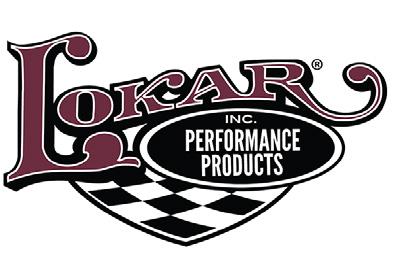


elbow and valve covers to set this turbo small block apart from the crowd. The Mustang body is all OEM steel with the exception of the GT nose and a Kaenen cowl hood. It’s painted Mitsubishi Sunset Orange Pearl and the rear wing from RCs Custom Metal Work in Wesley Chapel, FL was painted and hydro dipped at Cutting-Edge Hydrographics.

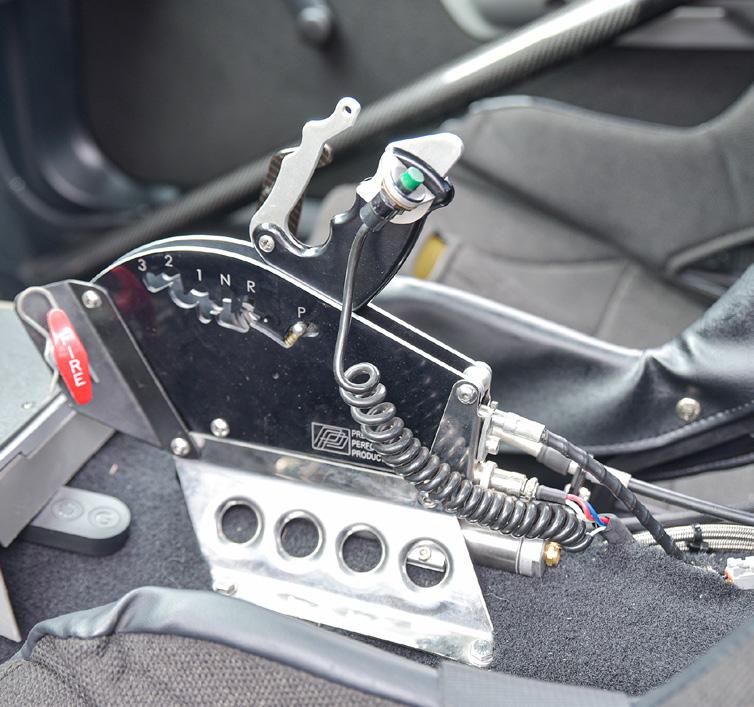
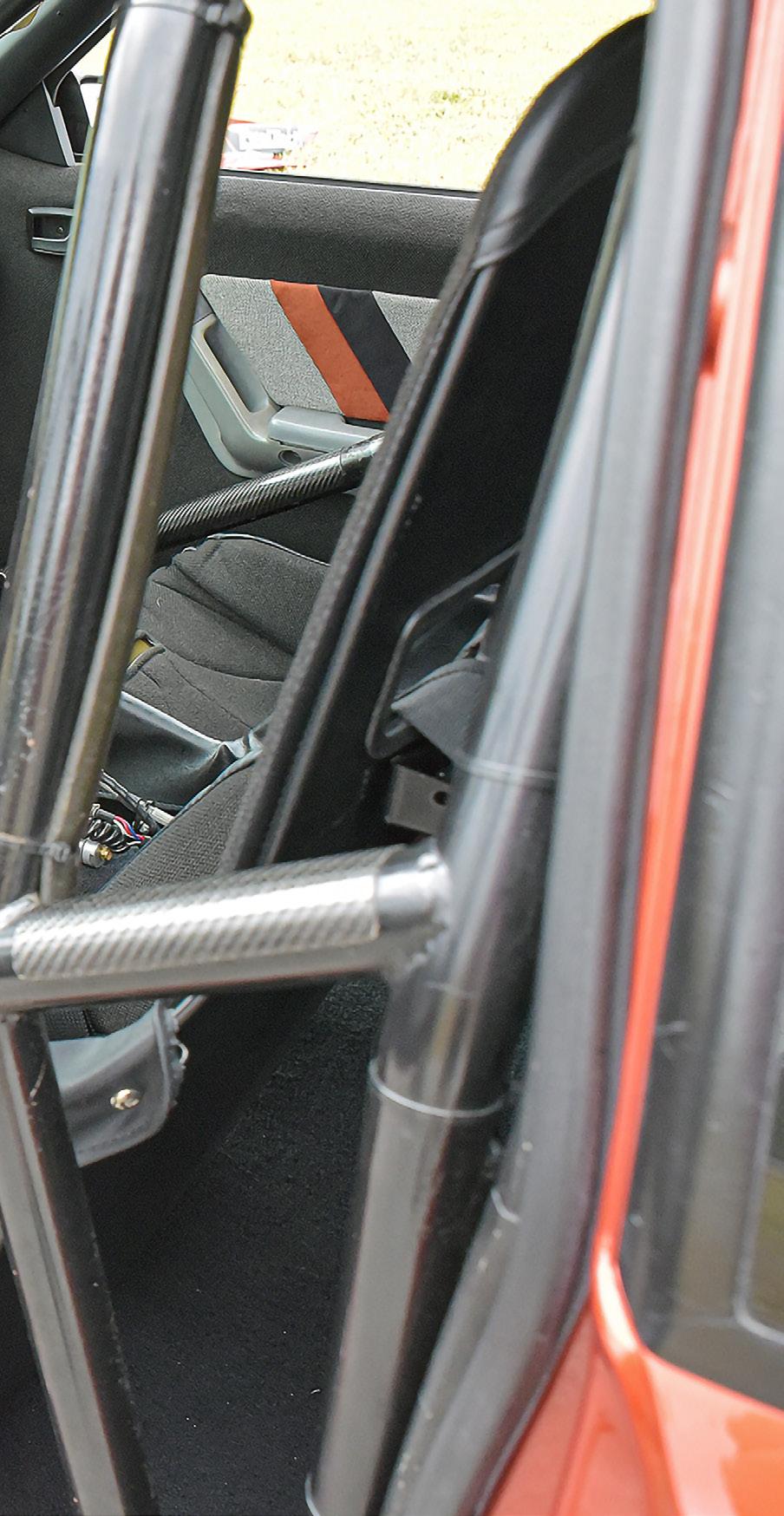

Inside, the Mustang definitely retains its street flavor. The factory dash remains and the FT550 display was installed on the column while the factory console was cut to allow for the shifter. Twin race seats reside up front and the rear seat area remains intact, although the seat itself was removed. That’s right, there’s no mini tub on this coupe, and the chassis itself

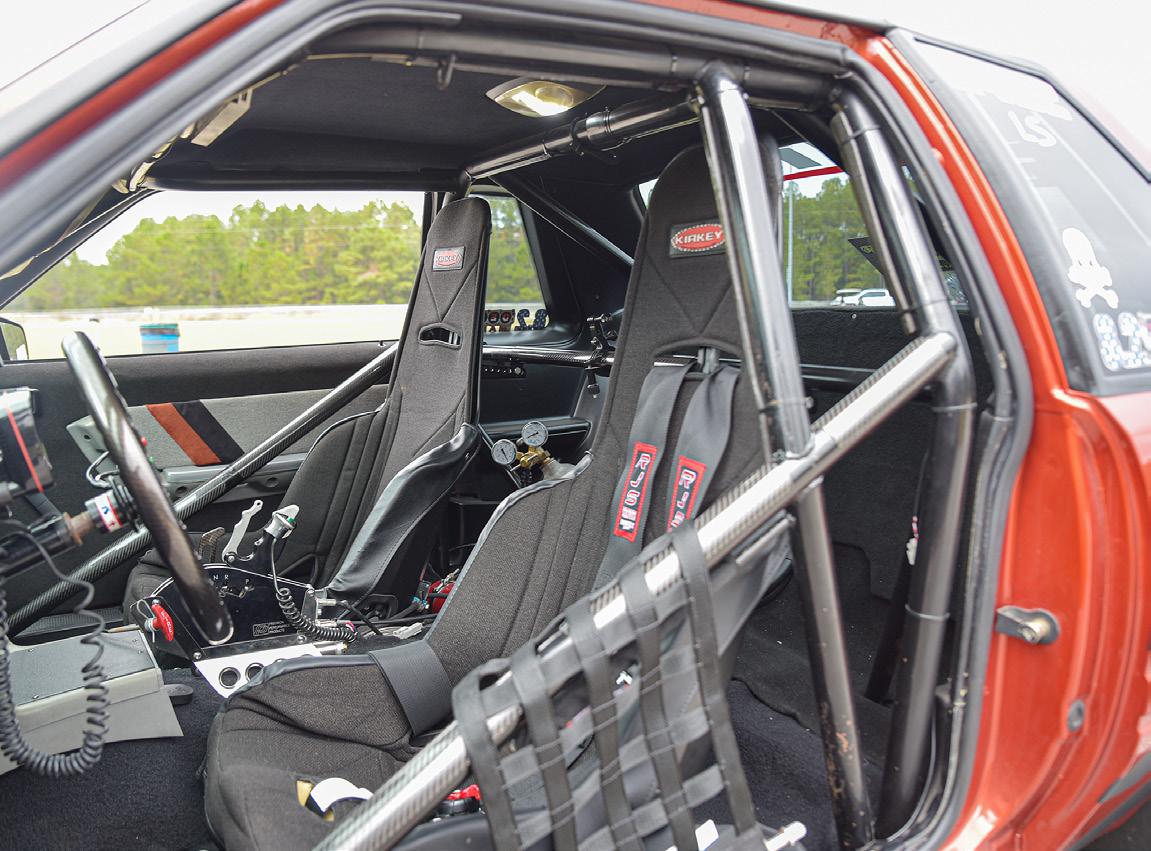
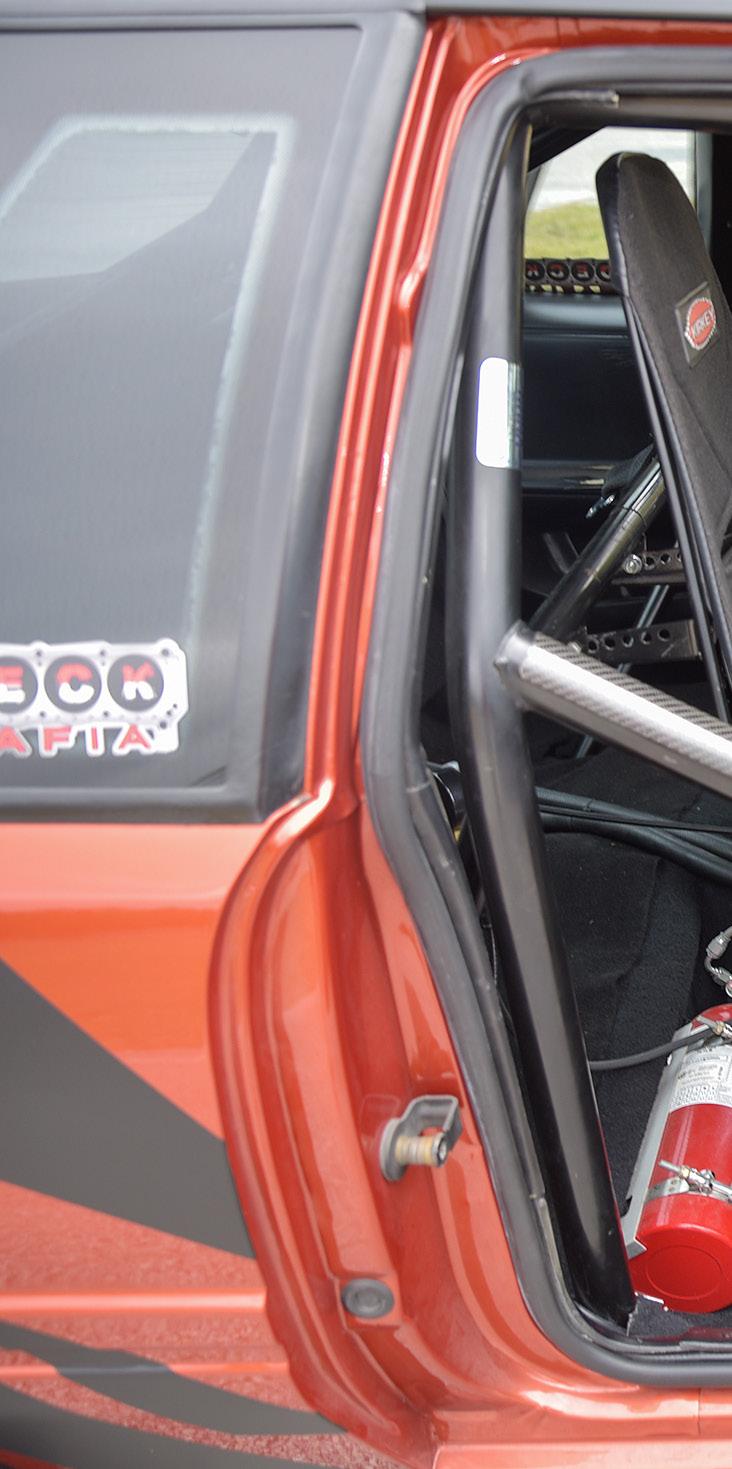
was braced, not backhalved during the cage install. Needless to say, opening the trunk on a Mustang running these numbers and seeing factory steel and wheelwells, not to mention the factory steel trunk lid, is a rare find. Rear end and suspension mods follow along the same theme with a factory length
8.8 fortified with full bracing and 9-inch ends along with 3.55 gears, spool and Mos-
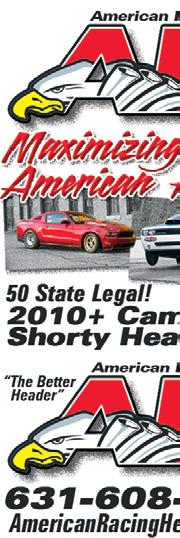
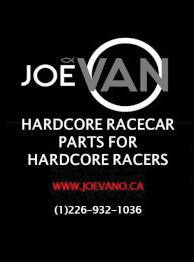









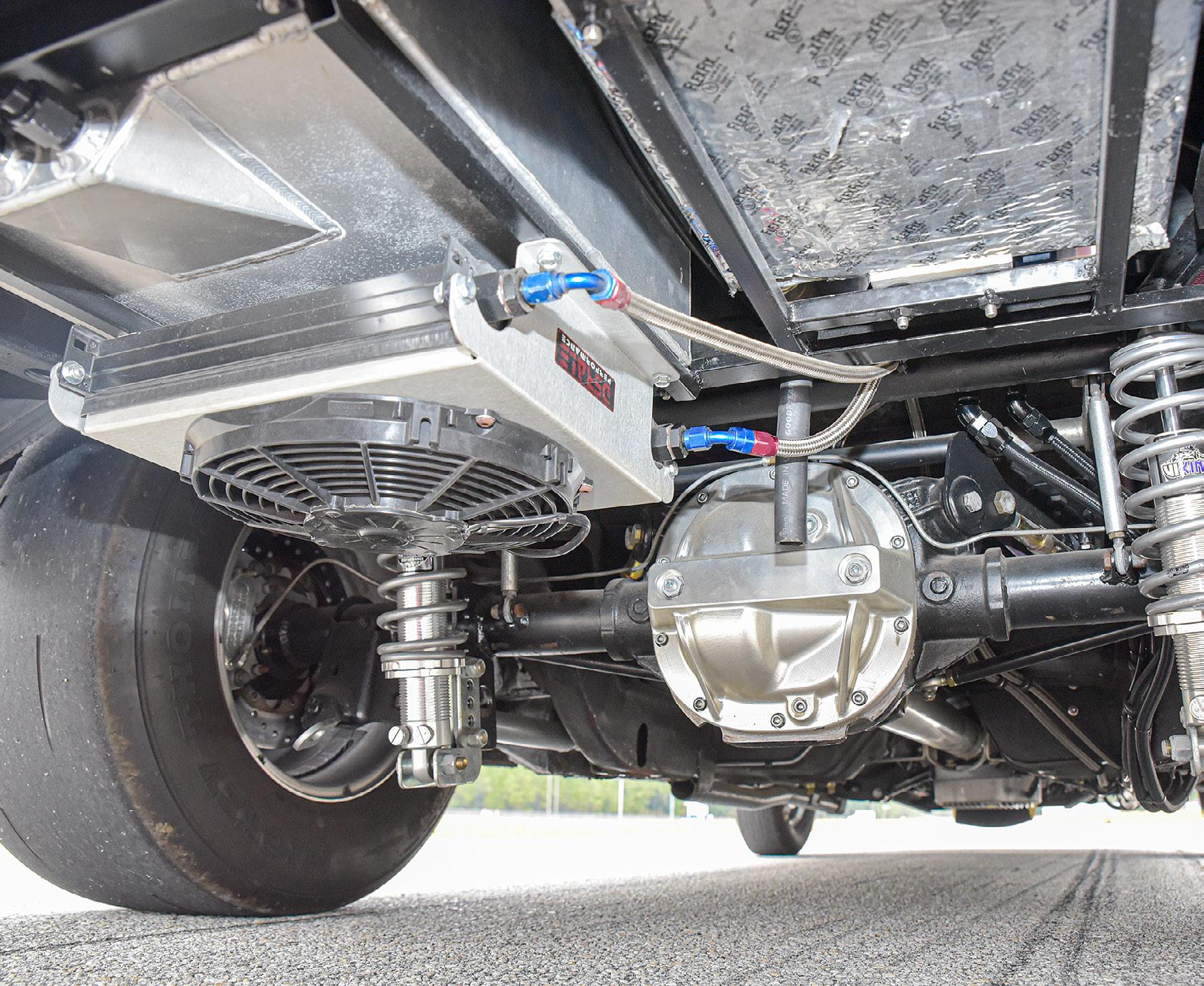
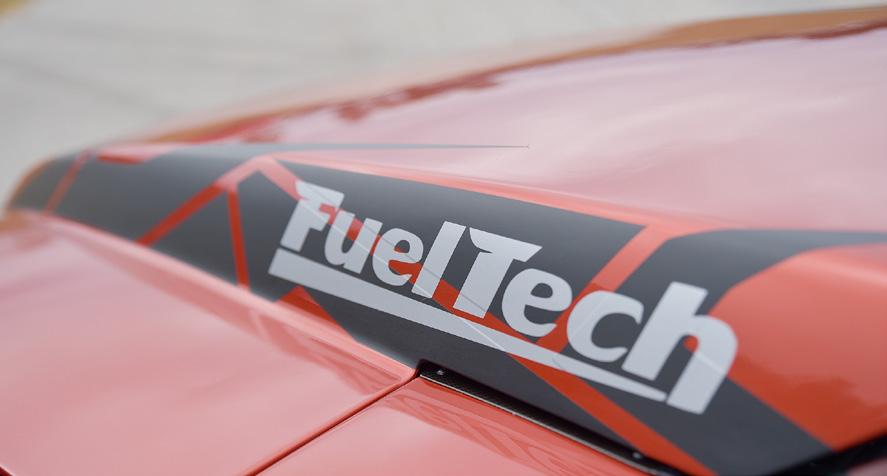



It’s a rare sight to see a factory trunk and wheelwells in a Fox Body running this strong. Under the car, a factory length 8.8 rear end has been equipped with 9-inch ends, braced and filled with 3.55 gears, a spool and Moser 35 spline axles. A coilover conversion with a host of aftermarket suspension parts hook the Mustang on race day







er 35 spline axles.
While the Fox Body is a top platform for drag racing, a coilover conversion out back is job one once you reach a certain level, and this combined with a host of aftermarket suspension parts hooks this Stang to the point where wheelstands are commonplace on the right surface.
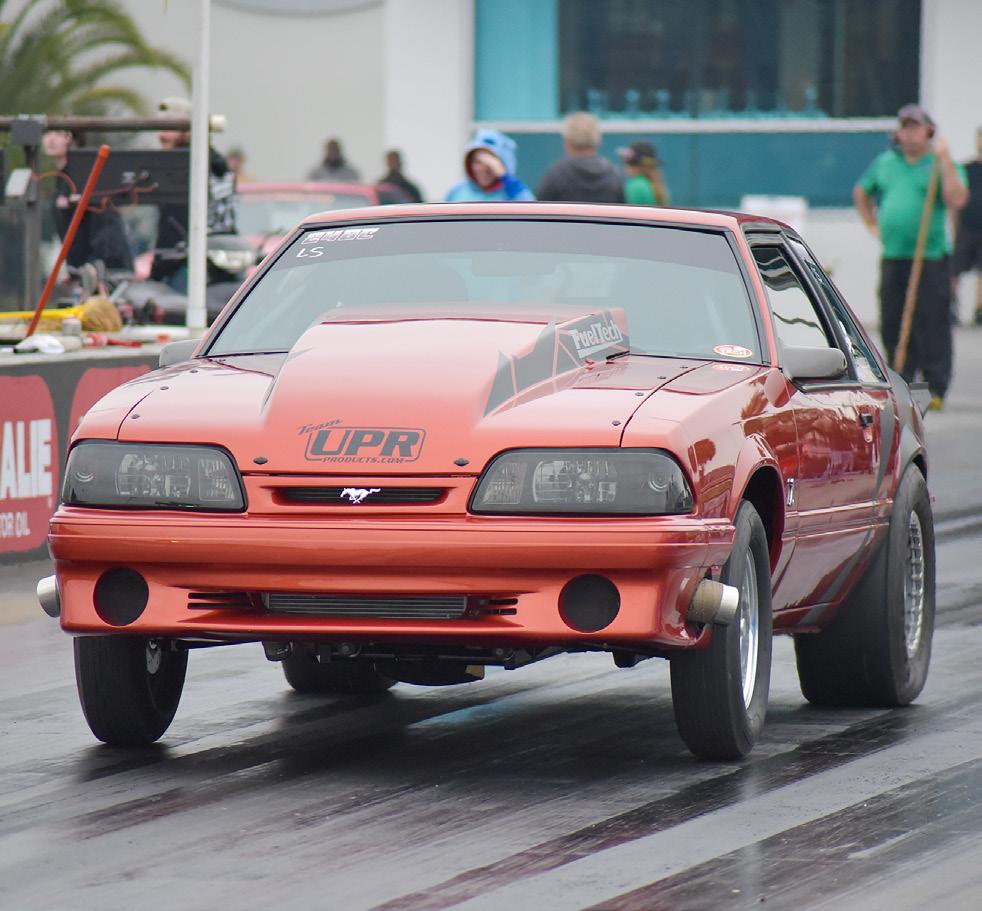

Mike wants to add more heads-up action into his rac-
ing mix this year and even some drag and drive events, after all, it is a tagged street car. Little by little, the car has progressed, getting faster and faster every time Mike makes a hit. Thus far, it’s been in the 8.20 zone at nearly 165 mph at Gainesville Raceway, and Cataline guarantees a 7 second pass very soon, that is if he can keep it off the bumper!

STICKEY MICKEYS



